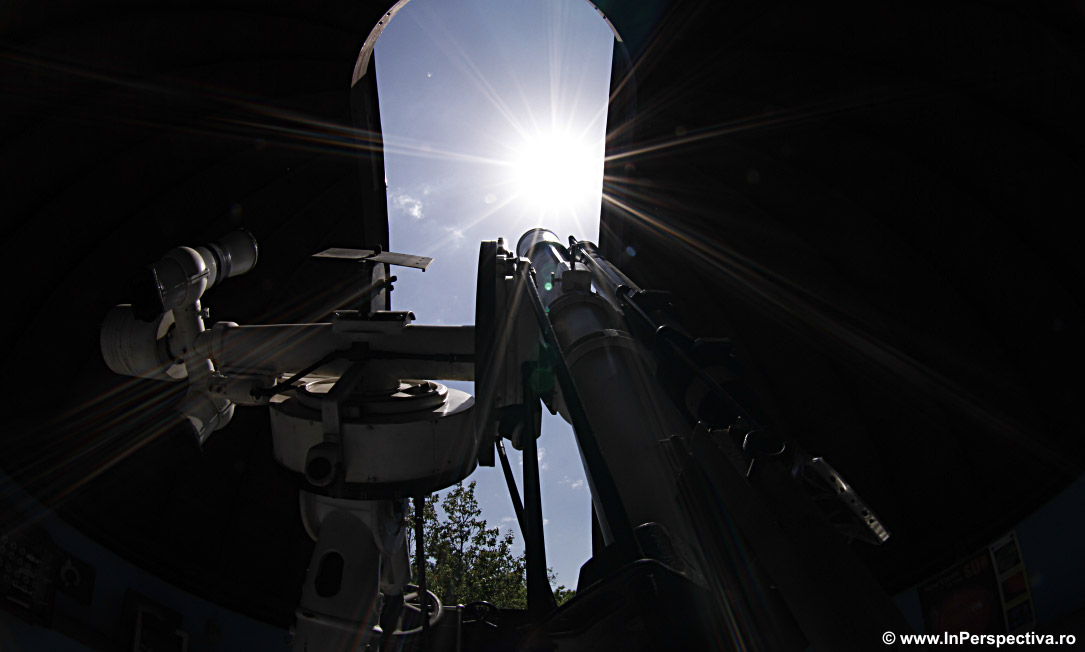A Romanian astronomer helps solve the mystery of water differences between meteorites and asteroids
Dr. Simon Anghel, a researcher at the Paris Observatory and the Astronomical Institute of the Romanian Academy, is part of a team of researchers who investigated why meteorites found on Earth contain significantly less water than the pristine samples brought back by space missions from asteroids like Bennu and Ryugu. Many researchers believe that asteroids like these, were important sources of water for early Earth.
Although astronomical observations indicate that most near-Earth asteroids should be carbonaceous, less than 4% of meteorites discovered on Earth are carbonaceous chondrites. For a long time, it was assumed that Earth's atmosphere acts as a filter, destroying these more fragile rocks during their incandescent entry as fireballs. However, research led by Dr. Patrick M. Shober (NASA, Paris Observatory), using data from several fireball observation networks (including the MOROI network, which covers Romania), suggests otherwise.
The study published in Nature Astronomy shows that thermal stress in space is the main reason.When these asteroids orbit close to the Sun, large temperature fluctuations cause them to crack and fragment before they reach our atmosphere. Thus, only the more resistant, and often 'drier', fragments survive the cosmic journey and atmospheric traversal to become meteorites. This natural selection occurring in space explains the observed discrepancy.
The published work can be found here: Nature Astronomy
Published on Apr 16, 2025
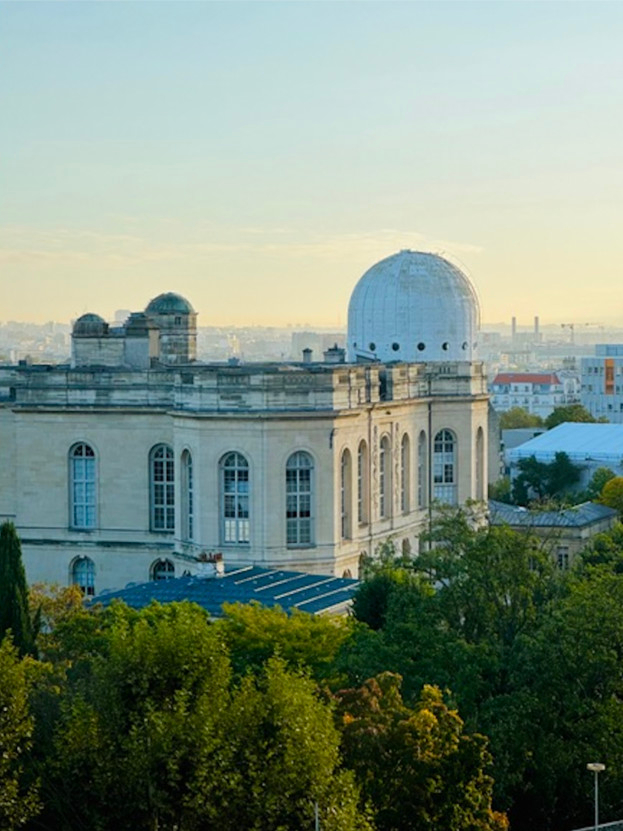
”A Different Kind of School” and ”Green Week” at the Astronomical Institute of the Romanian Academy
In March and April 2025, the Astronomical Institute of the Romanian Academy participated in the national educational programs “A Different Kind of School” and “Green Week”, organizing a series of scientific and cultural activities for students and the general public, held in the Institute’s main visitor areas: the Meridian Hall, the Equatorial Dome, the Planetarium Hall, the Planetarium Hall Foyer, the Main Pavilion Foyer, the Sun Dome, and the round garden near the Bosianu Villa.
The several hundred children and adults who visited had the opportunity to explore Romania’s astronomical heritage and learn, through interactive methods, about the Universe and the role of scientific research. For example, an educational 3D video about the physics of the Sun - viewed with the help of anaglyph glasses, facilitated the understanding of the processes taking place in the solar atmosphere and how the Sun influences Earth.
The refracting telescopes and fundamental pendulums in the Meridian Hall, the 6-meter-long astrograph telescope in the Equatorial Dome, and the vast collection of thousands of astrophotographic plates made at the Astronomical Observatory in Bucharest illustrated Romania’s significant contribution to international scientific research.
In the Sun Dome, visitors discovered the Romanian daily solar patrol activity, through which sunspots and other phenomena related to our neighboring star’s activity are systematically monitored. Additionally, in the Planetarium Hall, a presentation using Stellarium software guided children among stars, constellations, planets, and comets in a digital simulation of the night sky.
The event also included a journey through the history of Bosianu Villa, with our young visitors walking in the footsteps of visionary Romanian patriots, and perhaps even of Alexandru Ioan Cuza himself, who, in 1859, held secret discussions within this building about the creation of a modern state called Romania.
Published on Apr 16, 2025
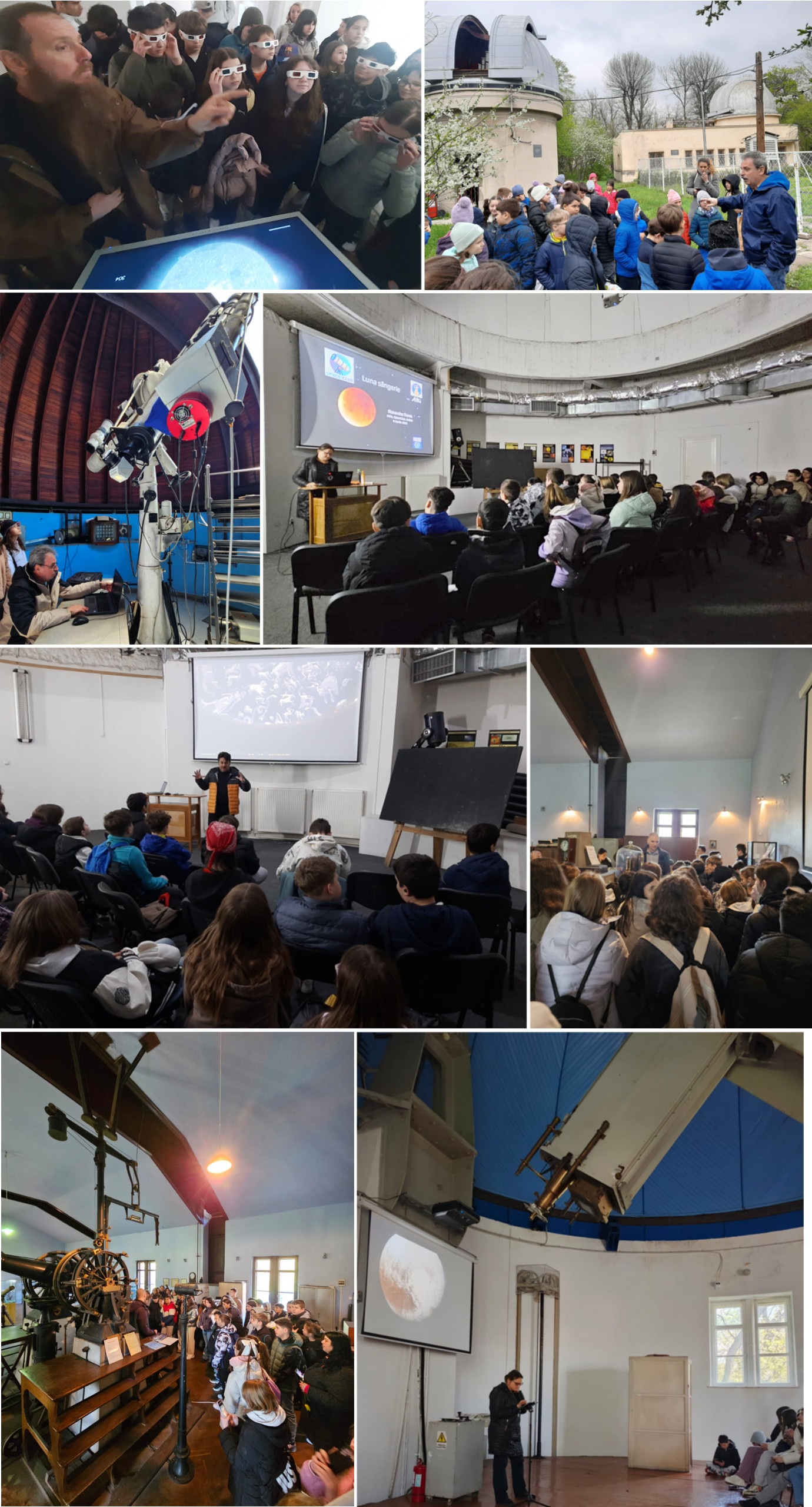
Time zone change for 2025 - 30th of March 2025
Time Zone Change for 2025: Explanation and Astronomical Effects
A time zone change refers to the adjustment of the standard time observed by a country or region, either due to transitions to Daylight Saving Time (DST), legislative decisions to change time zones, or global adjustments in time measurement. In 2025, various locations worldwide may experience time zone changes due to government decisions, energy-saving policies, or synchronization with economic partners.
Causes of Time Zone Changes:
Astronomical Effects of Time Zone Changes:
On the last Sunday of March, specifically on March 30, 2025, at 03:00 AM, clocks will move forward to 04:00 AM. The return to standard civil time in Romania will occur on the last Sunday of October, when at 04:00 AM, clocks will be set back to 03:00 AM.
Published on Mar 27, 2025
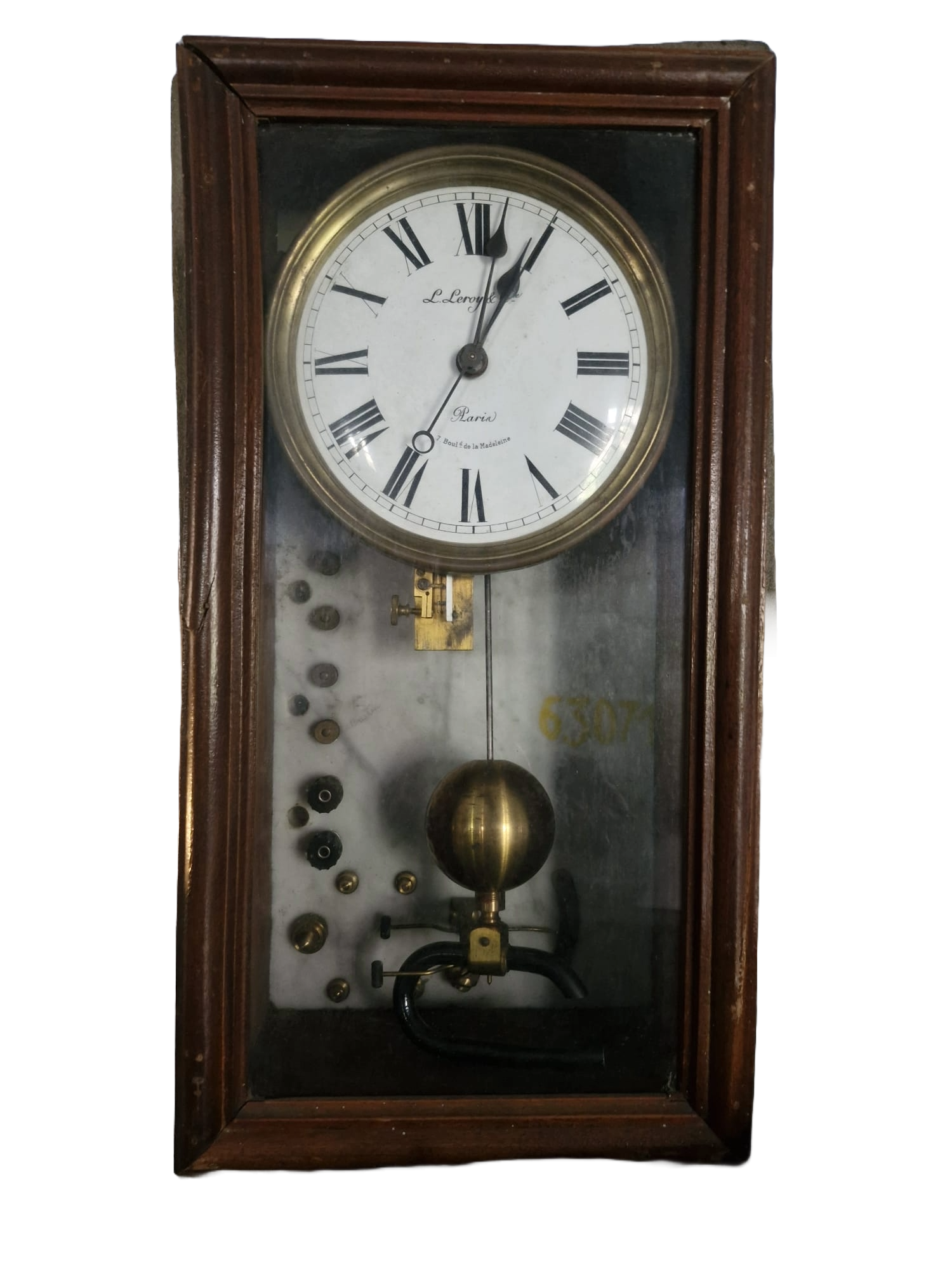
The spring equinox in the year 2025
The spring equinox in the year 2025 will occur on March 20 at 11:01:30.18 AM, Romanian Legal Time.
The Earth follows an orbit in space, which can be approximated as a great circle. The plane in which Earth's orbit lies is called the ecliptic plane. From Earth's perspective, it is equivalent to consider that the Sun follows the same orbit around a fixed Earth.
On the other hand, the Earth is tilted in space, so its rotational axis is not perpendicular to the plane of its orbit, meaning it is not perpendicular to the ecliptic plane. However, by definition, its rotational axis is perpendicular to the plane defined by the equator. This plane is called the celestial equatorial plane. The two planes—the ecliptic plane and the celestial equatorial plane—are therefore inclined relative to each other.
Thus, by definition, the moment of the equinox is the instant when the Sun is located at the specific point determined by the intersection of these two fundamental planes. In other words, during the equinoxes, the Sun is in the plane of the celestial equator. Since there is only one celestial equator (which divides the Earth in two and is perpendicular to its axis of rotation) and only one Sun, the moments of the equinoxes are unique, regardless of our location on Earth.
We define the dates of the equinoxes and solstices, which mark the beginning of the astronomical seasons, as the moments when the apparent planetocentric longitude of the Sun (including the effects of aberration and pole motion) is an exact multiple of 90°.
In the year 2025, the spring equinox will occur on March 20 at 9:01:30.18 AM Coordinated Universal Time (UTC). For Romania, this moment corresponds to March 20, 2025, at 11:01:30.18 AM Romanian Legal Time. The spring equinox for countries in the Northern Hemisphere corresponds to the autumn equinox in the Southern Hemisphere.
Published on Mar 18, 2025
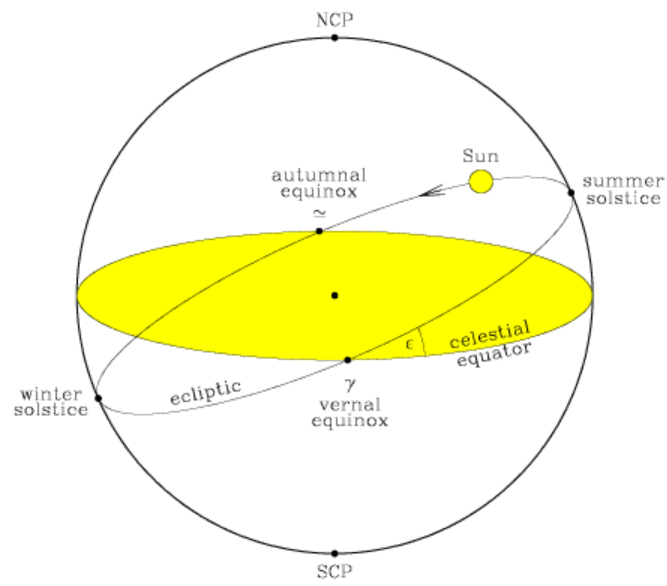
Astronomical Institute showcases the mysteries of space sciences at the French Cultural Center
On Tuesday, February 11, 2025, the Astronomical Institute of the Romanian Academy (AIRA) participated in the "In the Heart of Sciences" event at the French Institute in Romania, marking the International Day of Women and Girls in Science. The event gathered students from various high schools, offering them the opportunity to explore the world of scientific research.
AIRA’s stand was an immersive experience, featuring roll-up displays that introduced attendees to the history of astronomical research in Romania and to some of its past technological assets. The discussion on small celestial bodies in the Solar System began with an hands-on moment: students were invited to examine a real meteorite fragment discovered in Africa, billions of years old, through the microscope. This tangible piece of space set the stage for a deeper exploration of asteroids, comets and dwarf planets through a series of detailed 3D-printed models.
A special instrument of the AIRA's exhibition was the historic 1893 Bardou refracting telescope, used for solar observations. This French-made telescope offered visitors a glimpse into Romania’s long-standing contributions to astronomy.
Astronomical Institute educational team also emphasized Romania’s active role in space surveillance. The discussion expanded to our nation’s capabilities in tracking celestial objects through the MOROI (Meteorites Orbits Reconstruction by Optical Imaging) network. This system enhances the monitoring of meteors and fireballs, utilizing advanced machine learning techniques to filter and analyze celestial events.
Through this engaging presentation, AIRA inspired young minds to look beyond Earth and consider careers in science and technology. The institute remains dedicated to fostering public interest in science and astronomy and ensuring that the next generation continues to explore the vast mysteries of the Universe.
Published on Feb 13, 2025
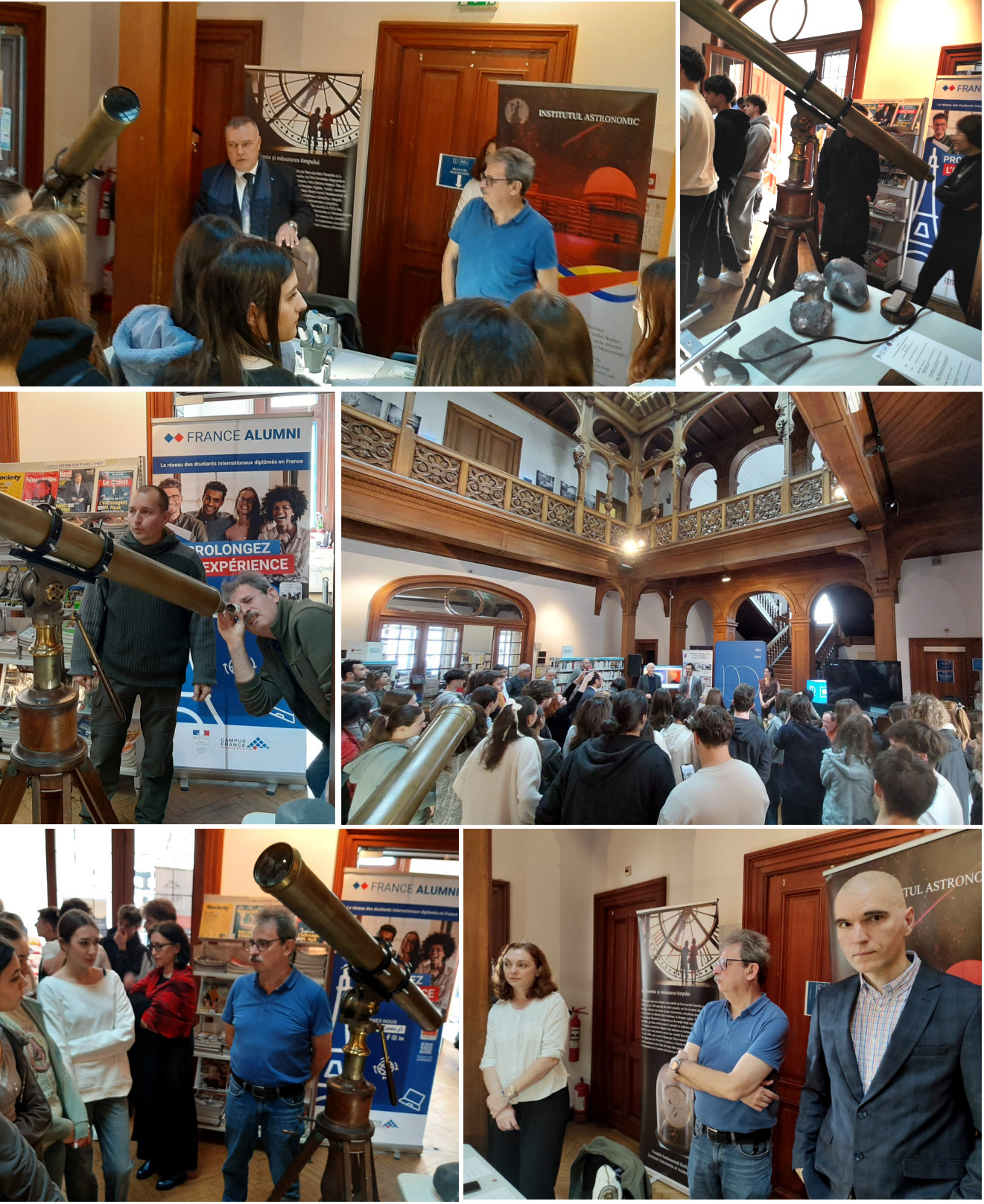
Scientific progress in astronomy and multidisciplinary dynamic assimilation in Romania
On November 13, 2024, the Cluj-Napoca Branch of the Romanian Academy hosted a roundtable discussion dedicated to multidisciplinary dynamics linked to advancements in the field of astronomy. The event provided an opportunity to reflect on contemporary developments in this domain, comparable to the great geographical discoveries of the 15th and 16th centuries.
During the meeting, discussions focused on integrating new scientific discoveries into the Romanian education system, developing Romania's research infrastructure, and enhancing specialized human resources in the field of astronomy. The debates revolved around key questions concerning the ability of Romanian research and educational institutions to adapt to this immense flow of information and the changes it entails. Among the questions addressed were the following:
- How are Romanian research and educational institutions coping with this massive flow of information and the paradigm shifts it will bring?
- What is the capacity to incorporate new discoveries into educational programs?
- How capable is Romania’s research infrastructure of aligning with global standards?
- How far are we from achieving a critical mass of researchers in astronomy to meet the challenges of our time?
The event brought together astronomers from the Astronomical Observatory in Cluj-Napoca and the Astronomical Observatory in Bucharest, both part of the Astronomical Institute of the Romanian Academy, alongside experts from related fields such as mathematics, physics, philosophy, computer science, and other cultural areas.
Published on Nov 15, 2024
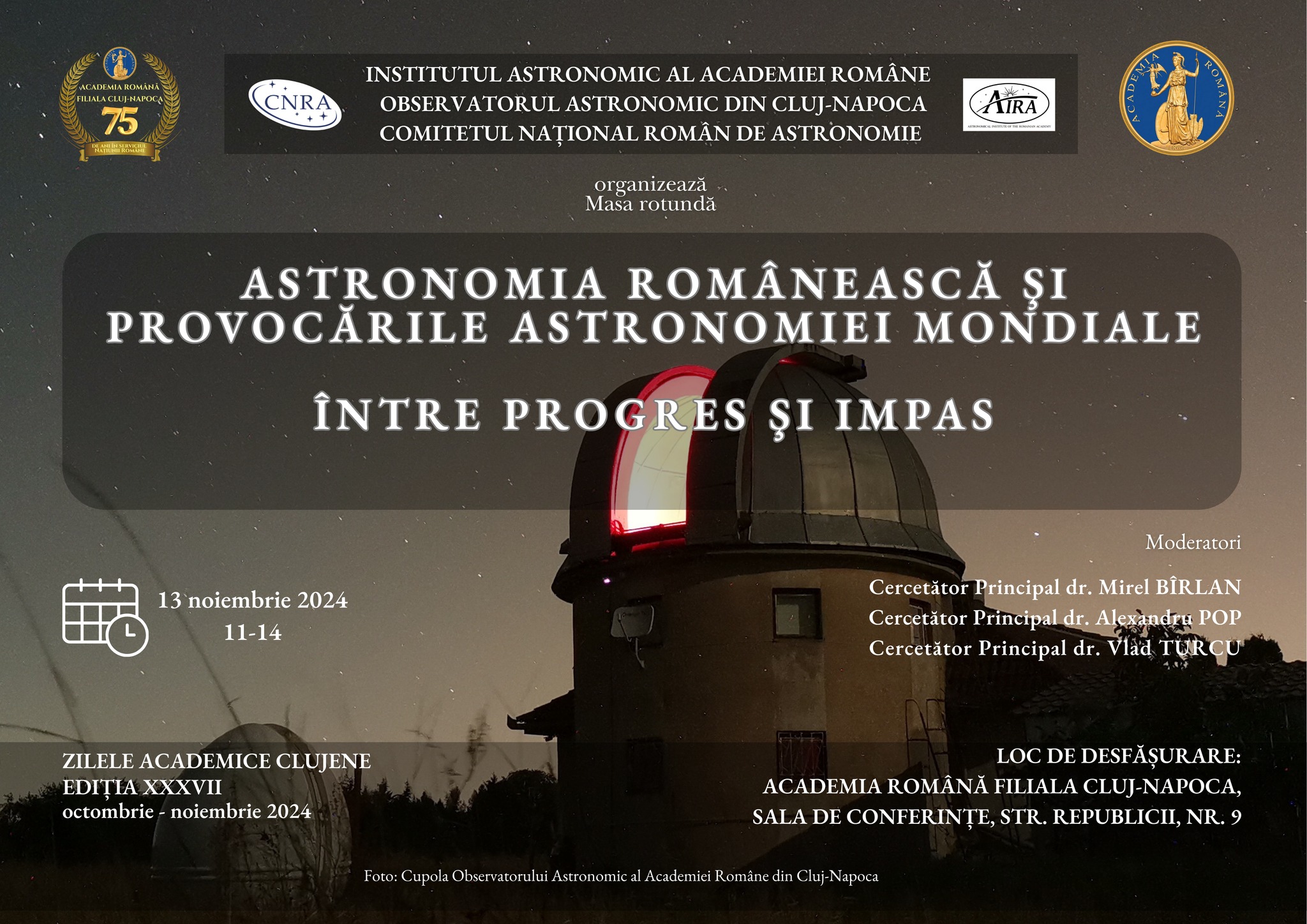
Neorocks final results - Romanian astronomers get involved
NEOROCKS stands for Near Earth Objects, Rapid Observations, Characterization and Key Responses.
NEOROCKS has connected expertise in performing small body astronomical observations and the related modelling needed to derive their dynamical and physical properties, to the pragmatic planetary defense approach, which aims to provide operational loops and information systems to protect citizens and ground infrastructures from potential threats. For more than three years the European consortium collected astronomical observations, modelled dynamically and physically surfaces and internal properties of Near Earth Objects (NEOs).
One of the objectives of NEOROCKS is to characterize as many Potential Hazardous Asteroids (PHAs) as possible in terms of their colors. NEOs have small diameters and can be observed from ground-based telescopes during close encounters with Earth. Their favorable geometries, sometimes for a time period of hours and days, need to be used to perform as many observations as possible in order to have access to several parameters that will ultimately aid in constraining their mass, shape, surface composition, surface rugosity, and internal structure.
The final results of the NEOROCKS color database are composed of 170 objects that were observed for more than 63 nights between 2020 and 2023. Most of these observations were carried out at the Observatoire de Haute Provence in France. A few observations were performed at the Pic du Midi Observatory (also in France). The survey was done in four broadband filters, namely B, V, R, and I. The sample also contains values of colors for asteroid (99942) Apophis, which will graze the Earth on April 13, 2029.
The statistics of the taxonomical types clearly indicate a large percentage of rocky silicate-rich asteroids (S-complex taxon). For objects with diameters smaller than 500 m, approximately 59% of them are S-type objects. This large percentage is mainly due to a bias induced by the surface reflectivity of objects (S-type asteroids are more reflective than C-type objects).
The chaos for the objects of the NEOROCKS color database was determined using the Lyapunov time of each object. The statistics show that the average Lyapunov time does not go beyond 100 years.
Several objects of the NEOROCKS color database have orbits similar to those of meteoroids associated with meteor showers. Among them, the asteroid 2011 OL51 was validated by two metrics used for this investigation, and it may be one of the parent bodies of the OCC meteor shower.
For more information on the subject follow the link here enclosed.
Birlan M., Barucci, M.A.,…, Sonka A.,…, Nedelcu A., …, Anghel S., et al - NEOROCKS color survey: Final results, Astronomy & Astrophysics, Volume 689, id.A334, 2024, https://www.aanda.org/articles/aa/pdf/2024/09/aa50495-24.pdf
Published on Nov 01, 2024
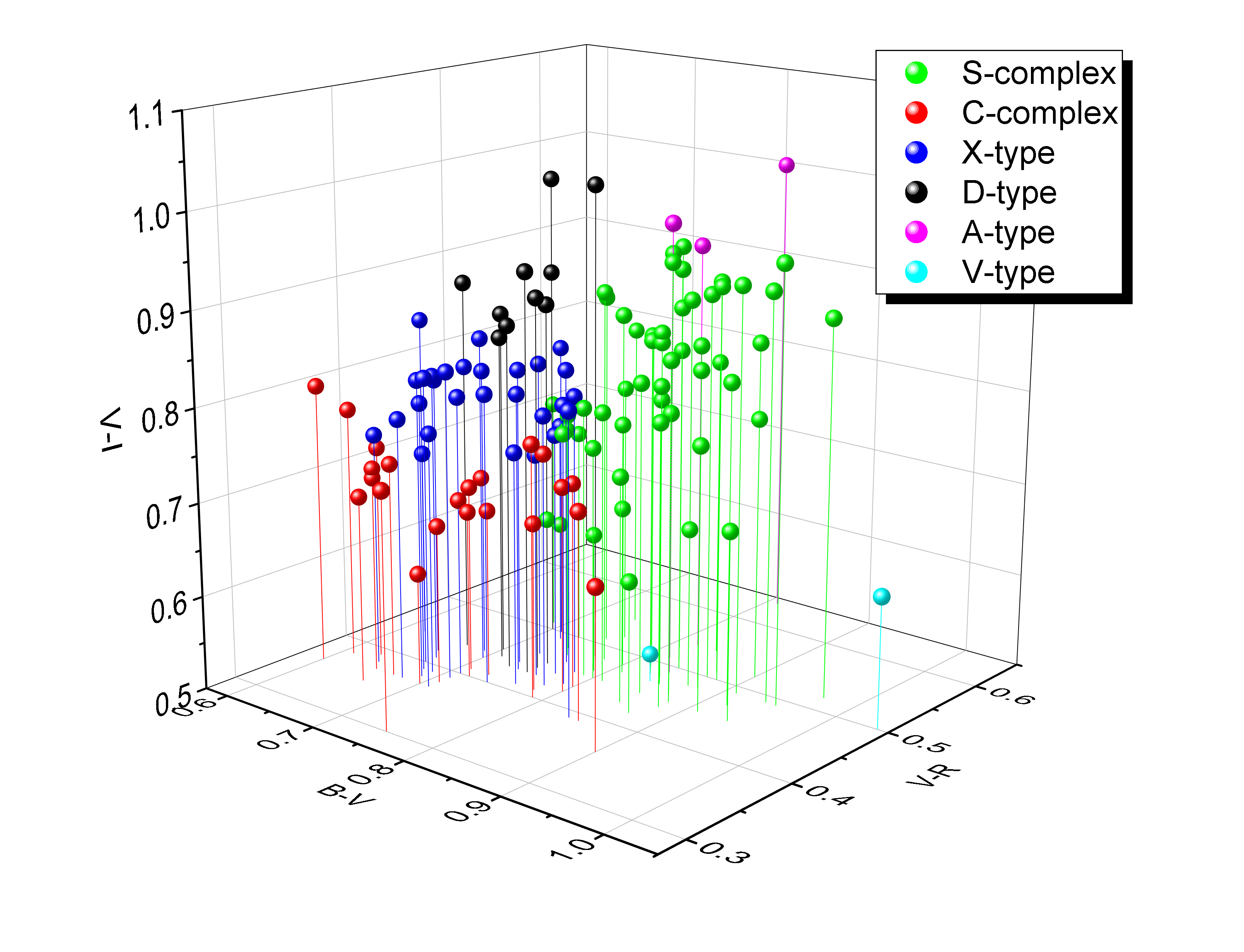
About natural disaster reduction, at the Technical Museum
On October 15, 2024, the Astronomical Institute of the Romanian Academy, in partnership with the Bucharest City Hall, Environmental Directorate - Urban Ecology Service, participated in the “CLADES NON TIMEO” project held at the Dimitrie Leonida National Technical Museum on the occasion of the "International Day for Natural Disaster Reduction."
As part of this participation, the Astronomical Institute activated several educational components. The backdrop of the Institute's stand was visually and informatively represented by several colorful thematic roll-ups. These highlighted celestial bodies that pose potential hazards to Earth, accompanied by mathematical evaluations of the probability of impact for many of them. The stand also featured an extensive modeling area with scaled 3D-printed models of asteroids and dwarf planets in the Solar System, as well as models of space vehicles similar to those that land on asteroids. Additionally, real meteorite fragments, billions of years old and discovered in Africa, were available for participants to study.
Technological transfer from the aerospace industry to everyday devices and products was also included in the discussions. Concrete examples were presented, and the dynamic issues in these fields were explained to visitors, particularly school-aged audiences.
The spectacular model of the Hubble Space Telescope was a focal point of attraction at the Astronomical Institute's stand.
A multitude of colorful lights on our models, exclamations of amazement, countless questions, and many smiling faces characterized this event.
Published on Oct 17, 2024
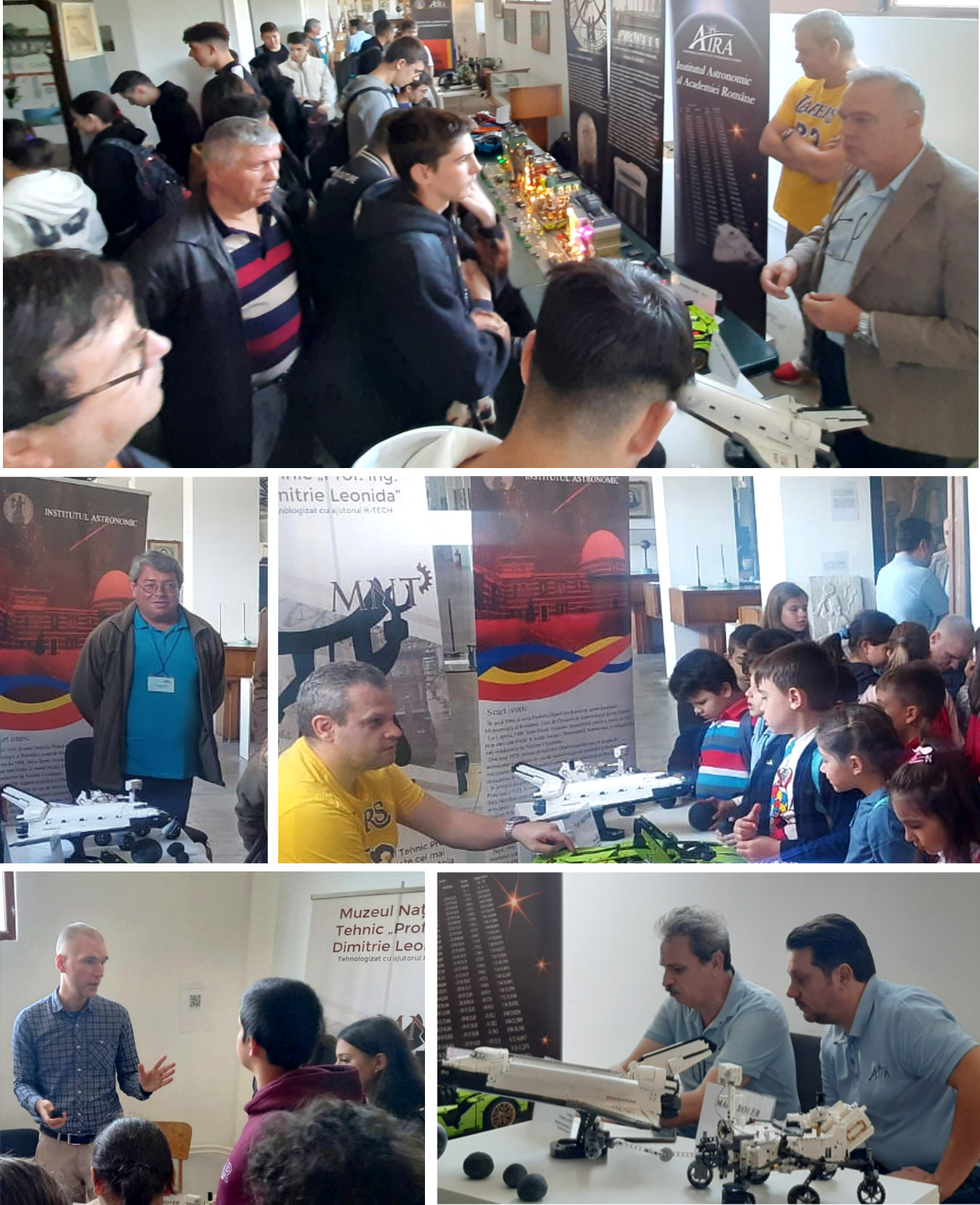
Monitoring of the Hera space mission launch from Romania
The Hera space probe, developed by the European Space Agency (ESA), was launched from Cape Canaveral on October 7, 2024, at 17:52 (Romanian time). The mission aims to study the asteroid (65803) Didymos and its moon, Dimorphos, which was intentionally struck with a projectile on September 22, 2022. Hera will analyze the aftermath of this impact to better understand how humanity might deflect a potentially dangerous asteroid, an effort critical for planetary defense strategies.
The Hera mission is part of ESA's planetary defense program and works in conjunction with NASA's DART (Double Asteroid Redirection Test) mission, which carried out the initial impact. By combining data from both missions, scientists aim to refine models of asteroid dynamics and assess the efficiency of kinetic impactors as a tool for asteroid deflection. This collaboration marks a significant milestone in international efforts to prevent catastrophic asteroid impacts on Earth.
Just eight hours after the launch, astronomers at the Romanian Academy's Astronomical Institute, from the Berthelot Observatory, observed the Falcon 9 rocket stage that launched the Hera probe as it traveled 145,000 km away from Earth. The object moved rapidly and displayed variations in brightness due to its uncontrolled rotation. While the Hera spacecraft itself was also in the images, it was too small to be detected with the telescope. Nevertheless, the observation highlighted the excitement and precision involved in tracking space missions from Earth.
Published on Oct 08, 2024
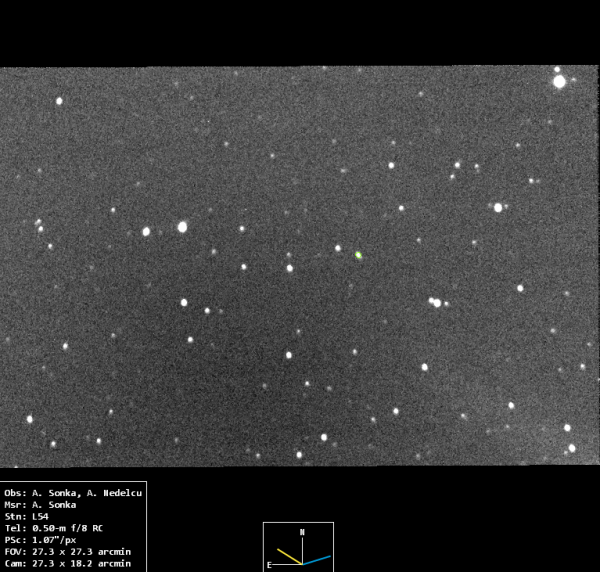
Autumn Equinox 2024
The moment of the autumnal equinox in the northern hemisphere is defined as the exact time when the apparent geocentric longitude of the Sun's center equals 180 degrees.
More commonly, in the media and society, the autumnal equinox is associated with the day in September when the length of the day and night are approximately equal.
In 2024, the autumnal equinox will occur on Sunday, September 22, at 12:43:40.82 Coordinated Universal Time (UTC), which corresponds to 15:43:40.82 in Romania's Legal Time (UTC+3, as the country will still be observing daylight saving time).
At this moment in 2024, the geocentric latitude of the Sun's center will have a value of −0.56″, the right ascension will be 12h00min0.015sec, and the declination will be −0.52″. As can be observed from the values of the geocentric latitude and right ascension, they are close to zero and 12h, respectively. For this reason, it is often said that the Sun is positioned opposite the vernal equinox during the autumnal equinox. This statement is partially accurate and acceptable because the apparent diameter of the Sun is approximately 30 arcminutes.
The autumnal equinox for countries in the northern hemisphere corresponds to the spring equinox in the southern hemisphere.
The calendar used in Romania is the Gregorian calendar. The Gregorian calendar was designed and adopted in 1582 to prevent the drifting of dates associated with seasonal changes. Thus, according to the Gregorian calendar, the autumnal equinox will always occur between September 21 and 24. In most years, it will fall on September 22 or 23. Dates of September 21 or September 24 are less common.
For example, in 2092, the autumnal equinox will occur on September 21, marking the first time this date has been used for the equinox since the Gregorian calendar's creation.
Conversely, in 1803, the autumnal equinox occurred on September 24, also for the first time since the Gregorian calendar's inception.
Published on Sep 21, 2024

The participation of the Astronomical Institute in the Splendor Hortus 2024 event
On August 8, 2024, the Astronomical Institute of the Romanian Academy (IAAR) participated in the cultural event "Splendor Hortus," organized in Cișmigiu Park by the Bucharest City Hall, through the Environmental Directorate, Urban Ecology Service. At this event, the IAAR team aimed to promote the cultural offerings of the Astronomical Institute and, more broadly, education through science and astronomy.
Participants had the opportunity to observe the Sun through professional filters mounted on telescopes. The splendor of directly observing our closest star impressed visitors of all ages at the IAAR stand, providing an excellent occasion to answer their numerous questions.
Through the modeling component we integrated into this event - a mini-planetarium featuring the celestial mechanics system of the Sun-Earth-Moon, as well as an orbital station - we were able to employ discovery and modeling-based learning methods in our effort to effectively communicate technical and scientific information, especially to school-aged audiences.
This time, through the IAAR's powerful binocular magnifier, the public viewed a fragment of the Gao Guenie chondritic meteorite, discovered in 1960 in West Africa (Burkina Faso). The fascination of directly observing an extraterrestrial object, billions of years old, and the irresistible temptation of dozens of curious little hands to study it using the sense of touch and to "adjust" the binocular magnifier delighted the future professionals of Romania's laboratories and companies.
Published on Aug 12, 2024
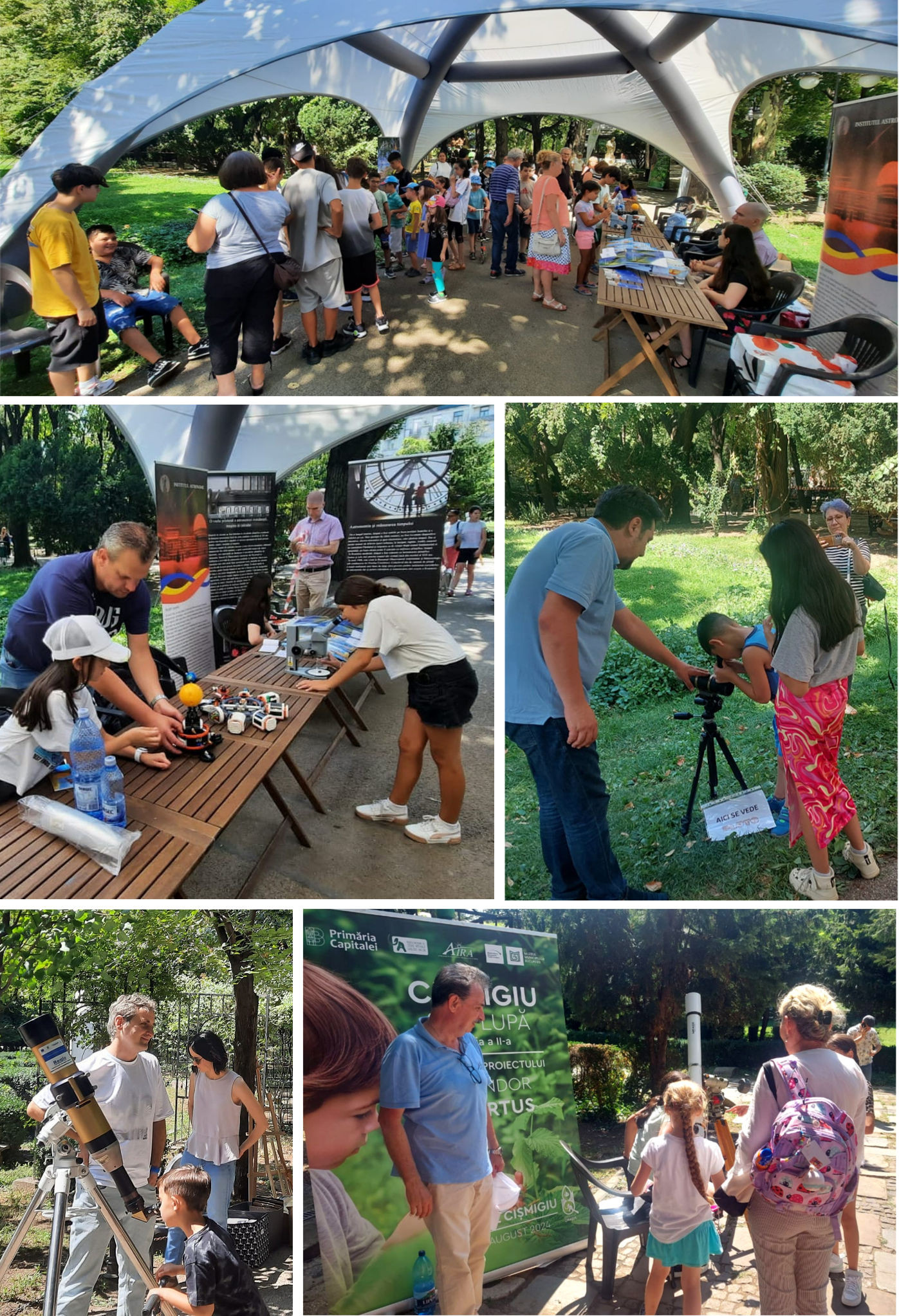
Moon Day 2024 at the Astronomical Institute: Dr. Ruxandra Toma talks about the Moon
Dr. Ruxandra Toma chose astronomy out of her childhood passion for stars and her desire to better understand the splendid complexity of the Universe through its governing laws. A dedicated professional in the field of astronomy and astrophysics, Ruxandra earned a scholarship and later obtained her doctoral degree at Queen's University Belfast (Northern Ireland, UK). She returned to Romania to contribute to the efforts of Romanian scientific research in this "science of sciences," astronomy, with her sharp intellect and tireless work ethic. Her expertise in variable stars and time-domain astrophysics research has added significant value to the dynamic scientific research team at the Astronomical Institute of the Romanian Academy.
On the occasion of the celebration of the Moon Landing, marking humanity's first steps on the Moon (July 20, 1969), Dr. Toma shares, in a brief video presentation for the general public, well-known and lesser-known facts about our closest cosmic neighbor.
Download the recording from here
Published on Jul 19, 2024
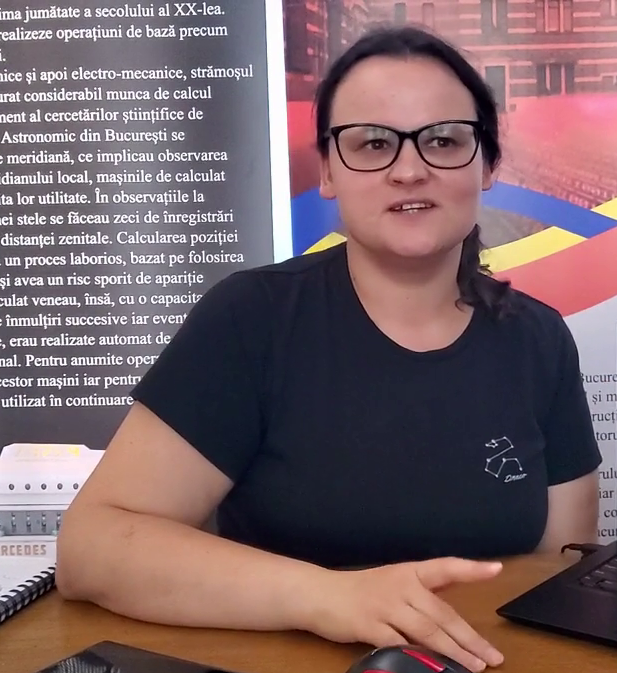
First light from the new Berthelot Solar Observatory
We obtained full disk solar images of the photosphere (WL), Calcium II K line (Ca II K) and chromosphere (HA), for the first time remotely, controlling the instruments from Bucharest. Solar activity is near the maximum of the 25th cycle and we can see many active regions with many sunspots, plages, filaments and other interesting details of the solar photosphere and chromosphere. We use three Vixen SD102 refractors on an ASA DDM85 mount, a Baader Herschel Prism for WL, a Calcium line filter and a DayStar Quantum PE H alpha filter. Further work is needed to fine tune all equipment, developing a procedure for remote work and image processing pipeline.
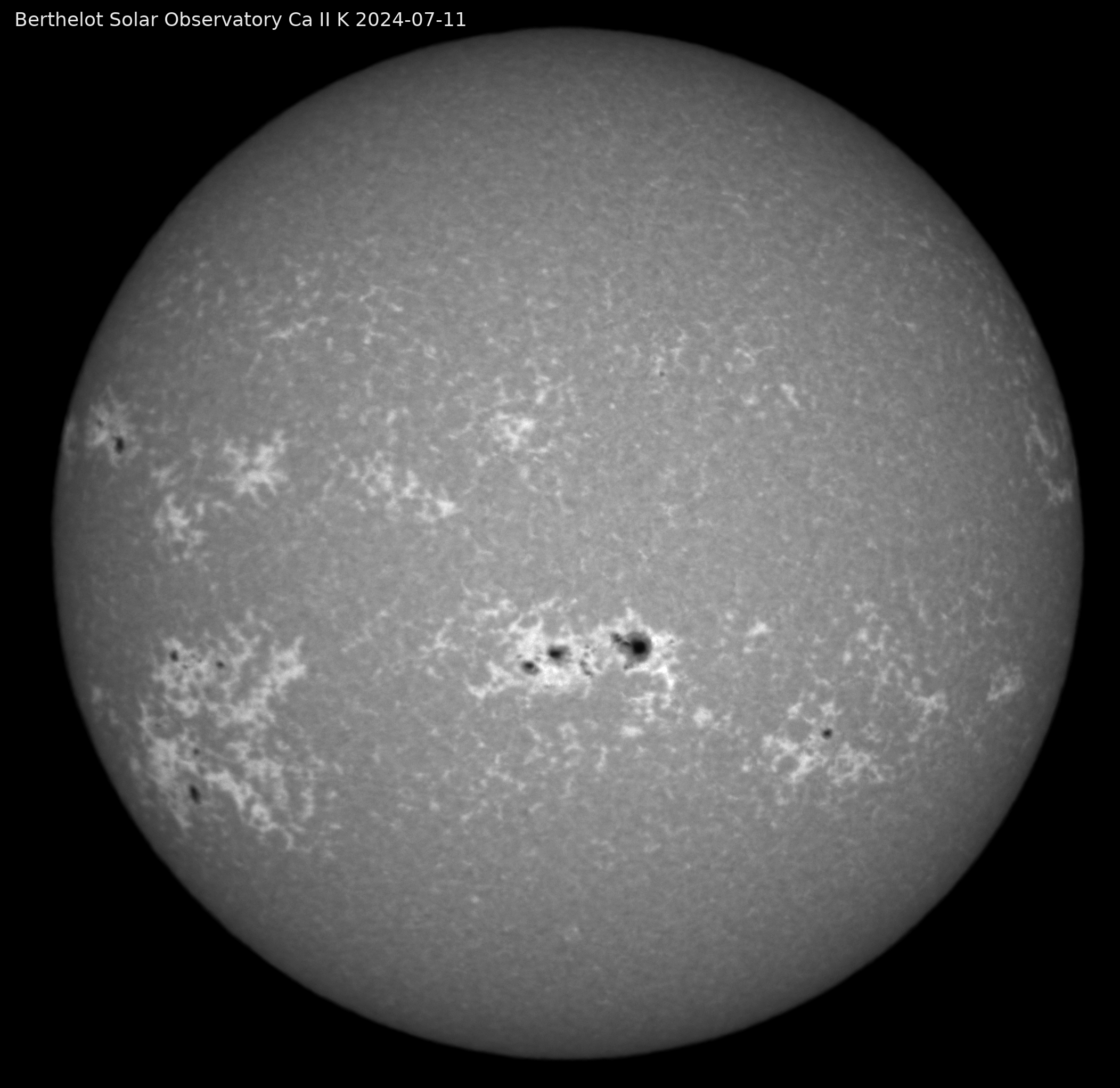
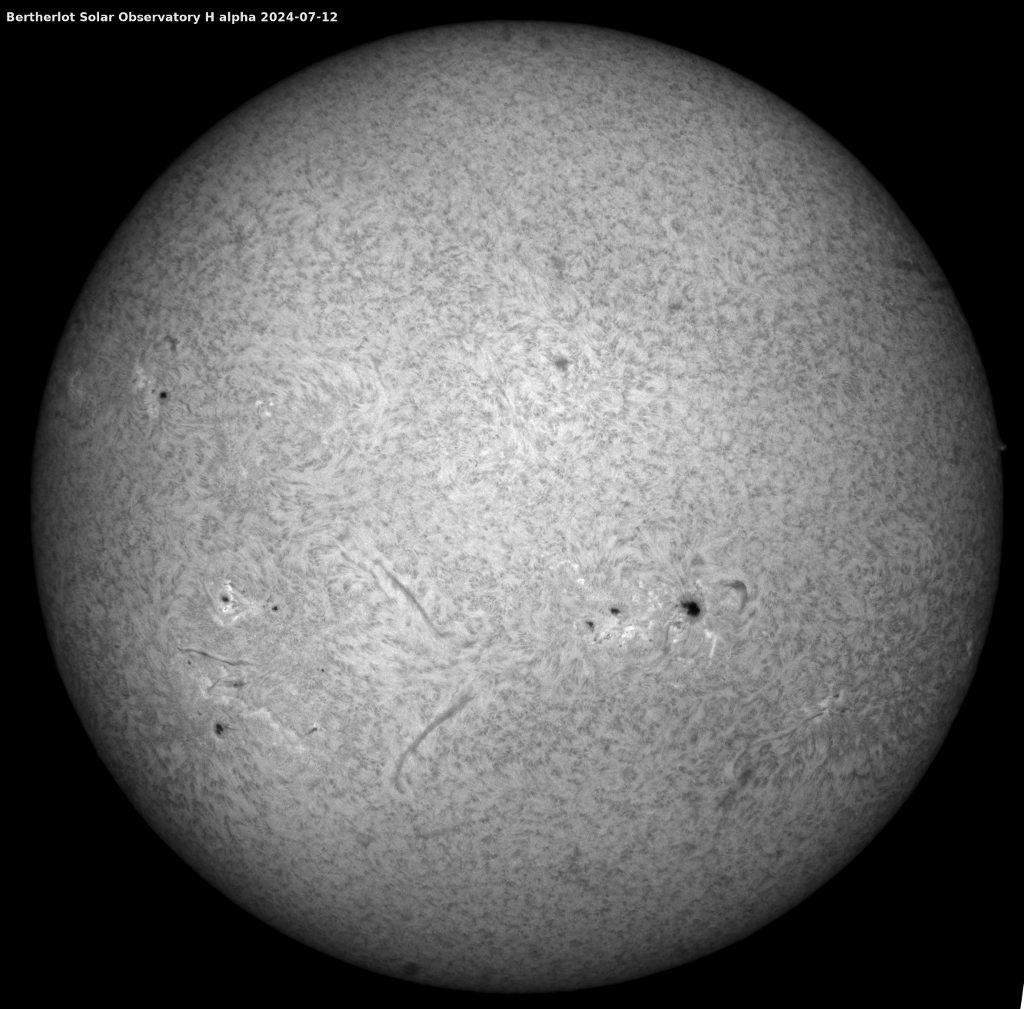
Published on Jul 19, 2024
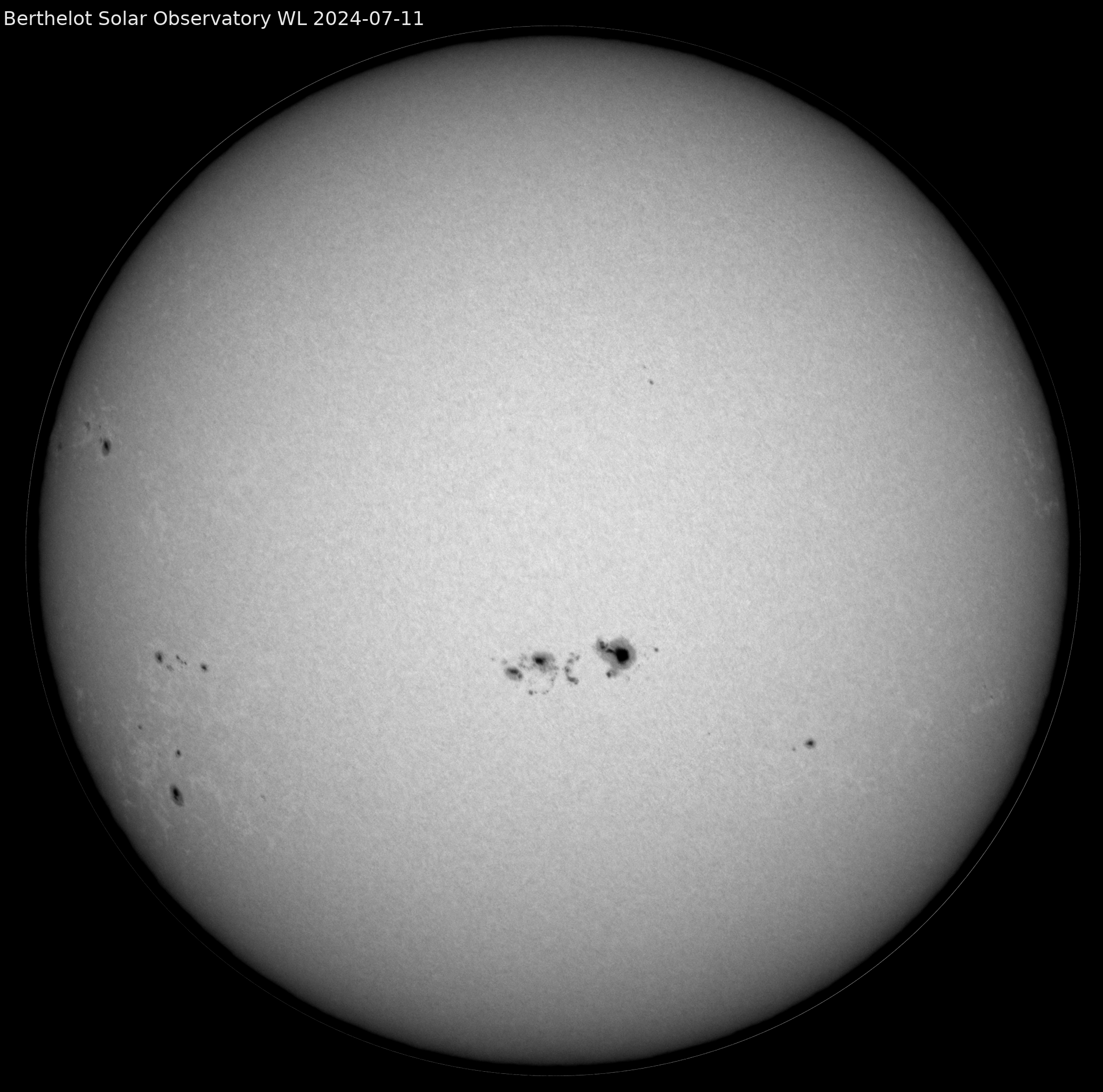
Asteroid Day 2024 – Open Doors Day at the Astronomical Institute of the Romanian Academy
Asteroid Day 2024 – Open Doors Day at the Astronomical Institute of the Romanian Academy On June 20, 2024, during the "Asteroid Day – Open Doors Day" event, a large audience had the opportunity to visit the premises of the Astronomical Observatory in Bucharest, part of the Astronomical Institute of the Romanian Academy.
As every year, the Astronomical Institute offered astronomy and science enthusiasts the chance to participate in a guided tour that included the Meridian Hall, the Equatorial Dome, the Planetarium Hallway, the Planetarium Room, and the institute's scientific park.
In the Meridian Hall, presentations were delivered by Octavian Bădescu and Sorin Marin, summarizing the main scientific research directions in astronomy and astrophysics. These were linked to the specific functionalities of the scientific instruments on display and their role in the history of astronomy in our country.
Groups of visitors of all ages then entered the Equatorial Dome, where PowerPoint presentations by Dan Pricopi and Ruxandra Toma illustrated the scientific astrophotography work conducted by Romanian astronomers in Bucharest. This work, carried out using the Prin-Merz astrograph refractor telescope, spans nearly 100 years.
Between the two former scientific research halls, the Main Hall of the Principal Pavilion hosted a spectacular astrophotography exhibition by the Romanian Meteor Astronomical Society (SARM), coordinated by the tireless Valentin Grigore.
Following this exhibition, the Planetarium Hall featured an extensive space vehicle model project created by Cristian Lazăr. In the same space, Adrian Popescu used large touch-screen terminals and 3D glasses to present various physical and dynamic characteristics of the Sun, our neighboring star.
Throughout the event, popular astronomy presentations were held in the Planetarium Room by Ruxandra Toma, Cristian Omăt, Simon Anghel, Adrian Șonka, Diana Constantin, and Valentin Grigore.
The guided tour continued in the scientific park of the Astronomical Institute, where Octavian Blagoi and Liliana Dumitru provided extensive explanations and guided visitors in observing the Sun through telescopes equipped with professional filters. Additionally, the dedicated team of Space Club volunteers from the Ministry of National Defense, led by Andra Stoica, along with Georgian Tudor, Diana Chiriță, and Adrian Neaga, organized themed astronomy workshops.
Published on Jul 03, 2024
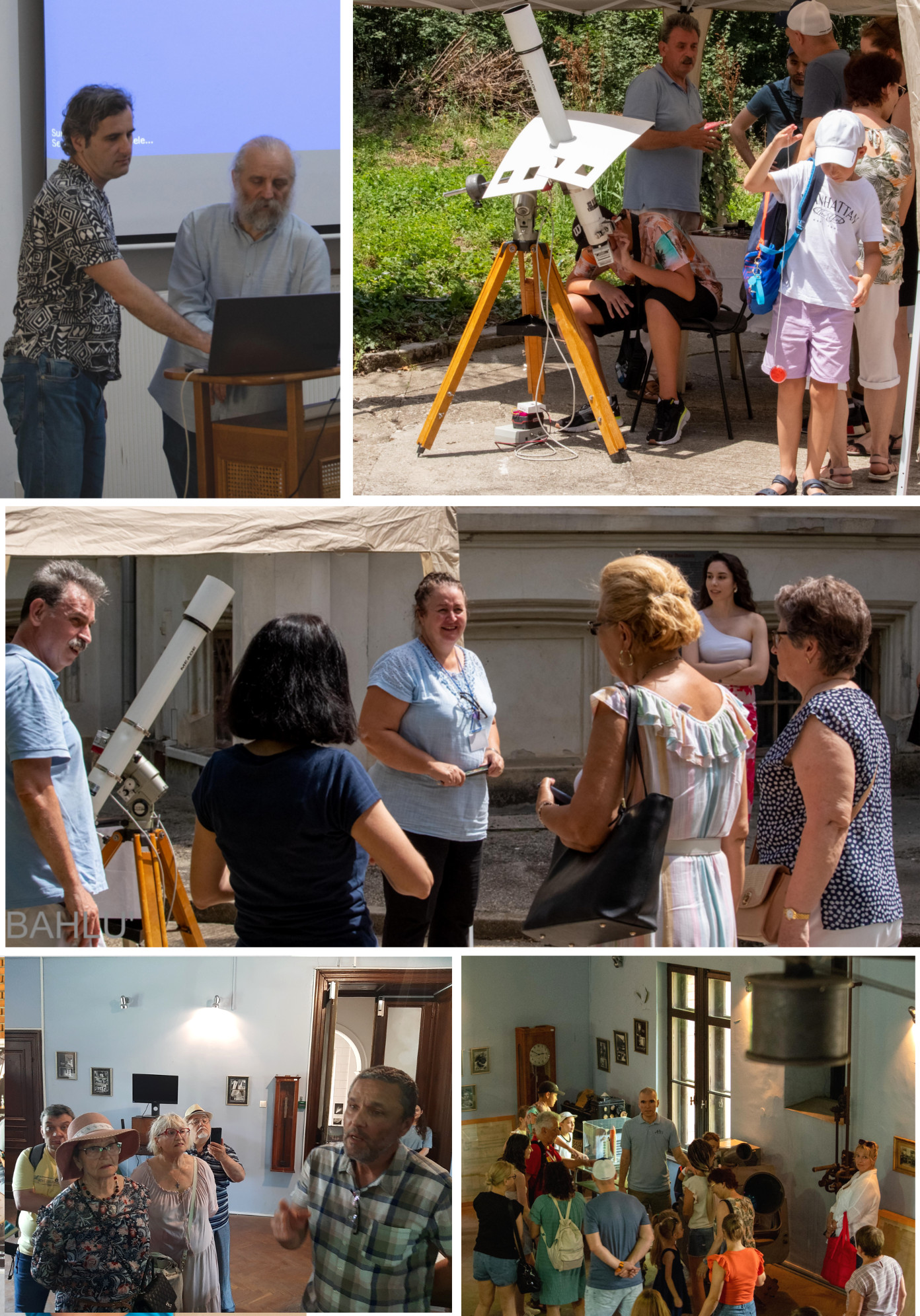
Asteroid Day 2024 – Open Doors Day at the Astronomical Institute of the Romanian Academy
The Astronomical Institute of the Romanian Academy invites you to:
ASTEROID DAY – OPEN DOORS DAY, JUNE 20, 2024
Address: Strada Cuțitul de Argint no. 5, Sector 4, Bucharest
Event hours: 10:00 AM – 6:00 PM
Free public access will be granted by appointment only via email at astro@astro.ro. To register, please provide the full names of the participants. Each visitor will be assigned a time slot for their visit, subject to availability.
Activities:
- Astronomy presentations
- Guided tour of the Astronomical Institute's museum spaces
- Thematic workshops
- Astronomical observations
Published on Jun 19, 2024
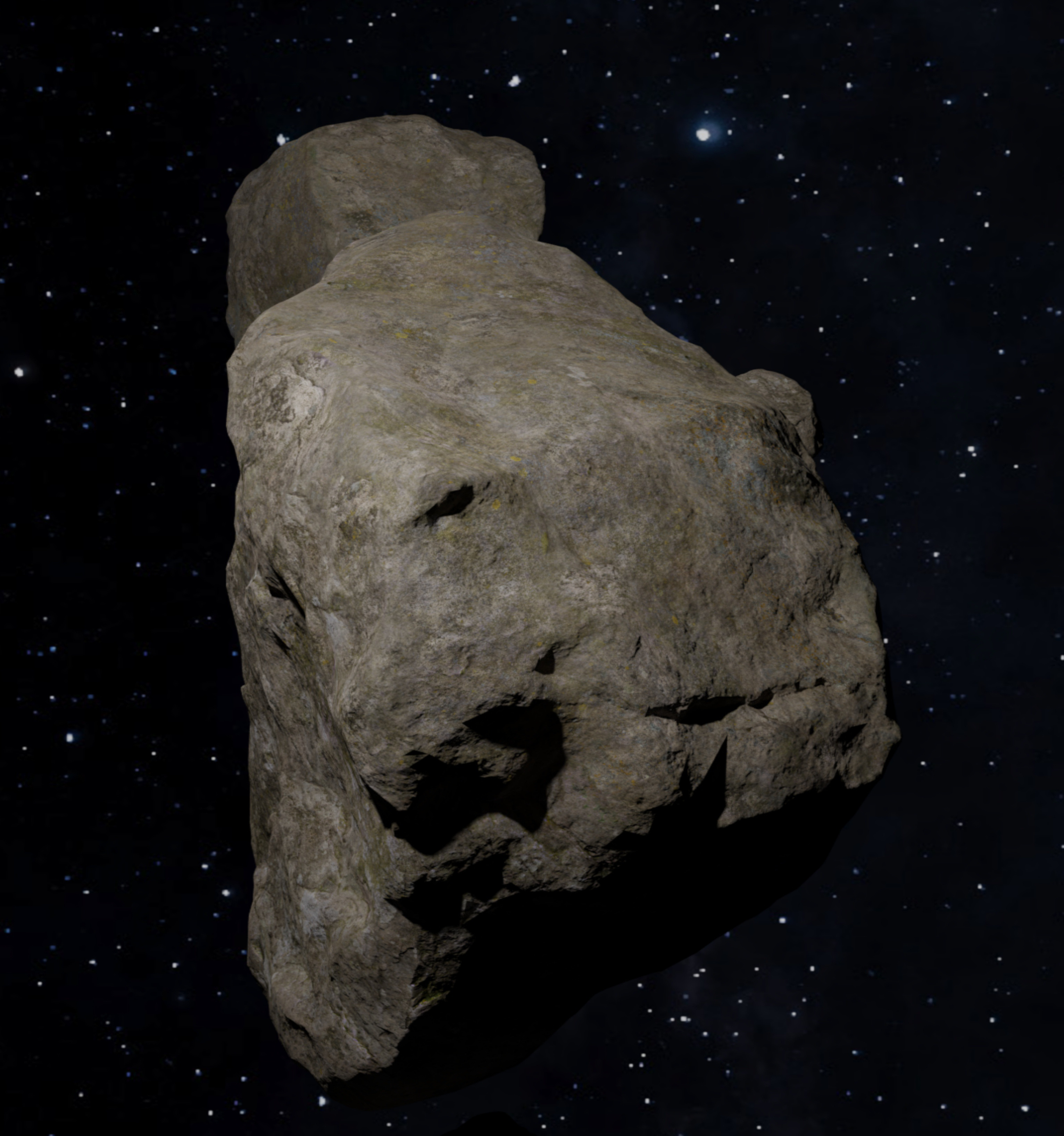
The Astronomical Institute – A National Driver for Promoting Astronomy and Science Education
In recent months, the Astronomical Institute of the Romanian Academy has participated in the national educational programs "Școala Altfel" (A Different School) and "Săptămâna Verde" (Green Week), as well as in this year’s edition of the Astrofest science and space technology fair, held on May 17-18.
Across the cultural spaces of the Astronomical Institute in Bucharest—including the Meridian Hall, Equatorial Dome, Main Pavilion Hall, Planetarium Hallway, and Solar Dome, as well as the Bosianu Villa courtyard—over 1,500 children and adults had the opportunity to engage with Romania’s astronomical heritage and the historical significance of the location, which has played an important role in national history.
At Astrofest 2024, the Institute’s booth attracted thousands of visitors. This year, the main theme of the exhibit focused on asteroids, celestial bodies studied by the dedicated research team at the Astronomical Institute of the Romanian Academy. The booth featured four meteorite fragments, each weighing approximately 4-5 kg, recovered from Northwest Africa. Visitors of all ages had the chance to examine the mysterious North West Africa 869 meteorite fragment through a binocular magnifier, as well as a section of meteoritic material displaying a stunning mosaic of melted metals, oxides, and spectacular crystalline structures. This provided an opportunity to explore the phenomena and scientific principles governing this fascinating field of astronomy.
In addition to the exhibits, printed educational materials and model displays enriched the visitors’ experience at the Institute's booth.
On Saturday afternoon, May 18, when the skies cleared, visitors at the Astronomical Institute’s booth had the chance to observe the Sun through a telescope equipped with a professional filter. Later in the evening, they also observed the Moon.
 Exploring space with Romania's future astronauts at the Astronomical Institute of the Romanian Academy booth (Astrofest 2024).
Exploring space with Romania's future astronauts at the Astronomical Institute of the Romanian Academy booth (Astrofest 2024).
Published on May 22, 2024
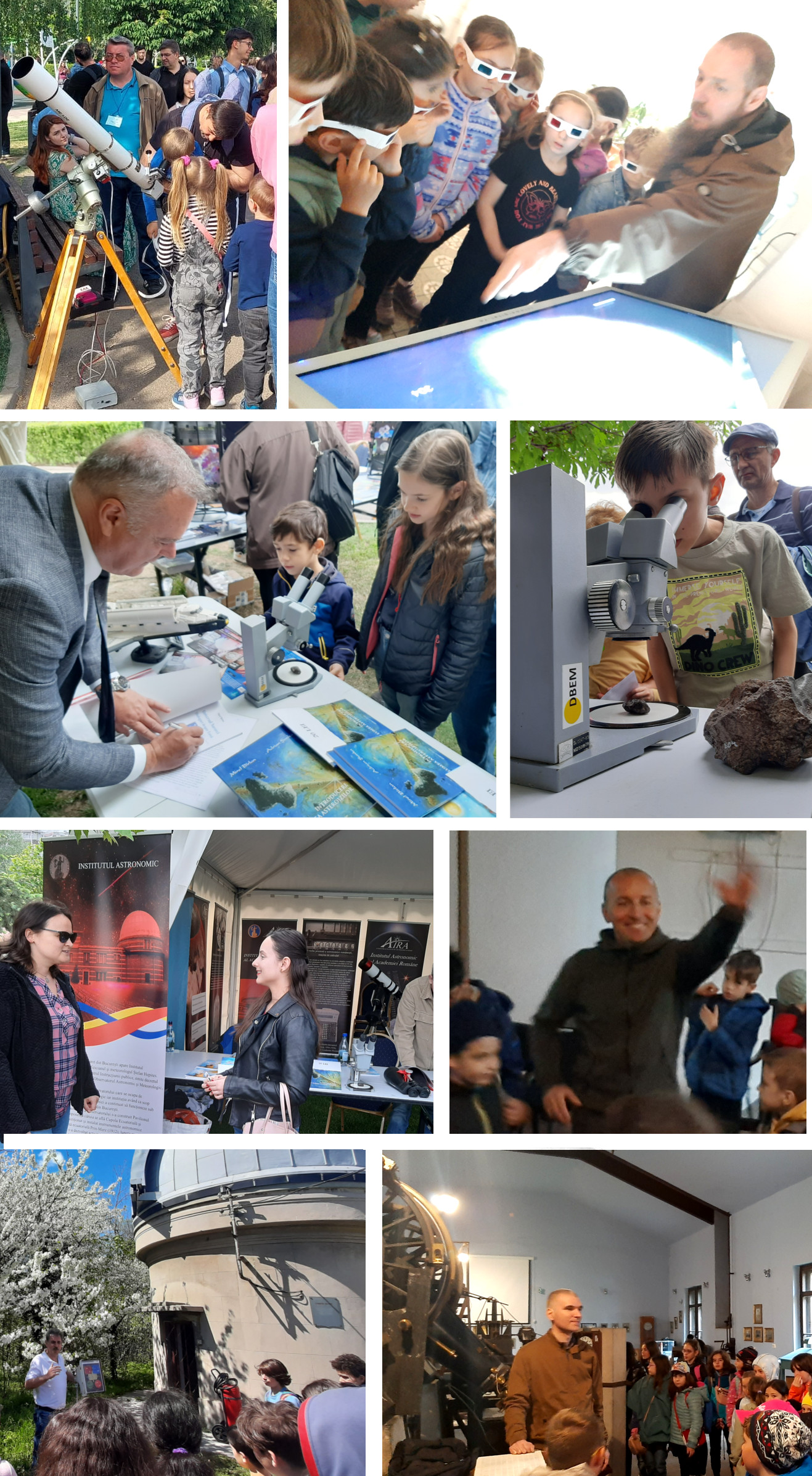
The transition to Daylight Saving Time in Romania
On March 31, 2024, Romania will switch to Daylight Saving Time, and the clocks will be set forward by one hour. This means that Romania's time will be 3 hours ahead of Universal Time (GMT). Thus, 3:00 AM will become 4:00 AM, a change that follows the transition to Standard Time last autumn.
After the spring equinox on March 20, 2024, when day and night are equal in length, the day will gradually get longer and the night shorter. By adopting the Daylight Saving Time system, people's daily schedule can benefit from more natural daylight, which is an important element that helps facilitate socio-economic activities. As a result, there is a significant reduction in electricity consumption needed for artificial lighting, and consequently, less pollution produced to generate it. Some economic activities, such as trade and services, are carried out more efficiently due to the extended daylight hours. There are also fewer road incidents, and crime rates tend to be lower.
In recent years, there has been a debate within the European Union authorities about abolishing the Daylight Saving Time system, but so far, the Romanian Parliament has rejected this initiative.
Published on Mar 27, 2024

Type III and type II radio bursts observed by e-CALLISTO ROMANIA
On February 9, 2024, occurred the second largest X3.3 class solar flare during the current cycle, maximum occurs at 13.14 UTC, in AR13575 which has already passed the Sun's western limb, so it could have been even bigger. The coronal mass ejection was not directed to Earth, but still resulted in an S2 radiation storm, shortwave radio blackouts in the polar regions, and minor effects on satellite electronics.
Also, following the eruption, there were type III and type II radio emissions received by the e-CALLISTO Bucharest station (the attached image, processed with Java Viewer and Gimp). It is one of the most spectacular spectrograms obtained with our antenna and under conditions of significant radio disturbances produced by ground stations and building radio noise sources (RFI).
Info: Octavian Blagoi, Scientific Researcher, AIRA (oblagoi@astro.ro)
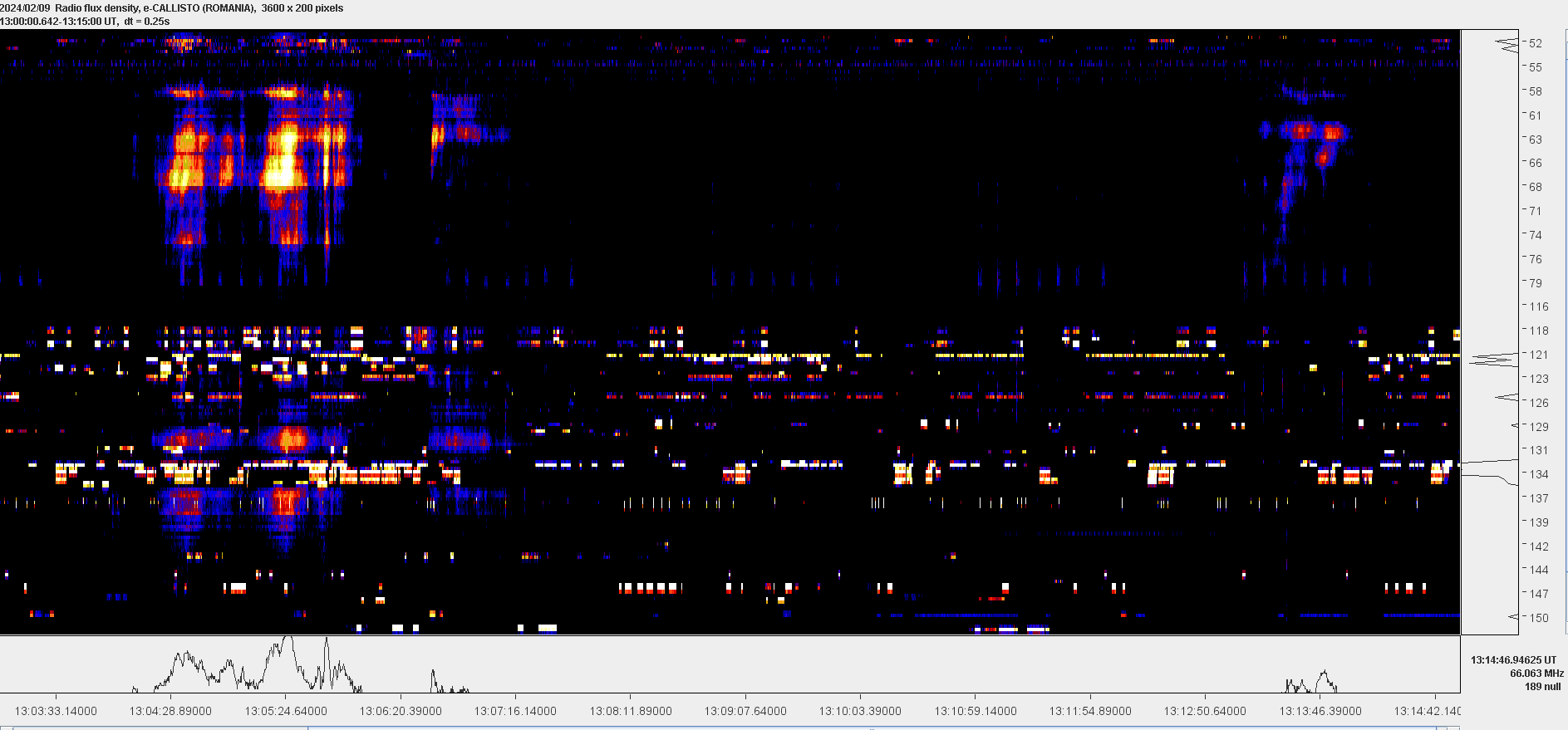 Radio bursts spectrogram of the 09.02.2024 solar flare as recorded from Bucharest, Romania (© AIRA, 2024)
Radio bursts spectrogram of the 09.02.2024 solar flare as recorded from Bucharest, Romania (© AIRA, 2024)
Published on Feb 19, 2024
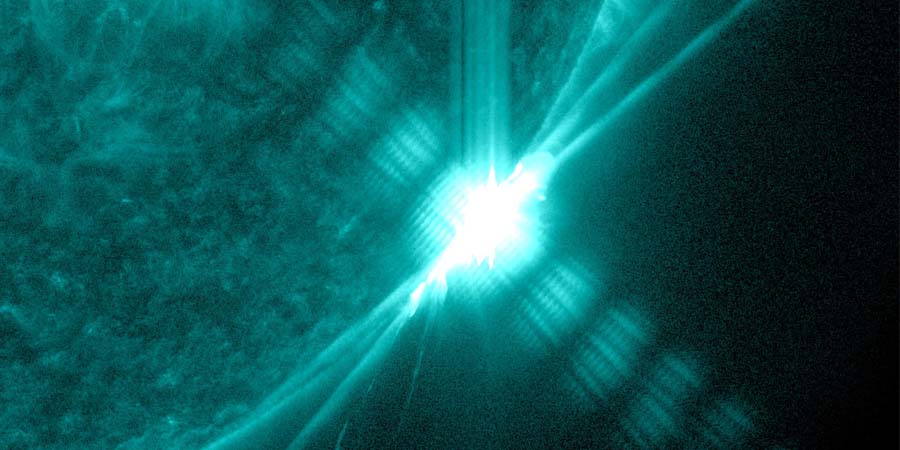
Asteroid 2024 BX1 was observed from AIRA's headquarters in Romania
Small asteroid 2024 BX1 was discovered on the night of Jan 20, 2024, by Piszkéstető Station in Hungary three hours before entered in the Earth's atmosphere.
It was observed from Bucharest Observatory for an hour until 25 minutes before impact, using a 0.35 m telescope.
The object was fast as it was getting closer to our planet and increased over six times in brightness. Our last observation was made while de asteroid was at 13.000 km away from the Earth surface.
On Jan 21, at 00:33 GMT, the asteroid entered the Earth's atmosphere over Germany and produced a very bright fireball, which was observed by multiple allsky cameras.
Download link:
Mp4 video with asteroid 2024 BX1 as observed by AIRA (Credit: Dr. Adrian Șonka)
Published on Jan 26, 2024
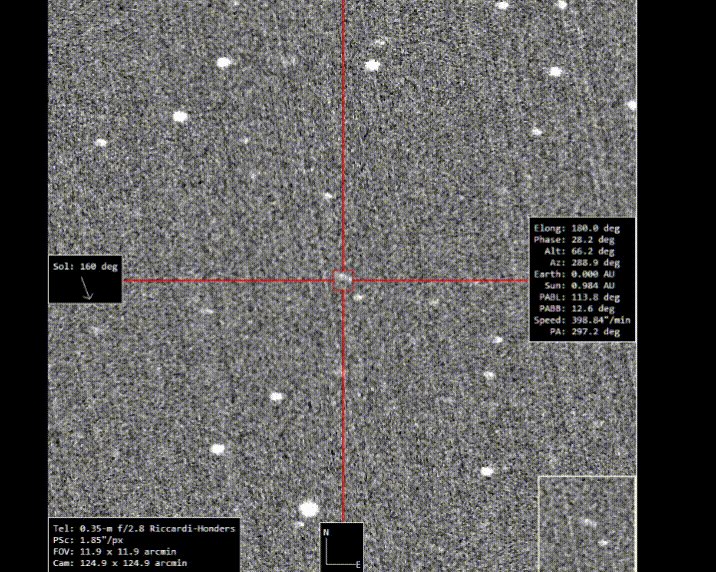
Happy New Year 2024
The Astronomical Institute of the Romanian Academy wishes you a happy and prosperous New Year 2024.
The greetings card was devoted to the allsky cameras network in Romania, called MOROI.
During 2022-2023 the network continues its activity, by recording hundreds of falling stars (meteors).
AIRA team involved in activities related to MOROI continues the densification of the nework; thus, now there are 19 cameras working continuously recording events.
During 2022-2023 the network finished the process of data fusion with the large network called FRIPON.
During 2022-2023 one PhD thesis was defended, and one post-doc was active on specific topics.
Published on Dec 31, 2023
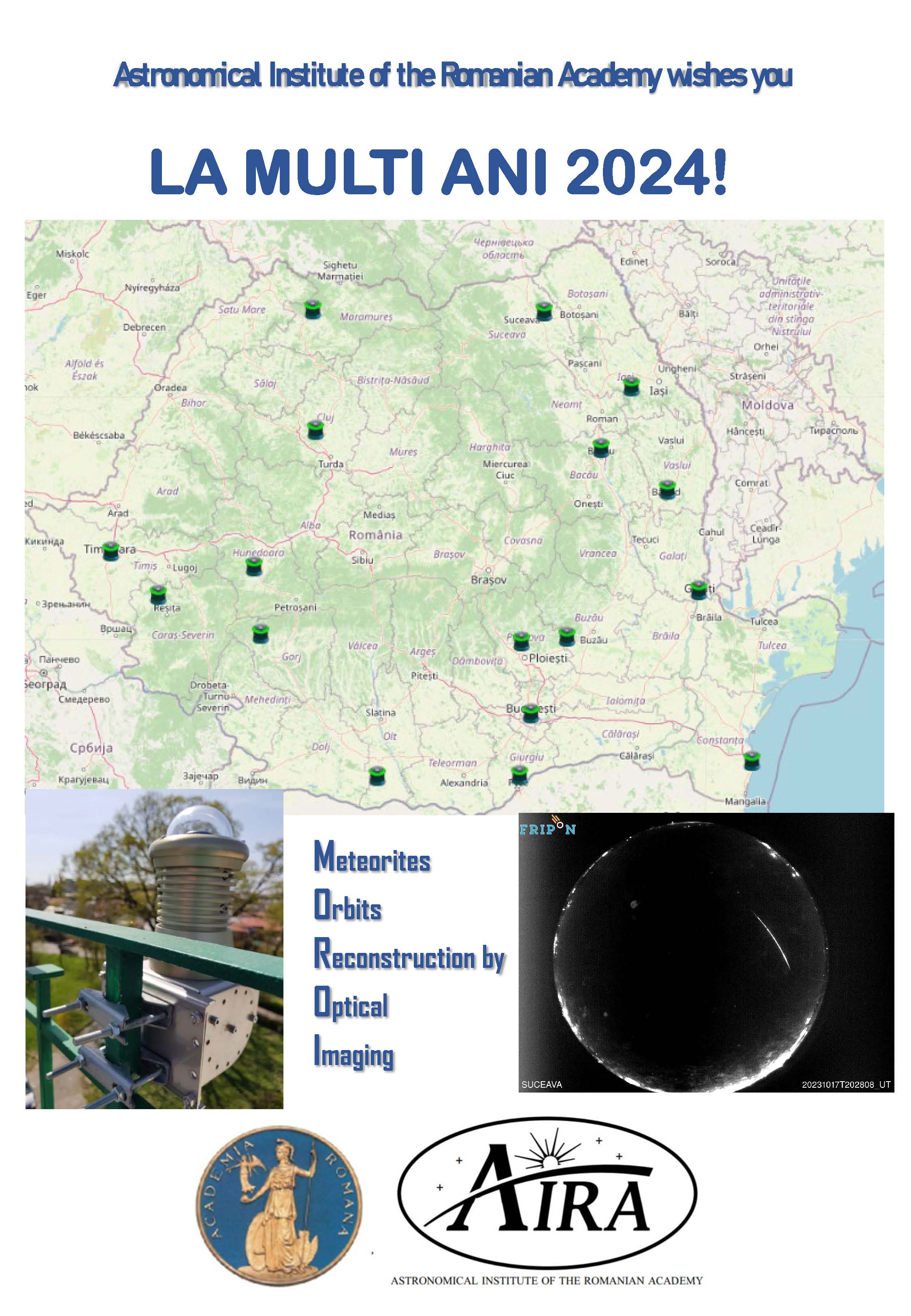
Romanian Astronomical Journal Ranked by Clarivate Analytics
Romanian Astronomical Journal is the scientific journal devoted to astronomy in Romania and it is published by Editura Academiei Romane. This journal is edited under the patronage of National Committee of Romanian Astronomers (C.N.R.A.).
The first number of Romanian Astronomical Journal appeared in 1991; this journal has been open-source since 2011. All the articles are available freely from the web portal. In 2015, Romanian Astronomical Journal was included in the Clarivate Analytics database (former Thompson ISI) into the category of Emerging Journals.
Romanian Astronomical Journal has been under evaluation since 2015. In December 2023 Clarivate Analytics first time awarded the ranking for our journal. Thus, Romanian Astronomical Journal is now in Q4 quartile. It receives a Journal Impact Factor (JIF) of 0.3 as an average for the last five years, while in 2022 the JIF was 0.6
This is a huge achievement of our journal who brings forth the quality of articles and the efforts of Editorial Boards and the Scientific Committee of this journal. Congratulations!
More information of Romanian Astronomical Journal, on the web portal.
Published on Dec 26, 2023
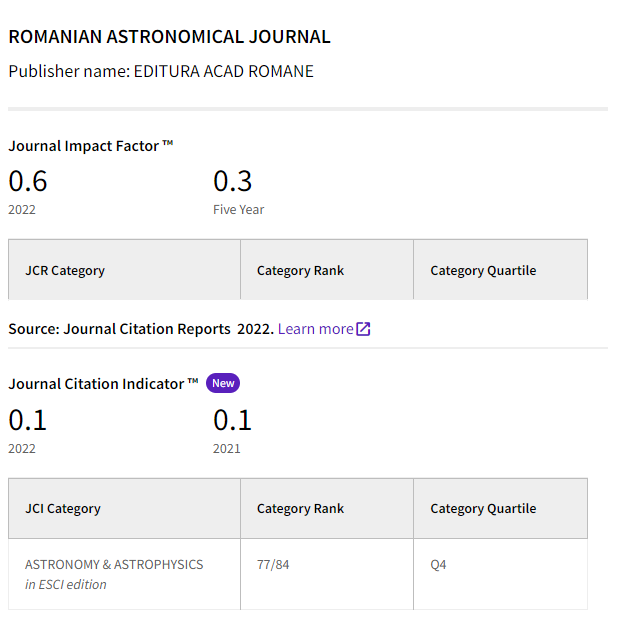
Astronomy Reveals Its Secrets for Children with Visual Impairments
On December 4, 2023, at the headquarters of the Astronomical Institute of the Romanian Academy in Bucharest, an educational activity was held for children with visual impairments. The event was organized by the Astronomical Institute in collaboration with the "Space Club" astronomy club of the Romanian Army's Space and Telecommunications Agency, with the support of military personnel and their logistics. The event was honored by the special participation of Major Emily Trop from the Embassy of the United States of America.
"Emotion" and "joy" are the words that best describe the encounter with astronomy for children with visual impairments, through the use of thermoformed 2D pages, numerous 3D prints of mini celestial domes and constellations arranged in relief on these models, and miniature mechanical planetariums that provided tactile support. Additionally, during the event, the planets of our Solar System "miraculously" aligned on a string that was moved through the educational space of the Astronomical Institute of the Romanian Academy, studied inch by inch by the curious little hands. The scale-reduced 3D prints of asteroids, created from accurate 3D scans of these celestial bodies, enriched the educational tools of the activity. Warmly welcomed by the exceptionally dedicated coordinators of the event – Dipl. Eng. Andra Stoica, Diana Chiriță, and Col. Georgian Tudor – the dozens of participants had the chance to enter, one by one, the planetarium for the visually impaired, located within the educational spaces of the Astronomical Institute. This semi-sphere had a tactile arrangement inside, representing some of the main constellations.
Throughout the event, the personnel of the Romanian Army from the "Space Club" – 2nd Lt. Bogdan Daniliuc, Chief Petty Officer Alexandra Bogoiu, Sgt. Sergiu Zîrnovean, and Asp. Cătălina Pop – as well as the dedicated volunteers Corina and Suzana Păcală, Adrian Neaga, Cosmin Șulea, and Petrișor Munteanu, provided a multitude of information every hour, which was received with great interest by the children.
The pedagogical team for the event was reinforced by the representative of the Astronomical Institute of the Romanian Academy, Sorin Marin.
The message and, at the same time, the promise of the event organizers is that we will dedicate our work and energy so that, in our Motherland, Romania, everyone can reach the stars.
Published on Dec 08, 2023
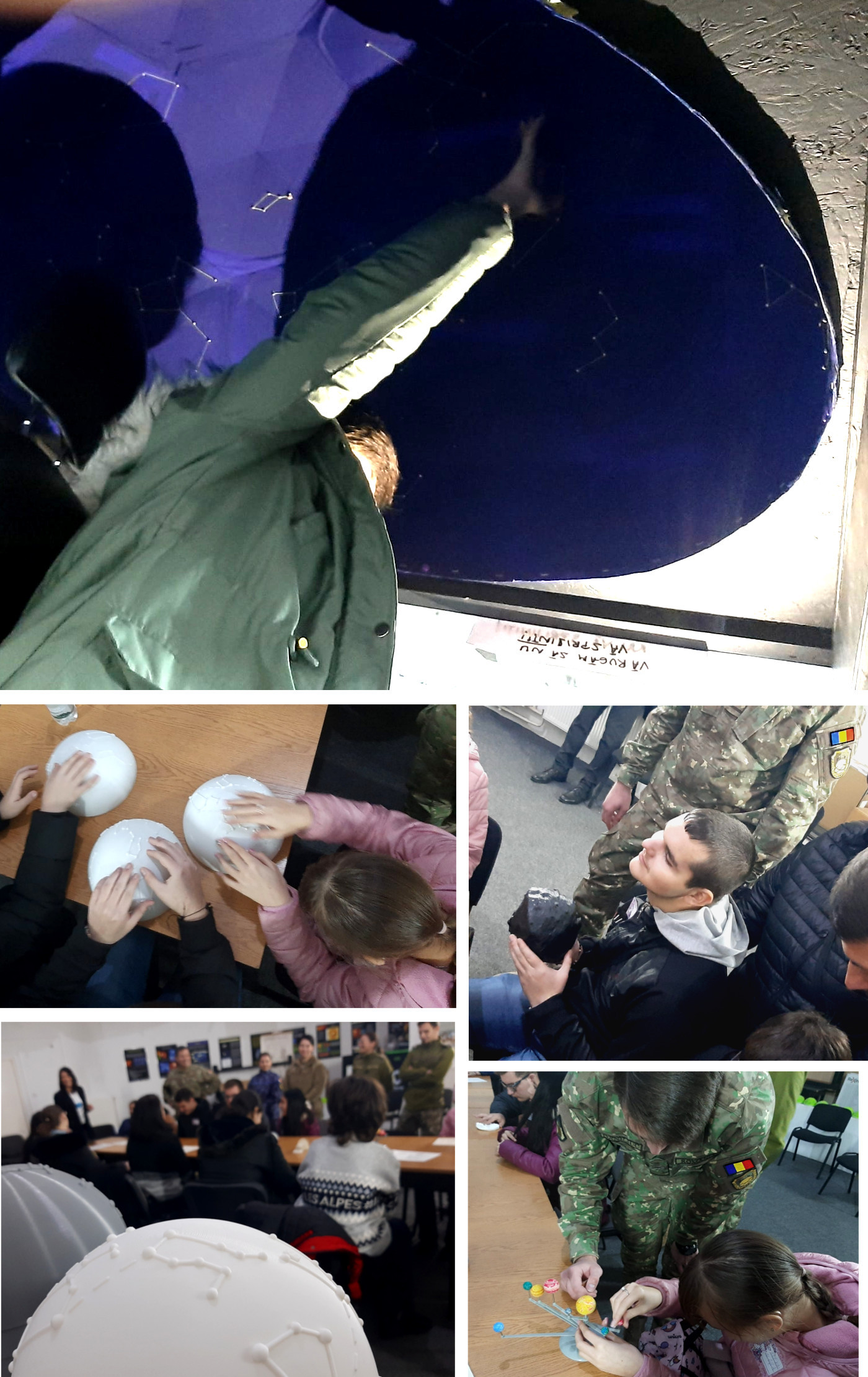
Venus-Moon Occultation Observed by the Astronomical Institute of the Romanian Academy
On November 9, 2023, at 12:18 PM (Romania time), an occultation of the planet Venus by the Moon took place. The phenomenon had several particularities:
1. It occurred during the day, so the conditions for observation/photography were not ideal. Due to the daylight, the contrast of the Moon, which was in the last quarter of the daytime sky, was quite low.
2. The brightness of the planet Venus was more intense than that of the Moon, which made Venus extremely bright in the astrophotography frame compared to the adjacent surface of the Moon. The camera exposure time had to be reduced to 0.003 seconds to obtain an image of Venus that was not oversaturated, while still allowing the Moon to be visible in the footage.
3. From the observation point (the Solar Dome of the Bucharest Observatory of the Astronomical Institute of the Romanian Academy), the entry of Venus's disk behind the Moon was observed relatively easily, but the exit from behind the Moon was not observed because the Moon descended quite a bit and "hid" behind the branches of some trees in the park.
The observations were made using a Zeiss 120mm F/15 telescope, an ATIK 460 MM camera, and acquisition and preprocessing software - MaximDL.
The exposures were 0.003 seconds, and for calibration, bias and flat frames were used on the sky background. The interval between exposures was about 17 seconds at the beginning of the video and 7 seconds toward the end, when attempts were made to capture the ingress in as much detail as possible.
Download Links:
Fișier .gif cu ocultația Venus-Lună, exp. 0.003 s. (© AIRA, 2023)
Imagine de înaltă rezoluție cu ocultația Venus-Lună (© AIRA, 2023)
Published on Nov 13, 2023
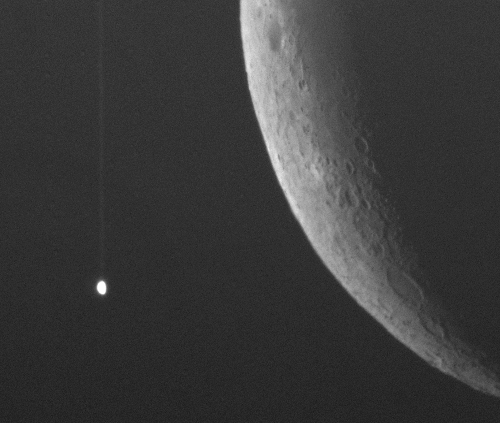
"Școala Altfel" and "Researchers' Night 2023"
The beginning of the new school year brought energetic school-age visitors back to the scientific park of the Astronomical Institute of the Romanian Academy in Bucharest. The guided tours through the Institute's museum halls and under the shadow of the domes of Romanian astronomy were met with widespread appreciation from both our young visitors and their accompanying teachers, due to the uniqueness and spectacular nature of our cultural heritage. Both the former scientific research halls, now frozen in time to preserve their memory as national cultural spaces, and the current active scientific areas of the Institute, provided an ideal non-formal and multidisciplinary educational space, serving as the stage for numerous questions, answers, revelations, and exclamations, all strung together in a true perpetual motion.
Continuing its educational activities and promoting its cultural offerings, the Astronomical Institute participated with its own stand at the "Researchers' Night" event, held on September 29-30 this year. On this occasion, the Institute brought two telescopes and a telescope, allowing the public to observe the Sun through a professional filter, highlighting details on its surface, and after sunset, the Moon and the planets Saturn and Jupiter. Using a powerful binocular magnifier, visitors at our stand could closely examine fragments of meteorites recovered from three continents – Europe, Africa, and South America. At this edition of the "Researchers' Night," the Astronomical Institute also showcased a display of models in the aerospace and civil sectors, providing an opportunity to illustrate and discuss with hundreds of visitors the transfer of cutting-edge technologies from space exploration to the everyday lives of the general public.
Published on Oct 09, 2023
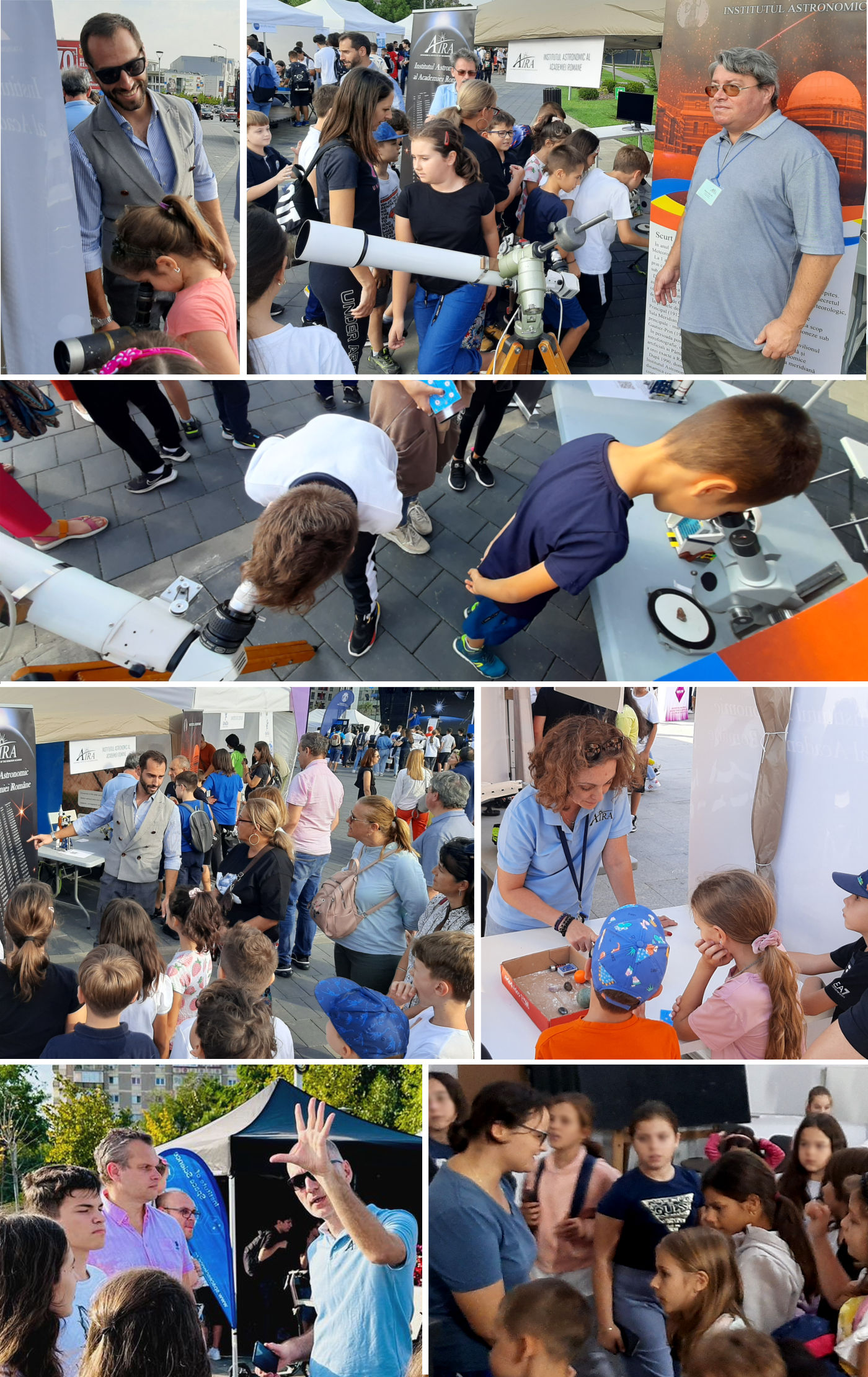
Bright fireball observed in southern Romania
On Tuesday, July 11, 2023, at 9:49:54 PM, during twilight, people in southern Romania were able to witness a large fireball. It was followed by a loud noise (sonic boom), characteristic of any object traveling at supersonic speeds. The object, with a brightness greater than that of a full moon, burned up in the atmosphere, and the luminous phenomenon exhibited several increases in brightness, associated with fragmentations due to the dynamical pressure along the trajectory.
The sky monitoring network in Romania, called MOROI, was initiated mainly for the detection of meteors entering the atmosphere and producing a luminous phenomenona called a meteors. It is managed by a team of researchers from the Astronomical Institute of the Romanian Academy.
The all-sky camera located in Obarșia Nouă, in the Olt County, belonging to the MOROI network, recorded the event most effectively. The meteor was observed during twilight and lasted approximately 5 seconds. The fragmentation during the observation saturated the camera, and the preliminary estimation of the brightness (approximate magnitude -16) significantly exceeds the maximum brightness of a full moon night, classifying the phenomenon as a fireball.
The recorded images from the all-sky cameras of the MOROI network (integrated into the European FRIPON network) along with complementary recordings will allow for the calculation of the object's trajectory, the altitude at which it extinguished, the probability of this object to produce fragments that may reach the ground (meteorites), as well as the most likely location where these fragments could have fallen.
Published on Jul 13, 2023
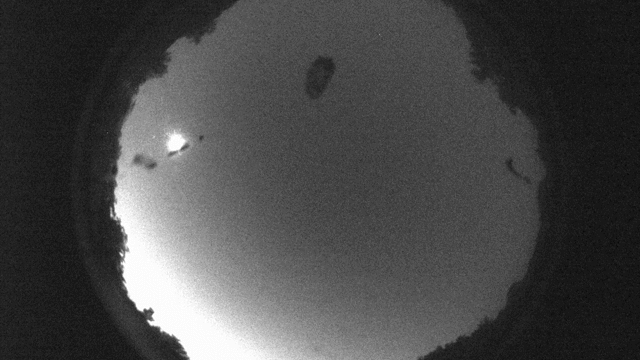
Education through Science at the Astronomical Institute of the Romanian Academy
In the spring and summer of this year, the Astronomical Institute of the Romanian Academy participated in the national educational activities "Școala Altfel" and "Săptămâna Verde". Following these events, on June 30, 2023, a new edition of the cultural event "Asteroid Day - Open Doors Day" was organized.
Thousands of visitors of all ages who passed through our doors on this occasion had the opportunity to see the interior of the former scientific research spaces of IAAR - the Meridian Hall and the Equatorial Dome, where currently the iconic scientific equipment of Romanian astronomy, some of which are over 100 years old, is being preserved in a museum-like state. This includes optical instruments for direct observations and photography, as well as computational equipment and time-recording standards.
Visitors were also able to explore the rest of the IAAR scientific park, which includes instrument buildings and cultural-administrative structures such as the Solar Dome, Telescope Building, Sun House, and Bosianu Villa. On days with favorable weather conditions, the public had the opportunity to observe the Sun using specialized scientific equipment fitted with various professional filters. Human expertise in scientific research and the popularization of astronomy was complemented by the diligent educational rover V.A.S.I.L.E., built at the Astronomical Institute, which explored the Planetarium Hall together with the crowd of young amateur astronomers.
The passionate volunteers of the Astroclub Junior team, part of the Bucharest Astroclub, once again supported the educational team of the Astronomical Institute.
During these events, the audio-visual infrastructure of the Astronomical Institute operated continuously for presentations in the Planetarium Hall, Planetarium Hallway, and Equatorial Dome, with simultaneous 2D projections, 3D visualizations, and components for modeling, mock-ups, and model-making.
Published on Jul 04, 2023
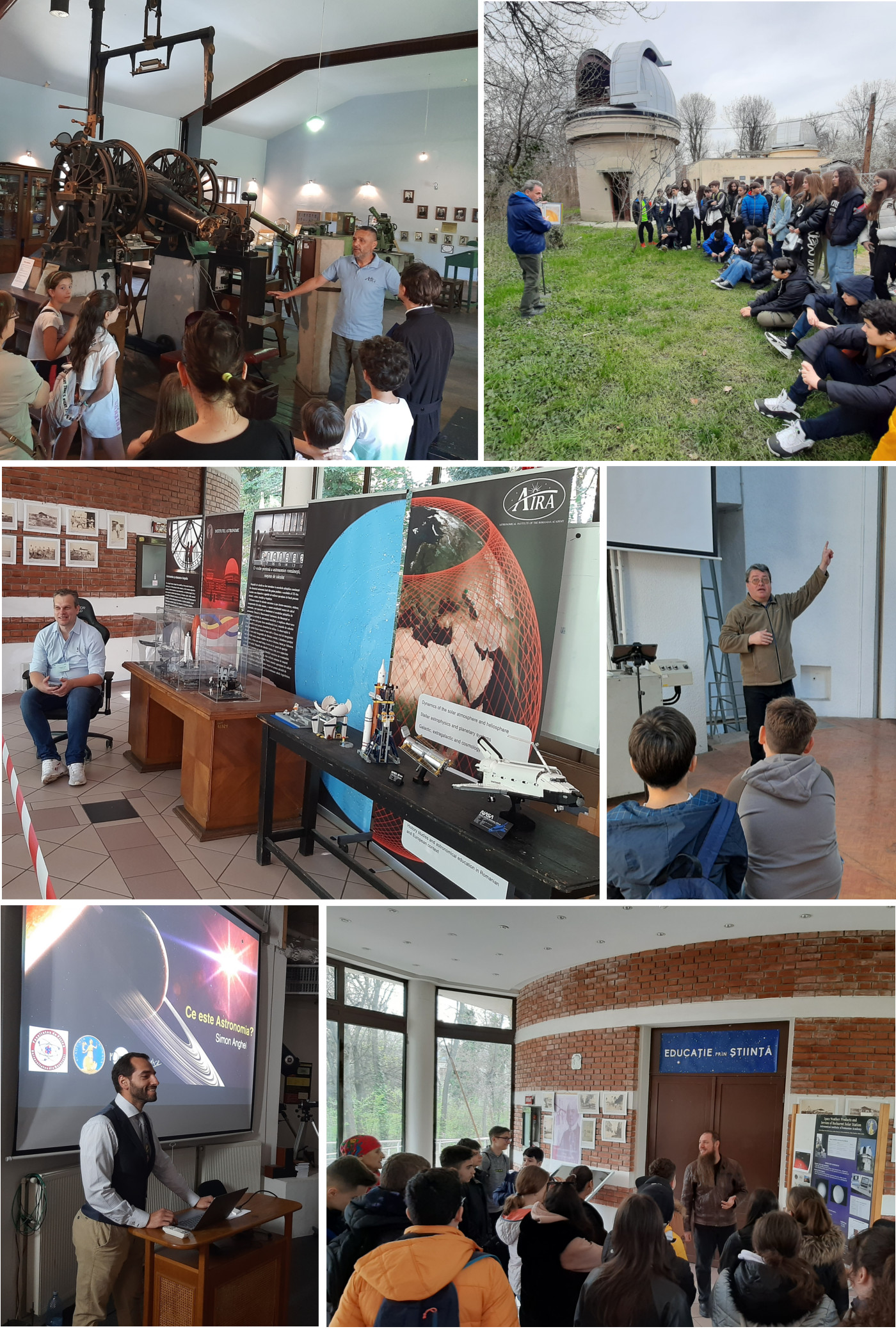
June 30, 2023, Asteroid Day - Open Door Day at the Astronomical Institute of the Romanian Academy
On June 30, 2023, the Astronomical Institute of the Romanian Academy, Bucharest Astronomical Observatory, will organize an Open Door Day to celebrate the global event Asteroid Day.
Located near Carol I Park in Bucharest, at 5 Cuțitul de Argint Street, Sector 4, the Astronomical Institute will host this event between 10:00 and 18:00. Public access is free but will require prior registration via email at astro@astro.ro, within available time slots, until the maximum number of visitors that can be accommodated at the IAAR park for this event is reached.
The guided tours will include: a visit to the interior of the Equatorial Dome, which houses the largest telescope in the country - the Prin-Merz astrogaph; the Meridian Room, which hosts numerous spectacular and unique scientific instruments in Romania; educational presentations and activities with audio-video support in the Planetarium Hall and Planetarium Room; a tour of the Astronomical Institute park among the domes of Romanian astronomy, and the iconic Bosianu Villa, which has played an important role in national history.
In the roundabout in front of the Sun Building, visitors will have the opportunity, depending on weather conditions, to observe our neighboring star, the Sun, through scientific instruments equipped with proper filters.
Professional astronomers from Romania, prominent Romanian personalities in science, as well as educators and other members of the Astronomical Institute team, will meet with the public. As usual, during Open Door Day at the Astronomical Institute, memorable photos, videos, countless questions, and good cheer will be in abundance. We warmly invite you to join us and discover the story of over a century and a half of modern Romanian astronomy and one of the most dynamic fields of scientific research in our country.
Published on Jun 19, 2023
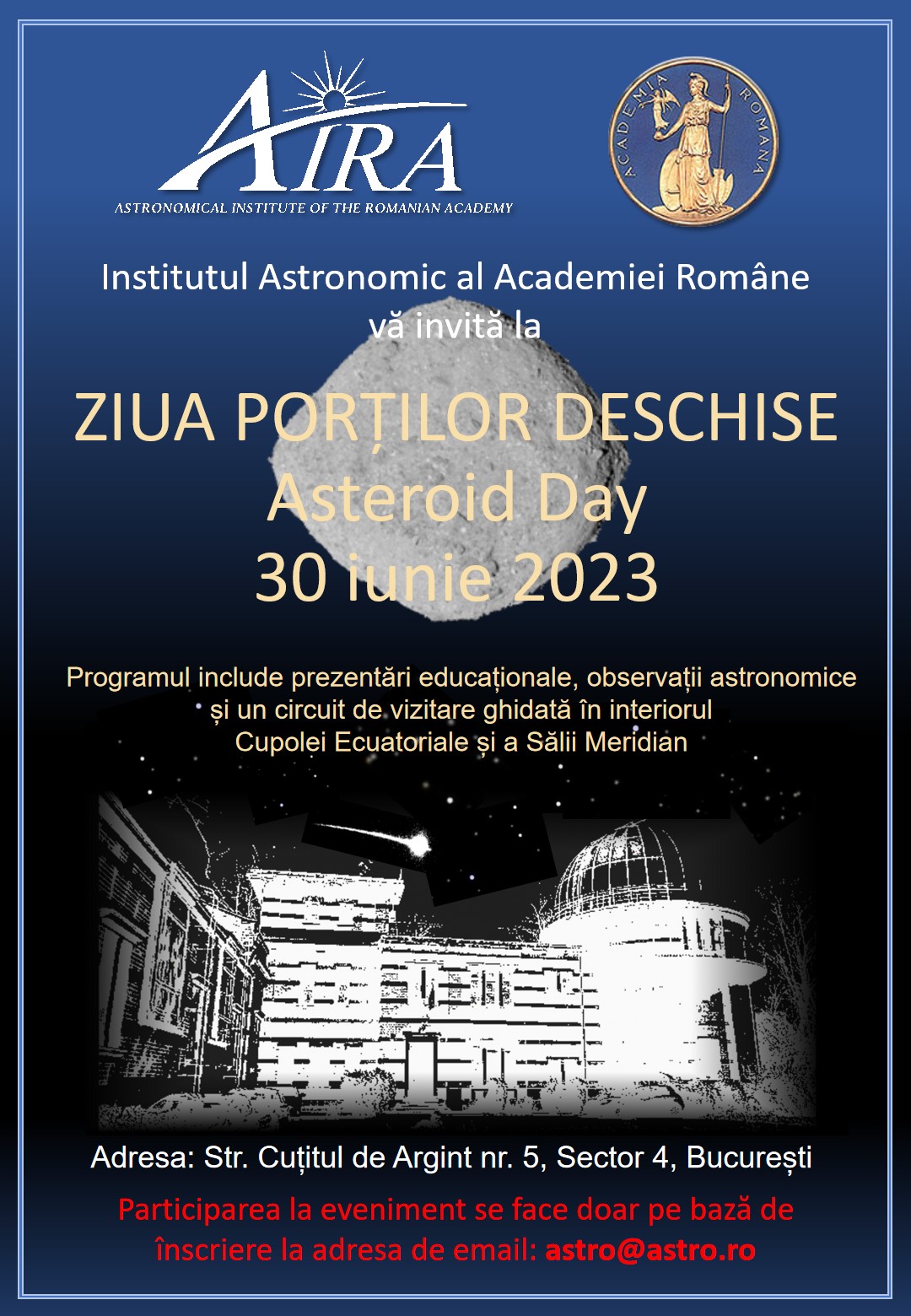
Asteroid 2023 CX1 entered Earth's atmosphere
On the morning of February 13, 2023, the small asteroid 2023 CX1 entered Earth's atmosphere, 7 hours after discovery. Its former provisional name was SAR2667.
The asteroid was observed for two hours from Berthelot Observatory - The Astronomical Institute of the Romanian Academy, the last observation being recorded 20 minutes before impact.
In the image, the asteroid is visible as a streak which crosses the image from bottom right to the top.
The estimated diameter of this celestial body was about 1 meter.
Desegregation of this object took place north of Le Havre (France) and its debris fell over France and in the English Chanel.
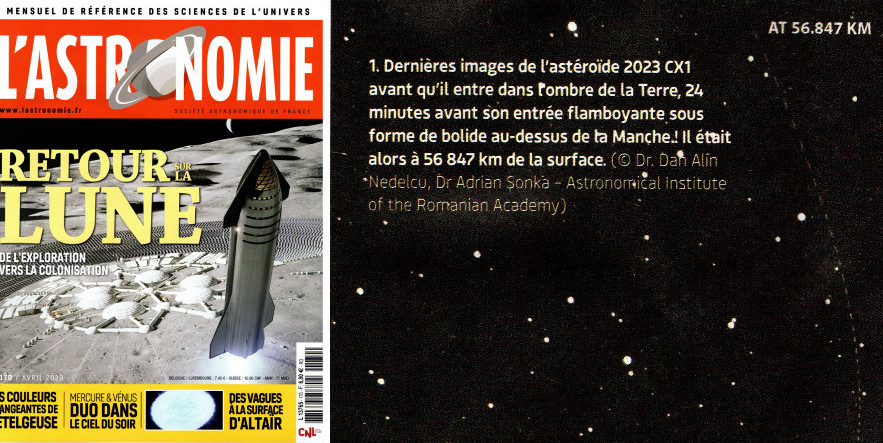
Published on May 24, 2023
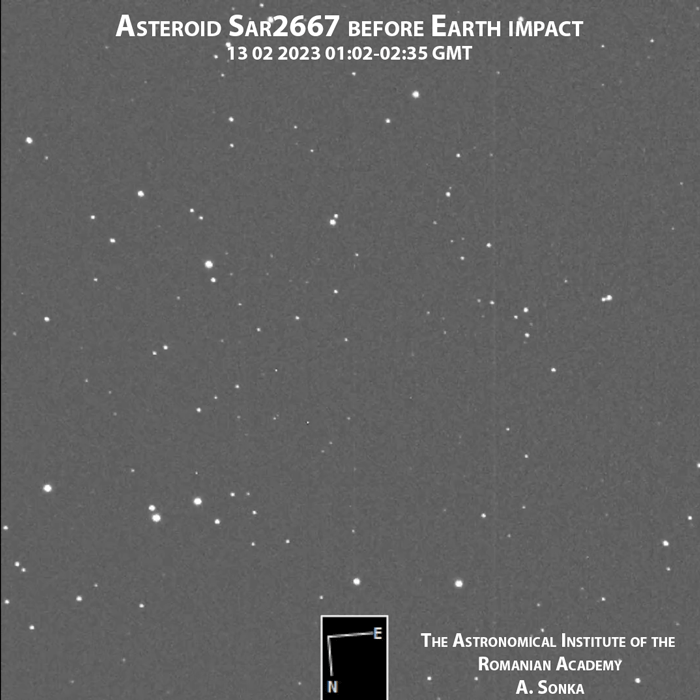
The Astronomical Institute of the Romanian Academy participated at Astrofest 2023
On May 20, 2023, the popular astronomy and science educational fair - Astrofest 2023 opened again its gates of knowledge to the public, in Bucharest. The Astronomical Institute of the Romanian Academy had a fully featured stand for the entire duration of the event, and welcomed there a large number of visitors of all ages.
Inside and outside our colorful educational stand, AIRA’s outreach team members - Dr. Diana Ionescu, Octavian Blagoi, Dr. Simon Anghel, Dr. Dumitru Pricopi, Cristian Dănescu, Sorin Marin and Cristian Omăt, presented to the public our main research areas in astronomy and beyond it, in other associated scientific fields. To better introduce the visitors to our research fields, a binocular stereo microscope was used to analyze the features of a Sericho pallasite meteorite fragment discovered in Kenya in 2016. Our magnetic field experiment and that of the proportion size of planets relative to the size of our Sun complemented the discussion about the variety of space bodies and their features in our Solar System.
In front of the AIRA stand, our educational refractory telescopes determined the formation of queues of people for the whole day. They waited patiently and eager only to have a glimpse of Venus through these fine instruments.
On the main stage of Astrofest 2023 event, Dr. Mirel Bîrlan, our Director, revealed some of the challenges of a light polluted metropolis like Bucharest for the astronomical research, while the astronomy historian Sorin Marin presented in brief the story of the scientific infrastructure build-up process that took place on AIRA’s present day domain since the 19th C.
Published on May 22, 2023
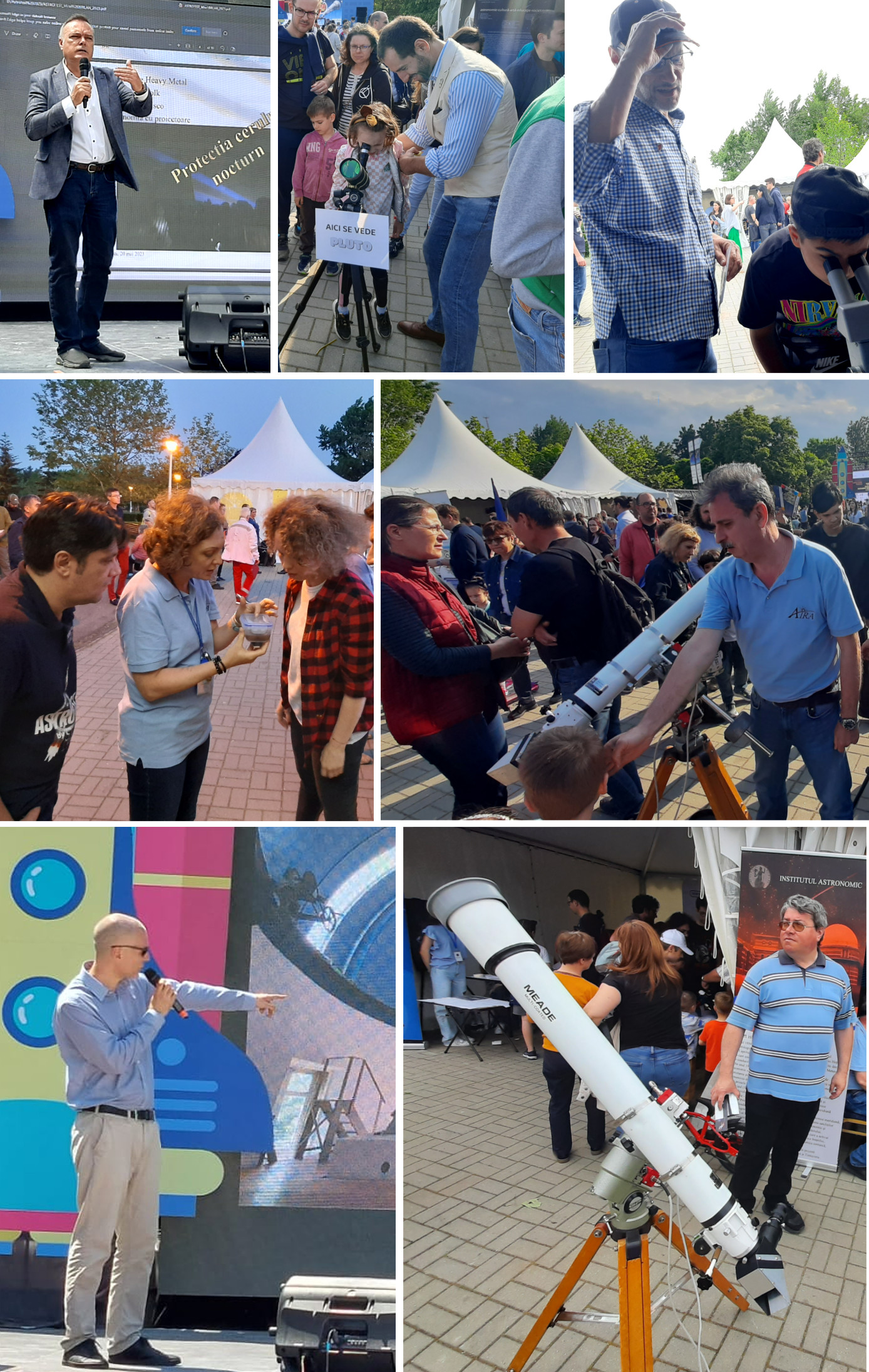
Astronomical Institute of the Romanian Academy - 115 years of research
On the 1st of April 2023, the Astronomical Institute of the Romanian Academy (AIRA) celebrates 115 years of continuous scientific endeavour. The governmental Decree issued by the Minister of Public Instruction and Religious Affairs, Spiru Haret, on April 1, 1908, created the Astronomical and Meteorological Observatory of Bucharest - the present day Astronomical Institute of the Romanian Academy. Back then, at the turn of the XXst Century, that new scientific institution was developed as the next step of the Romanian astronomy after its previous pioneering age. Since those times of the Old Kingdom of Romania, the building up of scientific knowledge and infrastructure has been advancing constantly, in favorable periods or during economic, politically and military turmoil.
Inside the Main Building of AIRA, a true astronomy palace of Romania constructed in between 1908-1912, the Romanian scientists brought and sometimes even designed, a number of great astronomical instruments such as the refractory telescopes Prin-Merz (1912) and Gautier-Prin (1926), the Zeiss Transit Instrument (1953), the Zeiss solar refractors (1957-1958), the Cassegrain Telescope (1964), the precise vacuum dome fundamental pendulums Le Roy (1930) and Riefler (1956), or the massive quartz clock Rohde & Schwarz (1967), large photographic equipment such as the camera AFU-75 (1970).
Always in the scientific service of our country, the Romanian astronomers calculated and reported for decades the Legal Time of Romania by studying the Earth’s rotation, our primordial clock.
During 1908-2023, the calculating and computing hardware used here by the astronomers, evolved from the old Odhner and Mercedes mechanical calculating machines to the present day AI scripts and reduction algorithms developed indoor at AIRA, running on a super-computer with hundreds of cores and as big as a medium-sized office.
In 1908, on the astronomical side, the Bucharest Astronomical and Meteorological Observatory had a 16 square meters Meridian Hall that hosted a 1893 Geneva-made refractory telescope, and another Bardou refractory telescope, working together with a few precise clocks. Today, AIRA has a vast human operated and AI robotic infrastructure in astronomy covering hectares of scientific parks and development platforms, that is composed of directly or remotely operated telescopes like those in Berthelot, Cluj-Napoca, Bucharest and Timișoara Astronomical Observatories, the MOROI network of all-sky cameras spread all over the territory of our Motherland, never falling asleep, stellar investigating hardware, algorithms and protocols, starting with our Sun, in various types of spectrum radiation from visible to radio and up to the advanced mathematical models. AIRA is nowadays dynamically integrated with the ESA projects and space missions flow of data.
Today, the former scientific research facilities such as the Meridian Hall or the Equatorial Dome, where the old instruments are preserved, are visited every year by thousands of children and adults. They hear and see with amazed eyes the story of the achievements of Romania in astronomy and of generations of scientists led by Nicolae Coculescu, Gheorghe Demetrescu, Ella Marcus, Călin Popovici, Constantin Drâmbă and others. They also understand that this was a national effort in astronomy and beyond it, a story of struggle, dedication, perseverance, heroism and humanity of the Romanian astronomers who fought in the scientific field as well as on the military battlefields under the flag of Romania.
Published on Apr 01, 2023
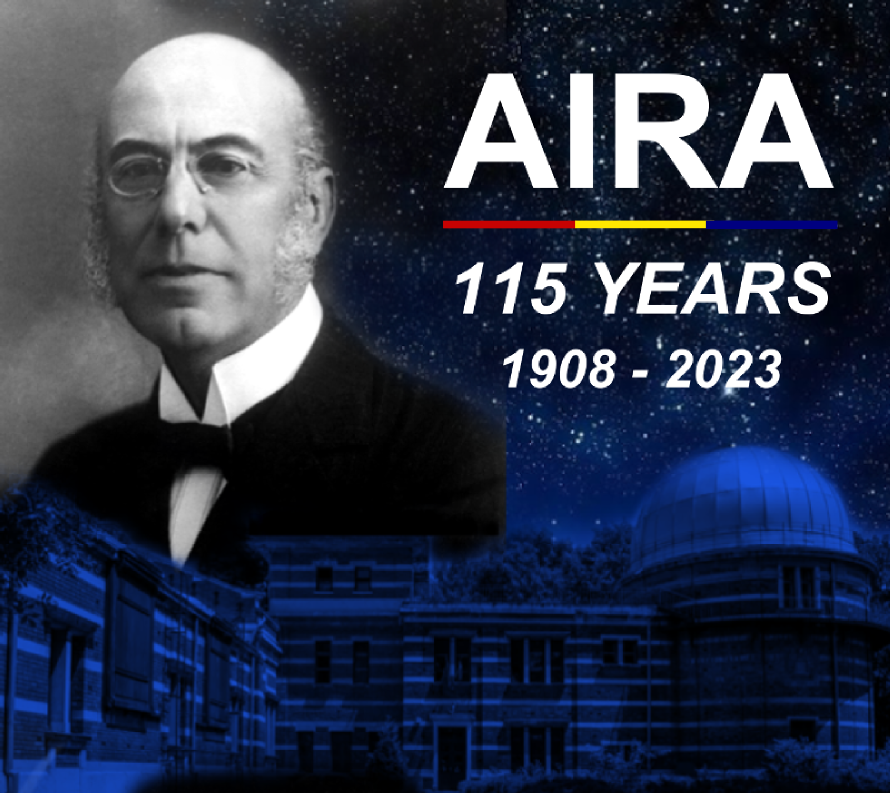
A solar explosion from an unexpected area of the Sun observed by AIRA
On March 13, 2023, during AIRA's solar patrol, we observed a spectacular phenomena - a filament eruption, followed by an C3.1-class flare. A C-class flare is a medium-sized flare that releases energies from 10−6 to 10−5 W/m2 (for peak flux range at 0.1-0.8 nm), an energy that would be equivalent to one 100 W light-bulb emitting light for more than 6 days.
AIRA's solar patrol data is observing the solar full disk in white light and Halpha every day the weather conditions permit, and the data is available at http://solar1.astro.ro/~solar/observations.html. The instrument is a refractor – Carl Zeiss Jena refractor 80/1200 mm with an Halpha filter (Solar Spectrum S-1.5 (0.3A)), while the CCD camera used is an Atik11000 (4008x2672 px, 0.009 mm, 16 bit).
The observed filament eruption was not associated to any active region on the Sun's surface, such as defined by NOAA and can be found at https://www.solarmonitor.org/, and was located at N27E07 (Carrington coordinates). The filaments’ length, before the eruption, was ~250000 km.
Published on Mar 15, 2023
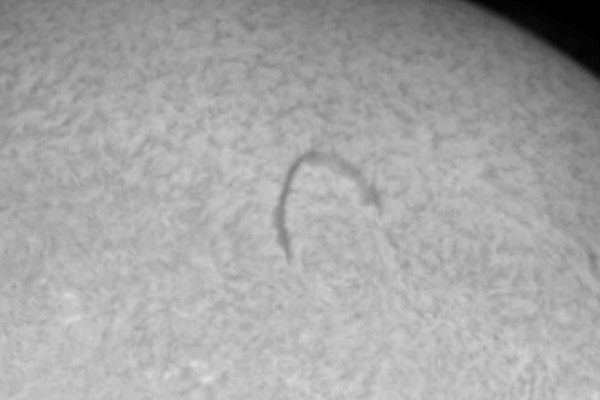
Romania's telescopes watch the Comet C/2022 E3 (ZTF)
The Astronomical Institute of the Romanian Academy, Cluj-Napoca Observatory, is currently taking telescopic images for subsequent study of the comet C/2022 E3 (ZTF), popularly known as the ”Green Comet” due to the specific green glow of its nucleus. The Romanian team of astronomers lead by Senior Researcher I Dr. Vlad Turcu is using for this purpose the AROAC T08 sensor and the Orion ShortTube80 refractory telescope together with the CCD SBIG STT1603 camera, and other scientific equipment as well.
The exposures were done at 2 seconds intervals and the time frame between two consecutive frames was 130.5 seconds.
The coordinates of the center of the image are:
RA 2000: 05h 03m 57.9s
DEC 2000: +42deg47arcmin28.7arcsec
Pixel size: 9.24arcsecx9.24 arcsec
FOV: 118.23 arcmin x 78.78 arcmin
Position angle: 351.33 deg from North
Published on Feb 08, 2023
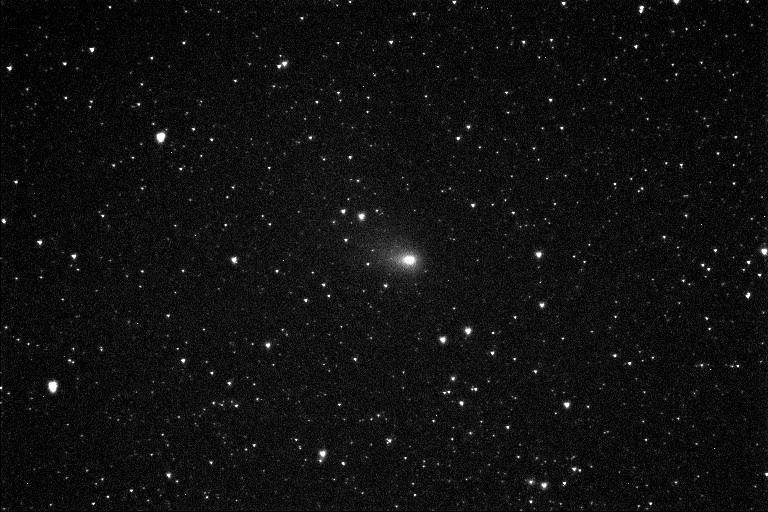
Huge Sunspot
Solar activity has recently significantly increased! Many solar flares, coronal mass ejections, etc. have been seen during the last few weeks. This is a consequence of the fact that the number of active region has increased.
A larger than Earth Sunspot was observed on the Sun on January 19, 2023. It
is so large that it can be visible with a pair of eclipse glasses!
The white light image was taken at the Bucharest Solar Observatory
of the Astronomical Institute of the Romanian Academy.
Published on Jan 20, 2023
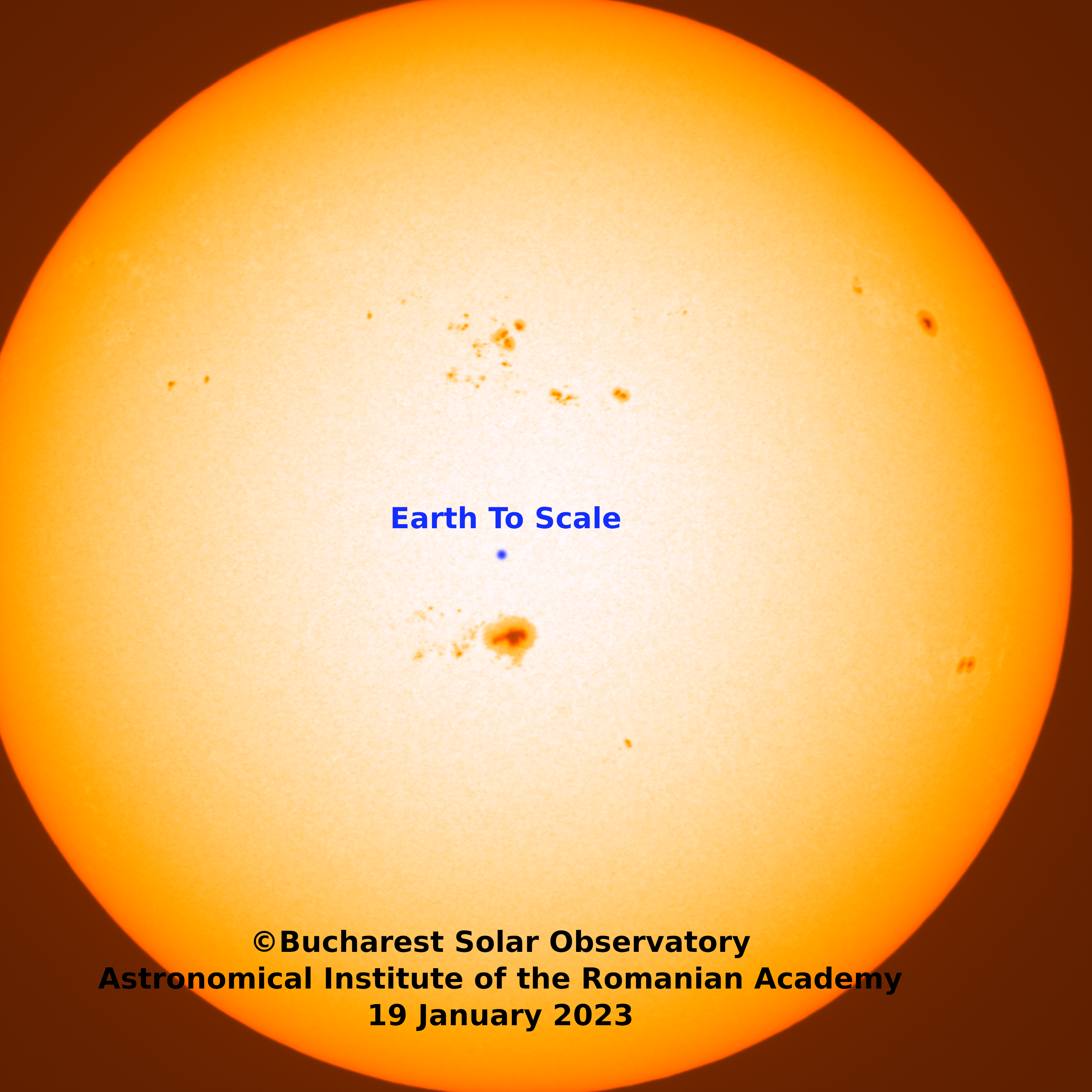
Happy New Year 2023
The Astronomical Institute of the Romanian Academy wishes you a happy and prosperous New Year 2023.
The greetings card was devoted to the Sun, our star. Its activity is monitored in various wavelengths, using instruments and devices owned by our institute. The correspondent database contains images obtained over several decades and used in scientific articles.
Nuclear reactions inside the Sun, mainly composed by atoms of hydrogen, are producing energy and release particles such are nuclei of helium and hydrogen. The particles are released into space by huge events called coronal mass ejections, sometimes associated to localized solar eruptions/solar flares.
Solar particles released in space, are electrically charged, and travel to space as a wind, the solar wind.
The solar wind interact with Earth's magnetosphere and could have an important influence for space activities of artificial satellites. Human activities on Earth might be also influenced, thus it is important to monitor and predict effects of solar activity on Earth. All the effects of solar activity on Earth and neighborhood are called space weather predictions.
Published on Dec 28, 2022
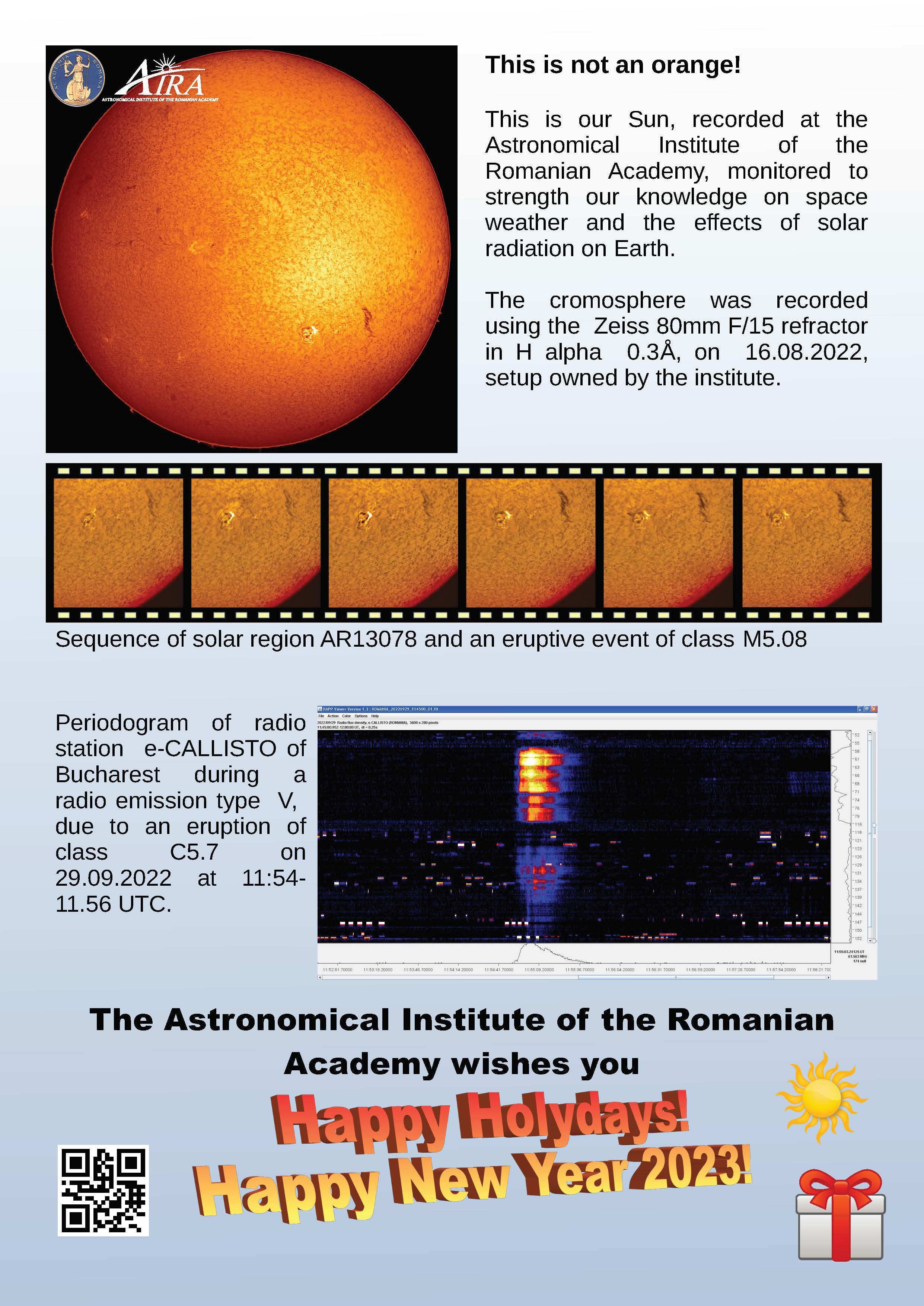
Fête de Science 2022. Culture, education and a tribute to French-Romanian cooperation in astronomy
On the 22nd of November 2022, the Astronomical Institute of the Romanian Academy (AIRA) was invited to a new edition of the cultural event Fête de Science, organized by the French Institute in Romania. The organizers of this event allocated us the beautiful Atrium hall of their headquarters in Bucharest, in order to display all the patrimonial objects and scientific hardware that were brought there by our Institute’s team.
At the beginning of the event, H.E. Ms. Laurence Auer, the Ambassador of France in Romania and Dr. Mirel Bîrlan, Director of the Astronomical Institute of the Romanian Academy, gave speeches to the audience regarding the French-Romanian scientific cooperation in the field of astronomy.
The classical lines of the Atrium Hall where the event took place, were complemented by some of the most interesting patrimonial values of Romania that we displayed there, which formed a small astronomical exhibition. Among these marvels, was the old refractory telescope Bardou, produced in France and used in Bucharest by the Romanian astronomers since 1893. From the early pioneers of the modern Romanian astronomy like Constantin Căpităneanu, to those well known of the present days, this telescope has seen many great personalities of the Romanian astronomy, among all the stars it has seen in the Universe. And, indeed, at Fête de Science 2022, it was Dr. Mirel Bîrlan the one who offered explanations to the audience about this emblematic telescope of Romania and its historical scientific context. Nearby in the exhibition hall, Dr. Alin Nedelcu installed a MOROI/FRIPON all-sky camera in a closed-circuit on a large TV screen, and offered scientific details on the capabilities and integration of these sleepless scientific electronic eyes and AI software modules that watch 24/24 hours the sky of Romania.
Dr. Diana Ionescu introduced the visitors to the astronomical research area of the physics of the Sun, by using theoretical and practical demonstrations. Other scientists of AIRA - Mădălina Trelia and Octavian Blagoi engaged the public in discussions about the research and study of the various types of objects in the Universe, from asteroids to distant stars and intergalactic nebulae. The scaled down replica of the Hubble telescope built by Octavian, was highly appreciated by everyone.
In the background, the mechanical, electro-mecanical and electronic calculating machines we included in the exhibition, were used by the AIRA’s historian Sorin Marin to tell the story of the mathematical requirements of knowledge, speed and precision met by generations of Romanian astronomers as well as by many others in the whole world.
A special guest at the event was Dr. Magda Stavinschi, Honorary Researcher and a former Director of AIRA. Our team also included the technical engineer Nicolae Dociu, who assisted every logistical aspect done during this event.
Published on Nov 26, 2022
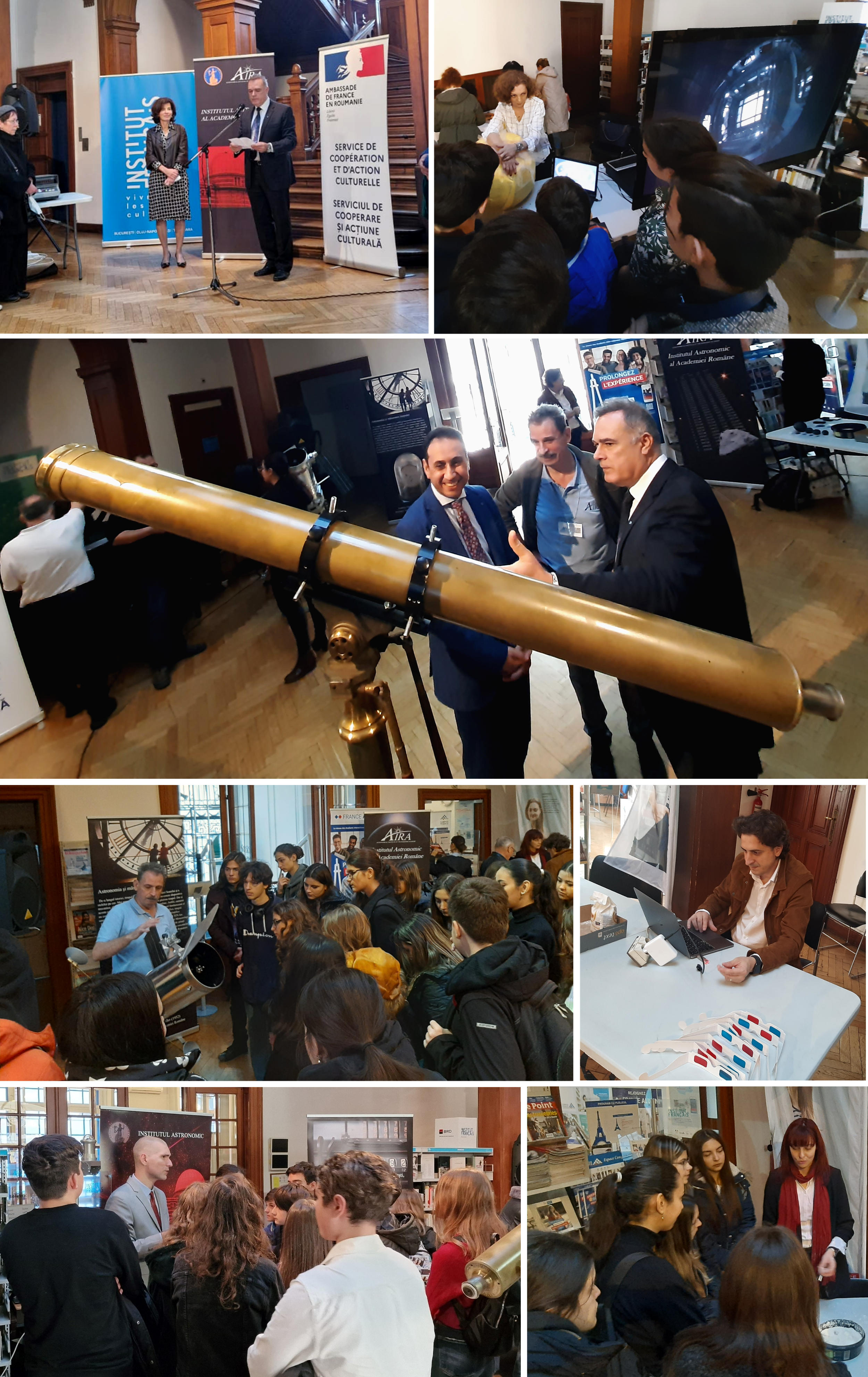
The partial solar eclipse observed from the Central Headquarters of the Romanian Academy.
On Tuesday, October 25, 2022, the Astronomical Institute participated in organizing a guided session of astronomical observations of the partial solar eclipse, visible from Romania as well. The event took place at the Central Headquarters of the Romanian Academy, located at 125 Calea Victoriei, between 12:00 and 15:00, Romanian Legal Time. The event was organized by the Romanian Academy, through the Astronomical Institute of the Romanian Academy, in partnership with the Bucharest Astroclub.
The observations were made using astronomical instruments equipped with solar filters – a 200 mm Newton-Dobson telescope and an 80 mm refractor, as well as special eclipse glasses. The visitors were guided by the scientific staff of the Astronomical Institute of the Romanian Academy, in collaboration with the enthusiastic amateur astronomers of the Bucharest Astroclub.
Explanations and guidance were provided by Magda Stavinschi – Honorary Researcher of the Astronomical Institute of the Romanian Academy, Mirel Bîrlan – Director of the Astronomical Institute of the Romanian Academy, Dan Alin Nedelcu, Diana Ionescu, Mădălina Trelia, and Sorin Marin – specialist staff of the same institute, as well as by Marian Naiman, Cristian Suciu, Victor Vasile, and Melania Boicescu from the Bucharest Astroclub.
The event was attended by the staff of the Romanian Academy's central structure, as well as numerous astronomy and science enthusiasts from the general public.
Published on Oct 27, 2022
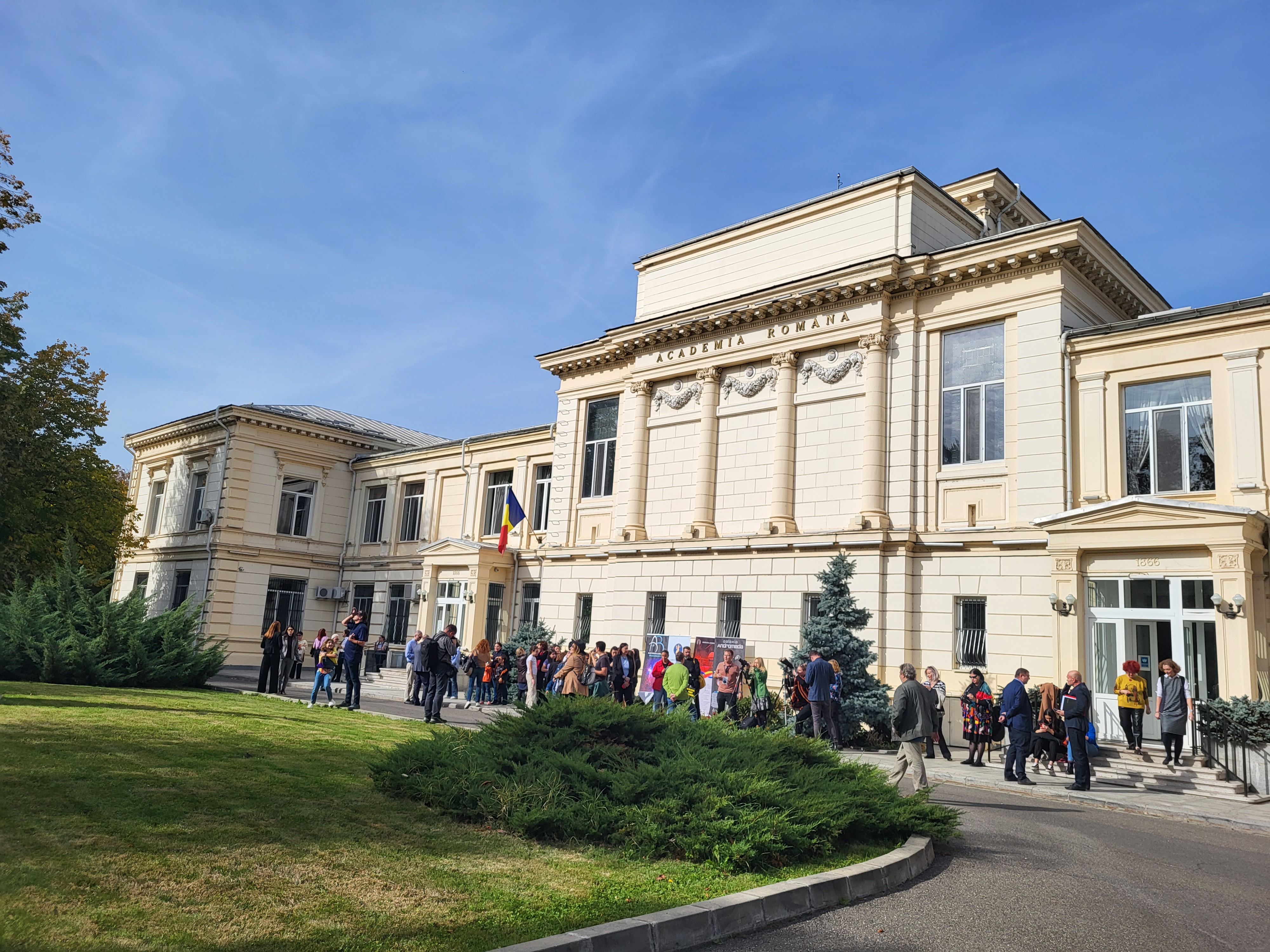
AIRA's outreach team at Bucharest Science Festival & European Researchers' Night
The outreach team of the Astronomical Institute of the Romanian Academy (AIRA) recently participated to Bucharest Science Festival and to the European Researchers' Night educational events which took place in Bucharest and Măgurele.
Aiming to promote science education and astronomy knowledge for the general public, our Institute welcomed visitors inside AIRA's scientific and educational park, during Bucharest Science Festival 2022. The newest attraction of this edition at AIRA was the virtual trip to Pluto from the Equatorial Dome, a construction which is the home of the largest refractory telescope in Romania. Here, AIRA’s astronomy historian Sorin Marin, told visitors the story of our Prin-Merz telescope and its contribution in taking some of the first pictures of the dwarf planet Pluto ever made in the whole world. Walking on the astronomical footsteps of Clyde Tombaugh, the famous US astronomer who discovered Pluto, and of NASA's extraordinary New Horizons mission, the visitors could admire through a Full HD projection some of the best real pictures of this celestial body. Totally engulfed by Pluto’s blue halo as photographed by the electronic eyes of New Horizons back in 2015, the public of the Equatorial Dome had the chance to make a comparison between the pictures of Pluto as taken from the Earth and the fantastic images obtained from its proximity due to the success of the New Horizons mission.
Bucharest Science Festival 2022 at the Astronomical Institute of the Romanian Academy also involved a visit inside the Sun Dome where the tour guides were our scientific researchers, Dr. Liliana Dumitru and Tavi Blagoi. The three Zeiss solar refractory telescopes of this dome were in use during the visits so the public could see the workflow and routine of the Romanian astronomers to scientifically monitor from Bucharest the spectacular activity of our near-by star, the Sun.
During the guided tours, our public had the chance to visit the Meridian Hall’s astronomy exhibition, and also to learn about the impressive historical legacy of the Bosianu House.
For the next two days following the Bucharest Science Festival 2022 event, AIRA's astronomy promoters moved to down-town Bucharest and to Măgurele city square in order to participate to another science fair, the European Researchers' Night 2022. There, our educational stand and telescopes gathered large crowds of people for almost 8 hours every day of the event, with long queues, enthusiasm and patience, for each person to have a glimpse to the filtered flares of our Sun, to Jupiter or to almost orbit over the craters and slopes of the Moon. For this event, the Astronomical Institute of the Romanian Academy had a team of 8 promoters of science and astronomy. Tavi Blagoi, Dr. Liliana Dumitru and Dr. Dumitru Pricopi were the telescopes masters and Solar System explorers together with the gathered public, while other members of our scientific staff - Dr. Dan Alin Nedelcu, Dr. Diana Ionescu, Dr. Ioana Boacă, Mădălina Trelia and Sorin Marin, organized science experiments and debates at the AIRA stand and gave interviews to the press. During all three days of the events the weather was perfect and several celestial bodies of our Solar System were observed through our telescopes.
Published on Oct 04, 2022

Characterization of the Fireballs Detected by MOROI in Romania
The meteors recorded by all-sky cameras in Romania were analyzed in a paper recently published in The Astrophysical Journal. In this paper we study the meteors detected by the FRIPON network in Romania in the time period January 2021 – April 2022 with the use of the MOROI all-sky cameras. We focus on the events with noticeable deceleration (V_f/V_0<0.8 , where V_f is the velocity of the meteoroid at the end of the luminous trajectory and V_0 is the initial velocity of the meteoroid). We characterize the fireball events with the use of the the ballistic coefficient α and the mass-loss parameter β. Based on this analysis, the events are classified in three categories: 1) meteoroids that are likely to produce meteorites, 2) meteoroids that can possibly produce meteorites, 3) meteoroids that are unlikely to produce meteorites. We computed the entry and final mass of each event. We identified a meteoroid that is likely to produce a meteorite on the ground and we analysed its past dynamical evolution. The article is available in Open Access.
Contact ioana.boaca@astro.ro
Published on Sep 12, 2022

M-Class Solar Flare
A M-class solar flare (M5.0) that was detected above the active region NOAA 13078 was also observed today from the Bucharest Solar Observatory. This region has been highly active during the last 24 hours with more than 10 C- and M-class solar flares.
Here is an animation of the Hα images from 06:23 to 08:35 UT. AR NOAA 13078 is visible in the lower right.
Contact: cristi.danescu (at) astro.ro
Published on Aug 16, 2022

Predicting CME Geoeffectiveness
New science on experimenting with different machine-learning methods trained on white-light coronagraph data sets (SOHO/LASCO) of close-to-Sun CMEs, to estimate whether such a newly erupting ejection has the potential to induce geomagnetic activity has been published in the Astrophysical Journal.
Coronal mass ejections (CMEs) are the most geoeffective space weather phenomena. They are associated with large geomagnetic storms, and have the potential to cause disturbances to telecommunications, satellite network disruptions, and power grid damage and failures.
The paper focuses on forecasting the geoeffectiveness of CMEs to exclusively use solar onset parameters, in order to ensure extended warning times. The model proposed correctly identified 80.28% of the geoeffective events, with a precision of 15.19%, based on fivefold cross-validation on the entire data set.
The paper can be read here. Contact diana.ionescu (at) astro.ro.
Published on Aug 06, 2022
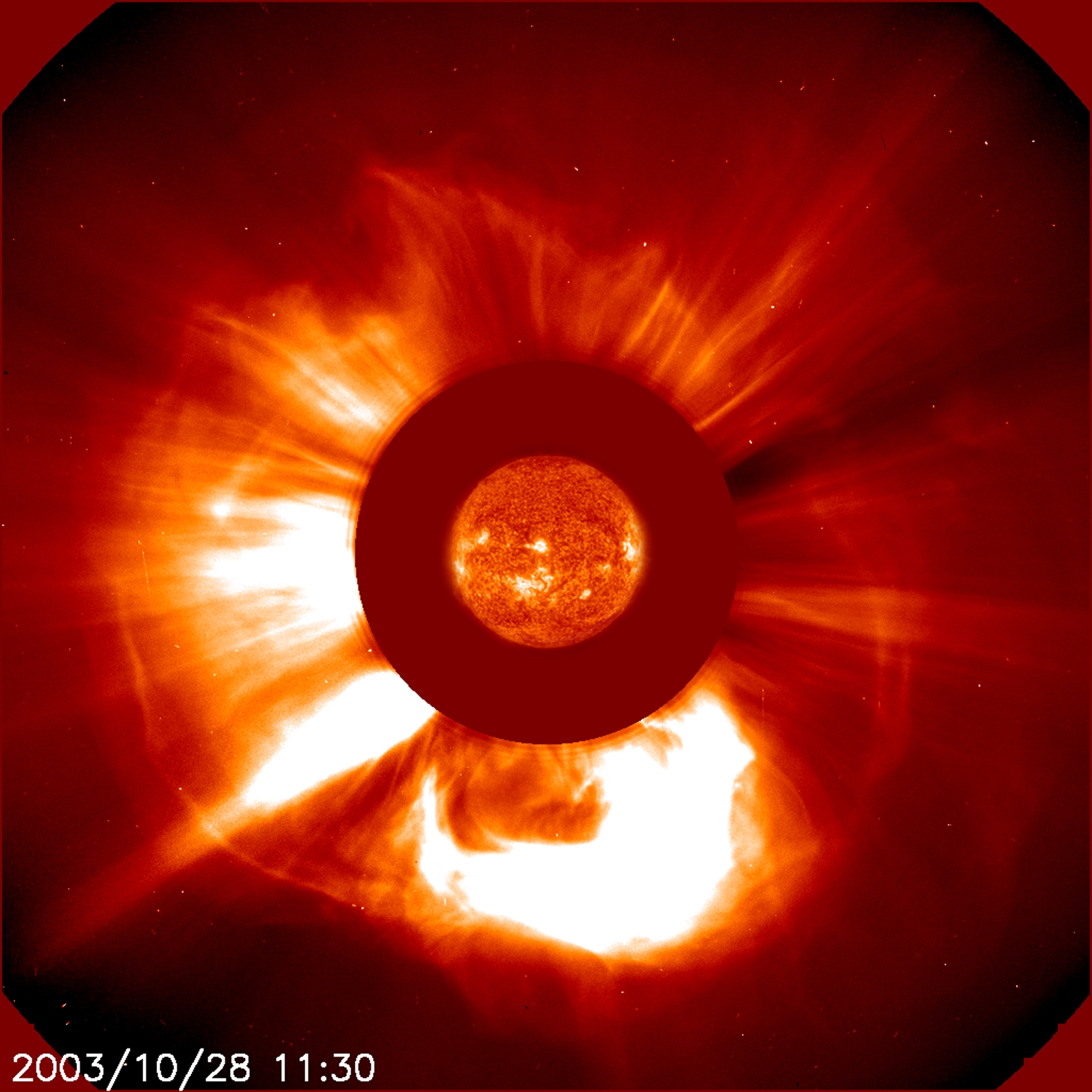
International scientific conference at the Astronomical Observatory in Cluj-Napoca
From July 6-8, 2022, the international conference titled 'Theory, Observations and Data Processing in Astronomy, Astrophysics, Space and Planetary Sciences' was held at the Astronomical Observatory in Cluj-Napoca.
Organized by the Astronomical Observatory in Cluj-Napoca, part of the Cluj-Napoca Branch of the Romanian Academy, and by the Faculty of Mathematics and Computer Science at 'Babes-Bolyai' University in Cluj-Napoca, the conference took place under the auspices of the Cluj Academic Days 2022, with support from the Astronomical Institute of the Romanian Academy and the Romanian National Committee of Astronomy.
The conference was attended by researchers and faculty members from the fields of astronomy, astrophysics, space and planetary sciences, mathematics, and physics from Romania, Hungary, the United States, the United Arab Emirates, Brazil, and Iran. Students from 'Babes-Bolyai' University, interested in the topics addressed, were also present.
The presented papers covered topics related to planetary sciences and solar physics, studies of complex star systems such as binary, triple, and multiple star systems, as well as theoretical studies on cosmology and black hole theory. The approaches to these topics were diverse, ranging from direct astronomical observations, their analysis and modeling, to their processing using modern analysis techniques with the help of artificial intelligence and machine learning processes. The observational data processed in this way are used to develop analytical or empirical models, which ultimately aim to explain the phenomena and issues discussed.
Published on Jul 13, 2022
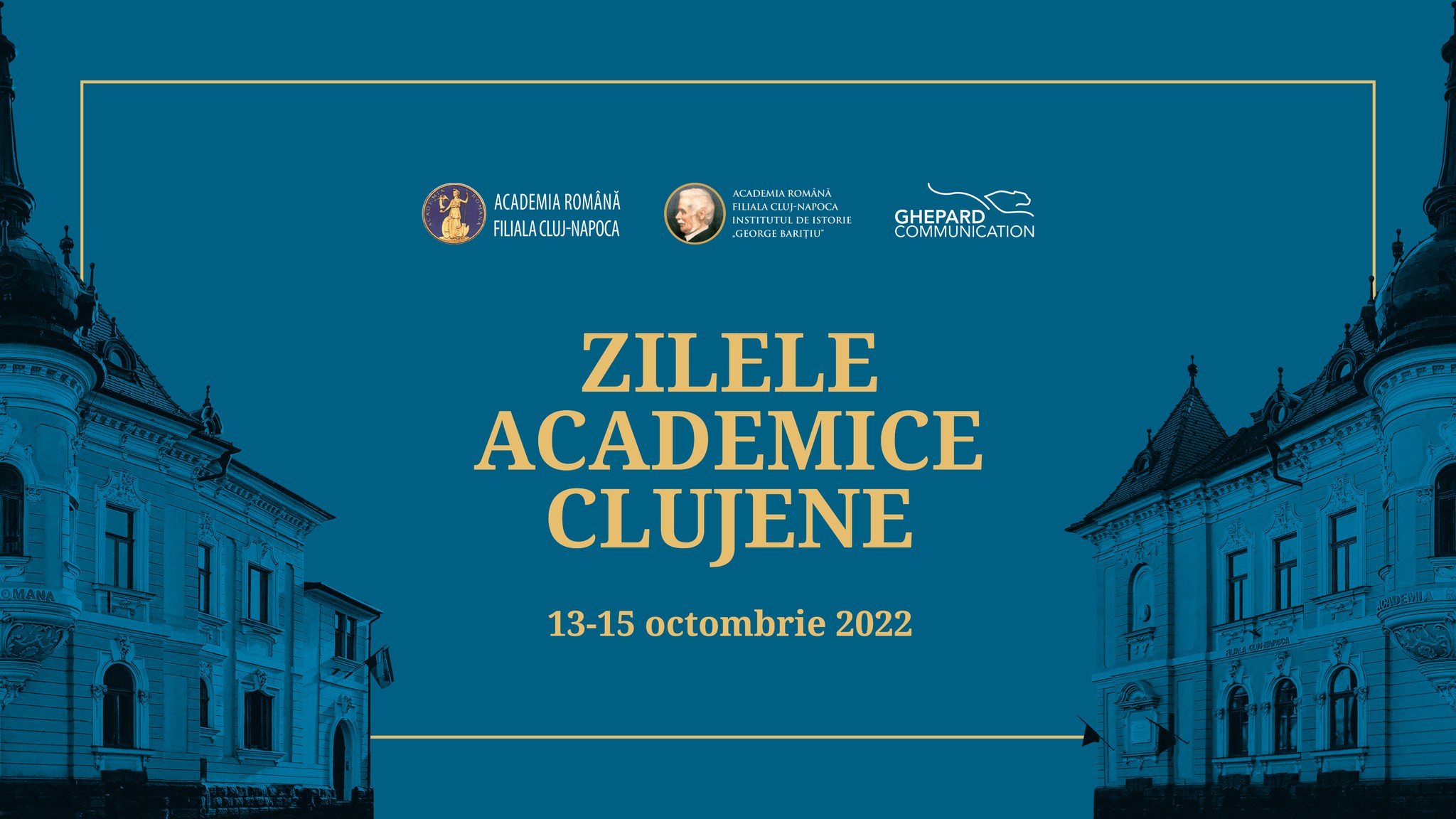
Asteroid Day 2022 - An Open Doors Day at the Astronomical Institute of the Romanian Academy.
On June 30, 2022, from 10 a.m. to 6 p.m., the Astronomical Institute of the Romanian Academy (AIRA) organizes a new edition of the cultural event "Asteroid Day," in the form of an open house. The public can enter the scientific and educational park of AIRA in Bucharest, Str. Cuțitul de Argint, No. 5, by registering on the access list. Those interested can register by calling 021 335 68 92 or by emailing astro@astro.ro.
During the event, visitors will have the opportunity to take a guided tour of AIRA’s museum-like spaces—Meridian Hall and the Equatorial Dome—as well as the main research areas—Sun Dome and the Telescope Building.
Inside these buildings, visitors will be able to see some of the most important instruments in Romanian astronomy from the last hundred years and beyond, including the Prin-Merz and Gautier-Prin telescopes, both classified by the Romanian Government as cultural treasures of the Romanian people, along with the AFU-75 photographic camera, the Le Roy and Riefler fundamental pendulums, the Mercedes and Rheinmetall mechanical and electromechanical calculating machines, followed by Elka electric machines, and the first Romanian electronic computer, Felix, also on display.
In the Planetarium Hall, professional astronomers from AIRA will offer the public presentations with video support about these mysterious celestial bodies of the Universe—asteroids—within the context of Romania's scientific research in astronomy.
Published on Jun 20, 2022
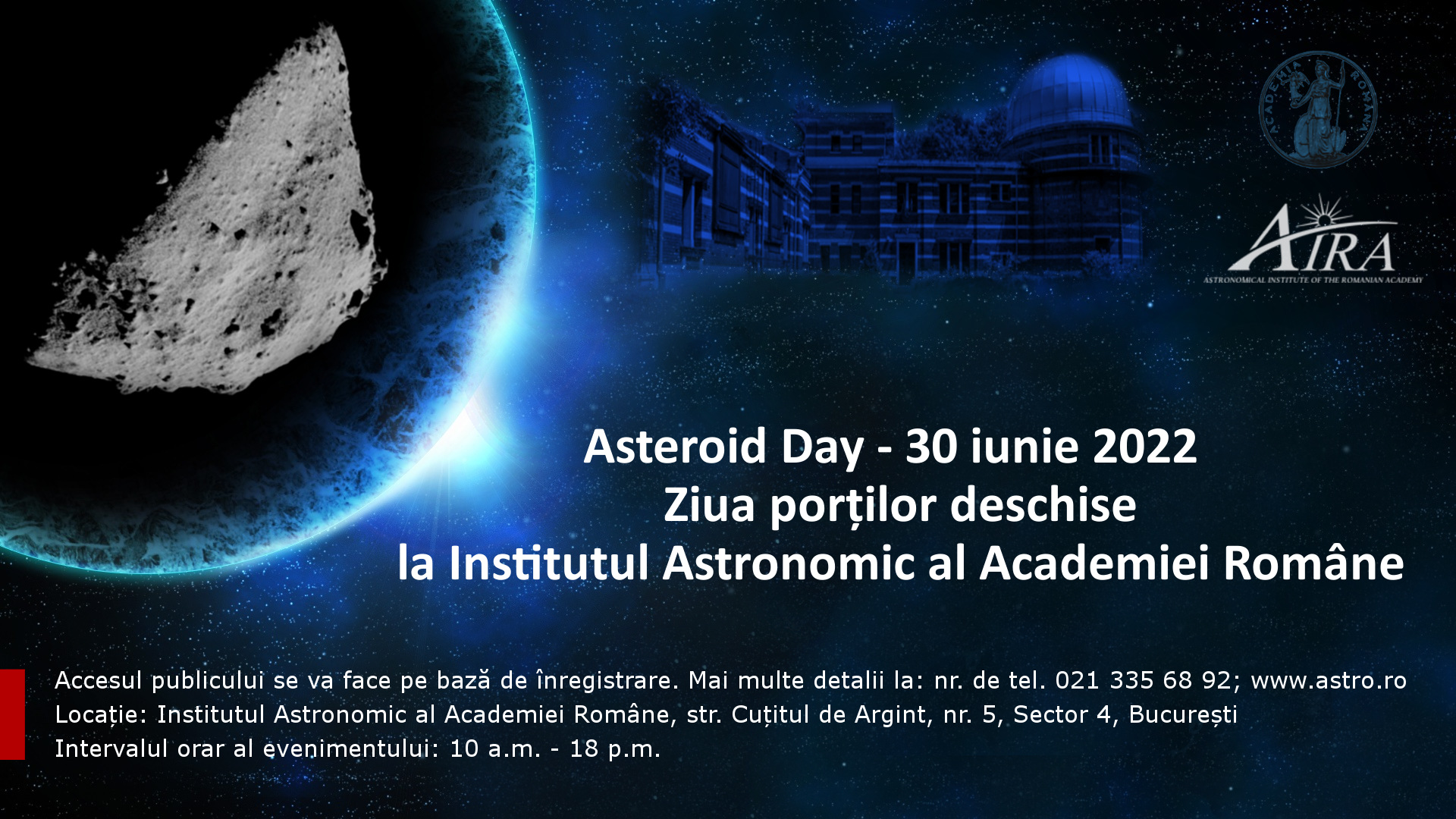
H.E. Mr. Rahul Shrivastava, the Ambassador of India, visited AIRA's headquarteres in Bucharest
Tuesday, 31st of May 2022, H.E. Mr. Rahul Shrivastava, the Ambassador of India in Romania, Republic of Moldova and Albania visited the headquarters of the Astronomical Institute of the Romanian Academy in Bucharest. He was welcomed by our Director Dr. Mirel Bîrlan and by a multidisciplinary team of AIRA members, which also included Dr. Alin Nedelcu, Dr. Diana Ionescu, Dr. Mark Rushton and Sorin Marin. Having a focus on the scientific cooperation between Romania and India in the specific fields of astronomy, astrophysics and the related sciences, the discussions affirmed the mutual interest and potential for a dynamic bilateral scientific agenda, to be followed at a national and international level. The scientific cooperation of the Romanian astronomers with their Indian counterparts of Kolkata, was also remembered during the talks as one of the foundation blocks upon which to continue building the next level of scientific partnership between our two nations.
During the visit, H.E. Mr. Rahul Shrivastava had a guided tour in our 3 Ha. scientific and educational park in Bucharest, and was presented in brief its main buildings, instruments as well as our scientific history of almost two centuries in this particular place of Bucharest. Walking of the foot steps of the first monarch of modern Romania, prince Alexandru Ioan Cuza, who was present here on the same property back in the XIXth C., H.E. the Ambassador of India in Romania visited the Bosianu House. In this building, the details of the 1859 Union between Moldova and Wallachia were set, which led to the creation of the modern Romanian state, a long dreamed, visionary achievement of many generations of Romanians and the nucleus of the Great Union of Romania on the 1st of December 1918.
Published on Jun 06, 2022
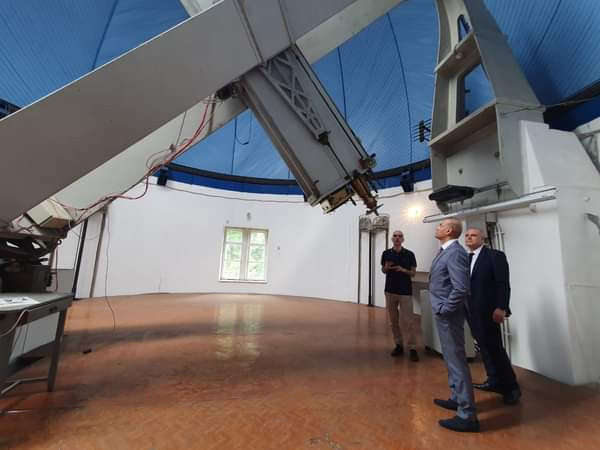
High Speed Streams Catalogue
A High-speed streams (HSSs) catalogue was issued for Solar Cycle 24 (SC24) by Besliu-Ionescu et al. (2022) and is available online at http://www.geodin.ro/varsiti/. Such a catalogue is extremely valuable as it help researchers understand the solar wind state close to the Earth from the point of view of the speed state at a given moment.
HSSs in the solar wind are an important physical driver of space weather. Along with other solar-driven phenomena, they may seriously impact various aspects of our increasingly sophisticated technological lives.
The HSS catalogue for SC24 considers only HSSs generated by coronal holes. These HSSs are recurrent, co-rotating streams with an apparent tendency to occur every 27 days. There are also non-recurrent HSSs produced by certain eruptive solar phenomena such as flares, coronal mass ejections, sudden disappearing filaments, or eruptive prominences.
The catalogue distinctively shows HSS basic properties, their sources, parameters of the interplanetary magnetic field, and various properties related to the associated geomagnetic storms.
The paper can be read here. Contact diana.ionescu (at) astro.ro.
Published on May 31, 2022
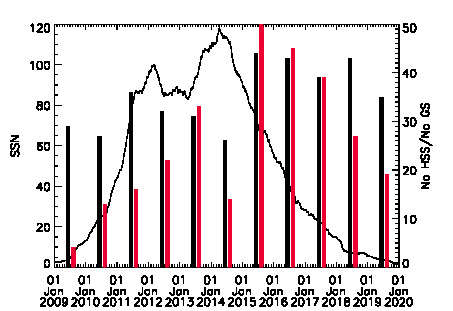
AIRA's participation to Astrofest & Space and Security for Eastern Europe Conference and Exhibition
The Astronomical Institute of the Romanian Academy took part recently to several cultural events: Astrofest 2022 (7 May 2022), a public science & astronomy fair and outreach event organized every year in Bucharest; and the conference and exhibition „Space and Security for Eastern Europe. Romania - 10 years in the European Space Agency” (16-19 May 2022).
During both events, the Astronomical Institute was present with a colorful, dedicated exhibition stand and a specific cultural offer in terms of information about our scientific researches on a theoretical and practical level, including the instruments and technologies we use in these processes. The constant flow of people around our exhibition stand, gave us the chance of presenting to the public, through a series of large info panels with graphics and text, the cultural and patrimonial heritage of our 3 Ha. scientific and educational park in Bucharest. Countless questions were asked and answers were given, while several group visits of our headquarters were booked as well.
For the second event, as the exhibition format allowed us, we brought in our stand additional hardware and IT support such as the two touch screen Info Points, quite popular among our visitors, and an all-sky MOROI/FRIPON scientific camera connected through a dedicated PC to a laser projector, which offered to the visitors a live demonstration of the image and optics parameters that are used by this type of AIRA equipment.
The events gathered at our exhibition stand a wide public, from kindergarten children who looked with amazed eyes and exclamations to the spaceship and astronauts models we presented as educational accessories for their age group, up to Romania’s first and only man in space, our cosmonaut and Romanian Army general, Dr. Eng. Dumitru Prunariu.
Published on May 23, 2022
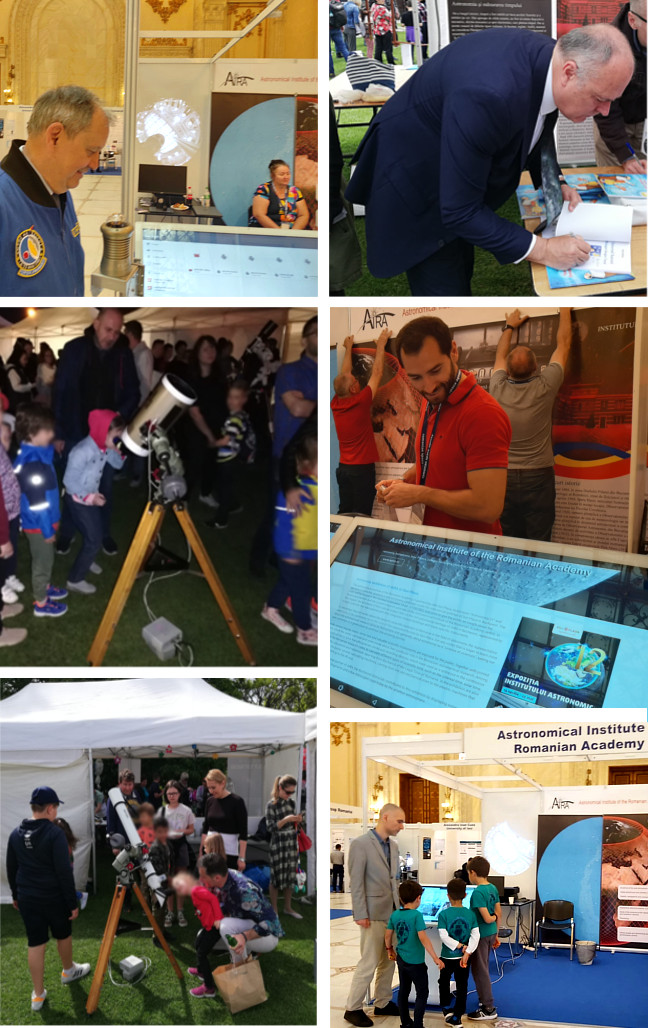
Astronomy exhibition of AIRA at Sun Plaza
The Astronomical Institute of the Romanian Academy, in partnership with Sun Plaza, Association “Astronomia 21” and Bucharest Astroclub, presents a new astronomy exhibition inside the commercial galleries of Sun Plaza in Bucharest. The event will be hosted in this location in between 15.04 - 27.05.2022, and aims to give the public an insight about the historical endeavor and the current research activities of the Astronomical Institute of the Romanian Academy (AIRA). In this respect, the emphasis of this cultural project falls on the rich patrimonial heritage of AIRA in Bucharest, represented by a large scientific and educational park that integrates several buildings and many specific instruments.
A messenger beyond words about the dynamic scientific evolution of Romania in the field of astronomy, the representative selections of our patrimony forms the core of this exposition hosted by Sun Plaza. For any visitor that is eager to learn more about the astronomical research done by Romanians and, generally, about astronomy as a “science of sciences”, seeing our new exhibition is a good place to continue this amazing journey.
Inside several display cases, some rare and valuable scientific instruments are exposed for the public, together with printed panels where the visitor can read and understand about their particular role in the Romanian astronomical research. Among these cultural items are a few ultra-precise clocks and recording devices, which were used as a reference in the continuous efforts of the Romanian research crews to calculate different types of scientific time, such as the sidereal time, solar time, including the calculation and nationwide reporting from Bucharest of the Legal Time of Romania. In the exhibition are also presented to the public several calculating machines, coming form the old mechanical ones to the electric machines that were used at AIRA up to the PC era.
As a close educational partner of AIRA, the Bucharest Astroclub, contributed to this exhibition by displaying some interesting meteorite fragments and a few telescopes used today by the amateur astronomers.
Published on Apr 28, 2022
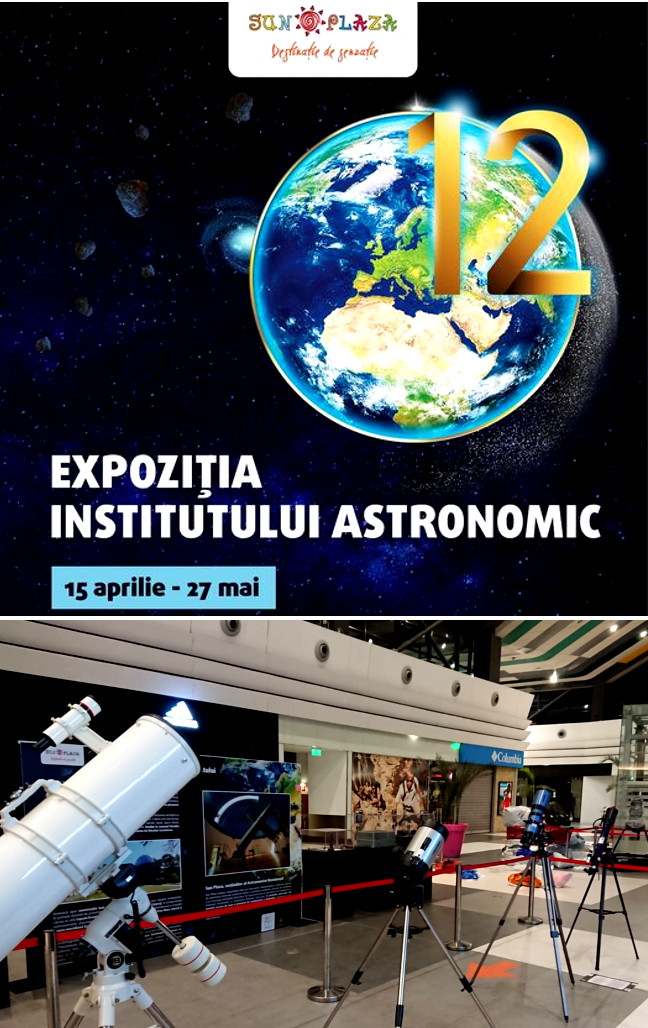
Discovery of new short period variable stars in open clusters using OmegaWhite data
Variable stars are cosmic sources of light that change their brightness in time due to various physical phenomena like atmospheric pulsations and/or geometrical configurations like eclipses.
The OmegaWhite (OW) is a wide-field high-cadence synoptic survey that is searching the Galactic Plane and Bulge for intriguing rare variable stars like the interacting ultra-compact binary systems (also known as AM CVn stars). These are pairs of white dwarf stars that exchange mass. The key point of the survey is that it was designed to explore a new space of parameters: namely to search for faint, low-amplitude stars that exhibit short sinusoidal modulations in their light curves, with periods shorter than 20 min. These are the rarest types of AM CVn stars and also the hardest to be detected by typical transient and spectroscopic surveys due to their observing properties (only 7 are known today).
OW started in 2011, and uses the OmegaCAM detector on the 2.5 m VLT Survey Telescope in Chile. A large number of intriguing variable stars was discovered and several have been followed-up. The most interesting examples like the progenitor of an AM CVn system, the second warm magnetic carbon white dwarf, etc. have been reported in several publications.
The latest study reports on the searching for variable stars with periods shorter than 1 hr in open clusters that happen to overlap the OW fields. Open Clusters (OCs) are gravitationally bound groups of tens to hundreds of stars that reside in the thin disk of our Milky Way. The novelty of this study is that no other open clusters survey has explored the faint stars in the space searched by the OW. The importance of this work is significant since a star that physically belongs to an OC has more known parameters (e.g. the same distance and age as the cluster) and can be used to test stellar physics theories. OCs population studies can also be used to trace the structure and evolution of our Galaxy.
A number of 92 variable stars were found into a set of 20 OCs. Several stellar catalogues were used, including the newest derived from data released by the Gaia mission, to assess if our stars are cluster members. Of these, only 12 have the highest probability to be members, 6 more have unknown status and the remaining are field stars. From spectroscopic follow-up data and studies of the Gaia colour-magnitude diagram, 12 members are low-amplitude delta Scuti pulsators - one of the most common class of variable stars, as expected. The shortest period star found is a 29.8 min delta Scuti with a chance of only 66 percent to belong to an OC. Most of the stars discovered are longer periodic variables. The Gaia Hertzsprung-Russell Diagram (Fig. 1) indicates that the new found cluster members (shown as red star symbols) are located on the main-sequence and beyond; the latter are evolved pulsators. Among the field stars (pink dots), there could also be main-sequence high-amplitude delta Scutis and eclipsing binaries. As reference, all the field stars within 50 pc from the Sun (smaller dark dots) are shown. It is assumed that these closer field stars are not affected by reddening. The report concludes that the new results are in agreement with the literature: there is a relative small number of delta Scuti stars that are members of OCs.
More information: The most recent project was presented in a new published paper in the Monthly Notices of the Royal Astronomical Society Journal: The OmegaWhite Survey for Short Period Variable Stars VI. Open Clusters, by Toma et al. https://doi.org/10.1093/mnras/stac802.
Published on Apr 07, 2022
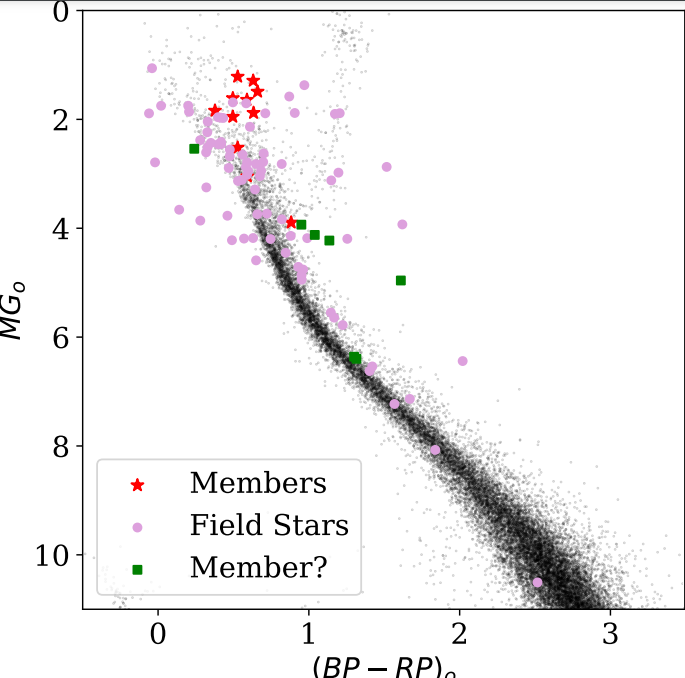
The first radio burst type II detected at Bucharest CALLISTO Station
The solar activity is increasing beyond the predictions for the solar cycle 25. Following a M4 class solar flare in the active region AR12975 occurred at 11:28 UTC, there was a radio burst type II and an Earth direction Coronal Mass Ejection (CME). The type II radio burst was detected and recorded by the CALLISTO radio spectrometer installed at AIRA Bucharest, a custom device for this kind of radio observations, developed by Christian Monstein (IRSOL, Switzerland).
Type II radio are characterized by a slow drift in frequency and two distinct bands of fundamental and harmonic frequencies of the hot plasma emissions. The electrons are accelerated by the shock-wave in front of a CME so these phenomena are strong correlated. In the picture, the blue to red contiguous zones represent the emissions and the other smaller lines and zones are Radio Frequencies Interference (RFI) caused by various terrestrial sources like computers, switching power supply, radio communications, static noise and so on.
A custom software was used to extract the relevant signal from the background noise, provided by Christian Monstein to all e-callisto network stations. More information on: http://www.e-callisto.org/. Contact: oblagoi (at) astro.ro
Published on Mar 29, 2022

Summer Time in Romania - 2022
As daylight time gets longer this period of the year, summer time in Europe will begin in Romania on Sunday, 27 March 2022, at 3 a.m. EET, when clocks will be set one hour ahead. This corresponds to the practice of Daylight Saving Time (DST) applied in the US, Canada, parts of Australia and to some other countries of the world. Today, only a minority of the world’s population uses DST, respectively a number of states located, in general, north or south of the tropics where daylight lasts shorter in the winter and longer in summer.
Regardless on how this is known as - Summer Time in Europe or Daylight Saving Time in other places of the world, this practice basically aims to save energy by the usage of more natural light in all human activities and less artificial light, which is energy consuming. As we still use to a significant extent fossil fuels to produce our energy, such a simple, conventional procedure like summer time observing leads to a significant cut in energy consumption and consequentially, of our carbon footprint on Earth.
Summer time in Europe is applied in most European countries, excepting Turkey, Iceland, Belarus and Russia.
This solution of making human activities more energy-effective was introduced in Germany in 1916, during the military and economic crisis of the First World War. However, for almost half a century afterwards, this practice was discontinued and then reintroduced at times in various places of the globe. The energy crisis of the late 1960s-1970s changed this dynamics ever since, and the European Summer Time is now used every year on most of our continent.
Published on Mar 24, 2022
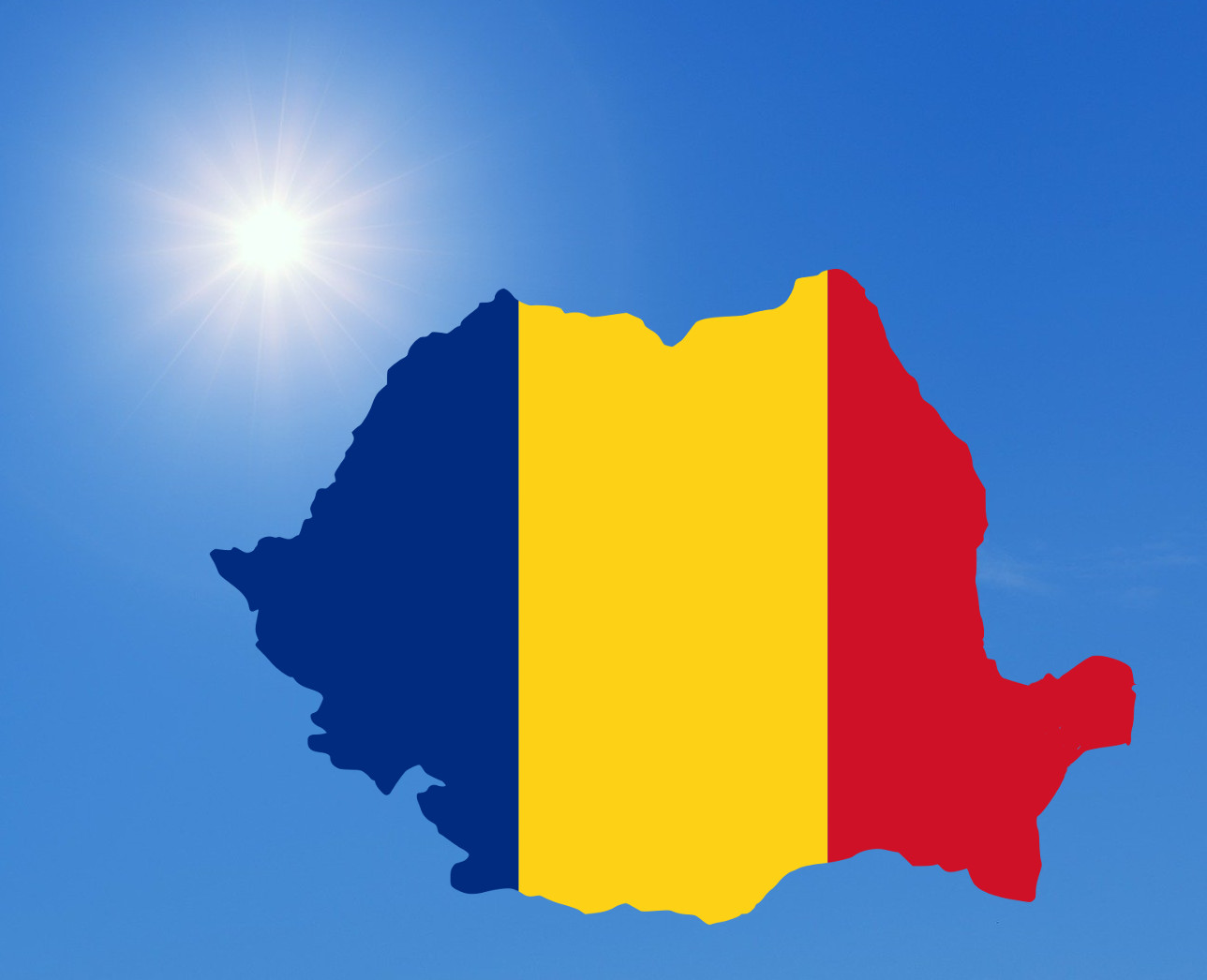
Fireball detected over Romania NE region
The MOROI network recorded a multiple event on 2022-02-17 01:37:20 UTC. The meteor was detected by 3 stations (Mădârjac- ROIS01, Suceava- ROSV01, Bârlad-ROVS01). The image shows in red the luminous trajectory of the meteoroid. The final point of the luminous trajectory is depicted by the yellow circle. The three MOROI stations that detected the meteor are coloured in green. The fireball detections from each stations are represented on the image below.

The meteoroid, with an initial mass estimated to be around 500 kg, vanished completely during the ablation phenomenon. The luminous trajectory started at 88 km altitude and ended at 39 km, the body having a final speed of 24.39 km/s.
Although there are no remnant pieces of material because the object burned completely, based on dark flight segment simulation for a potential surviving fragment with a mass of 50 g under realistic atmospheric wind condition, we estimate that such a body would have landed in the Republic of Moldova. contact: ioana.boaca (at) astro.ro
Published on Feb 22, 2022
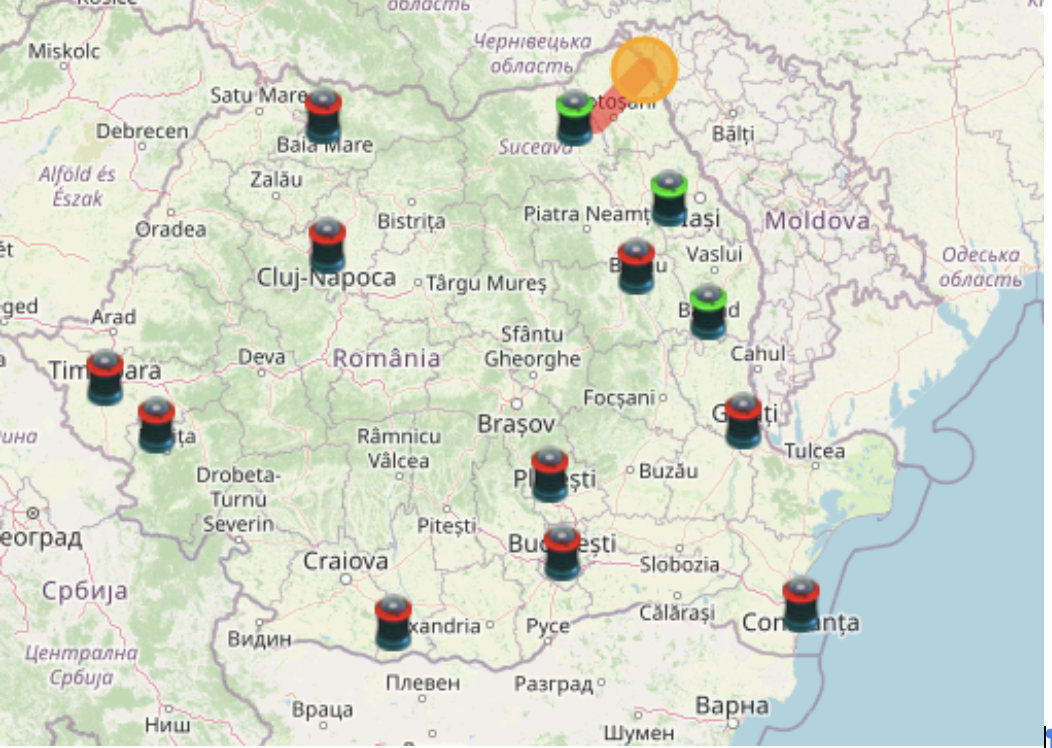
A robust method to measure large meteoroids colliding with the atmosphere
Meteoroids are fragments of asteroids which travel across the interplanetary medium. Although the Earth's atmosphere is bombarded by decimeter-size objects multiple times per day, a precise measurement of their size is poorly constrained. It is known that the larger they are, the lesser the chance of an impact with the Earth. However, their size is just too small to be observed by telescopes.
In a recent study, a more robust method of measuring fireballs was proposed. The semi-empirical relation is based on the entry mass of well known objects of ton-TNT scale impact energy, and their measured radiation. This relation takes as input the fireball radiated light along the atmospheric trajectory, to estimate the source energy of the meteoroid.
This photometric-based method is becoming be very accessible to use since the optical fireball networks are increasing both in number and size. Thus, a next step is to derive a more accurate size-frequency distribution of the meteoroids, and constrain the risk involved in expanding the space-based infrastructure.
The chart to the right shows energy calibrations of well known bolides around the ton-scale TNT. The error bar on the source energy represents the combined uncertainties from mass and velocity. The thin black line is the fit obtained by (Brown et al. 2002) corresponding to source energies greater than 0.1 kt TNT. This is continued with the dotted grey line onto this energy category. The red line is obtained as a best fit of the calibrated impact energy of bolides. The displayed objects have well studied trajectory data, and all except the small circles with black contour were the subject of successful meteorite recovery campaigns. The 100% luminous efficiency correspondence is represented by the thick line.
More information: This research was presented in a paper published in “Monthly Notices of the Royal Astronomical Society” (https://doi.org/10.1093/mnras/stab2968)
Published on Jan 25, 2022
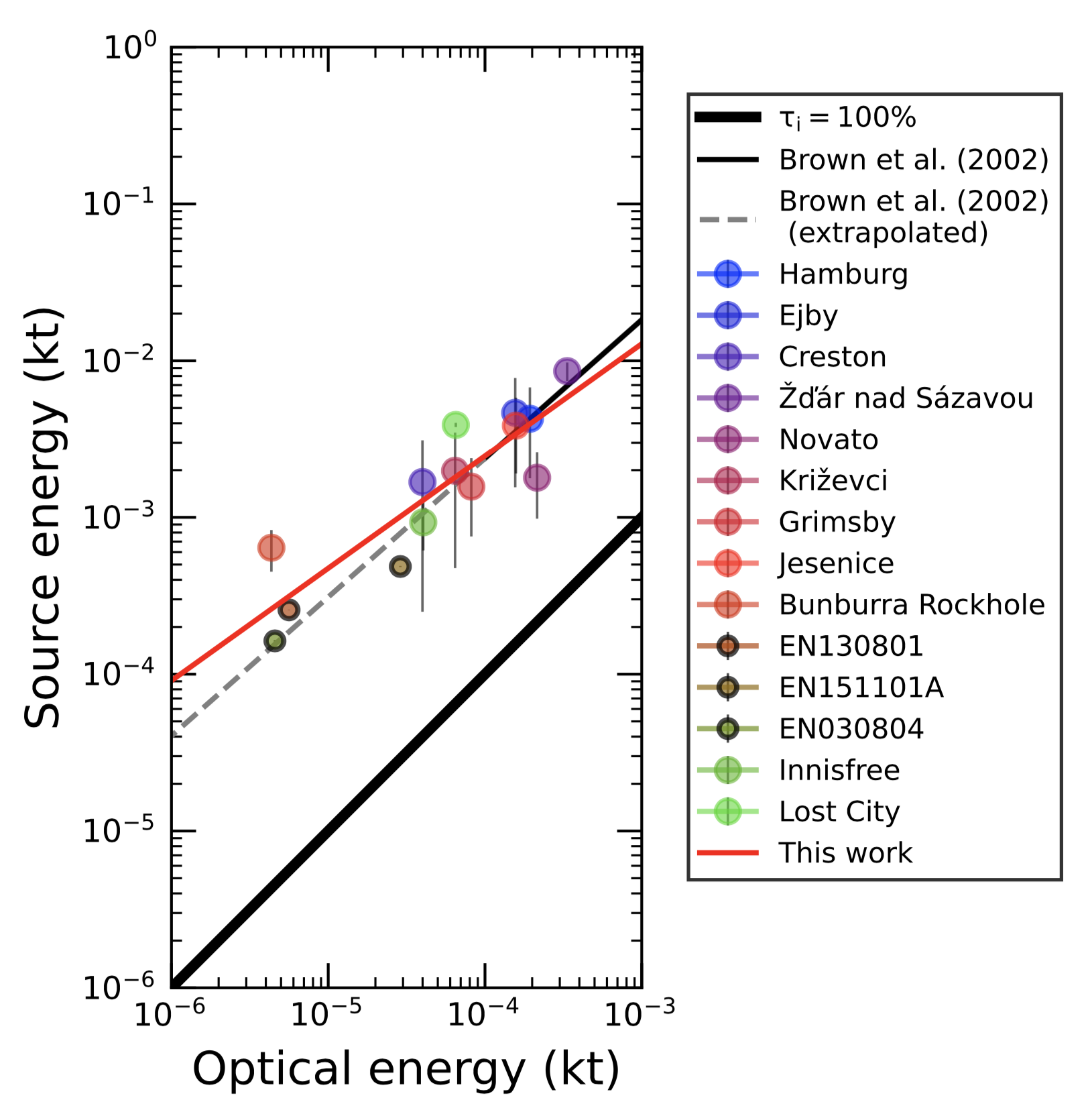
James Webb Observations from Bucharest
The James Webb Space Telescope is a project of the United States Space Agency (NASA), with manufacturing and launch costs approaching 10 billion dollars. The telescope will scan the Universe in the near and mid-infrared wavelength range (0.6-26 microns). It has a diameter of 6.5 meters.
Its launch took place on December 25 at 14:20 Romanian local time, from the launch base in French Guiana, using the European Ariane 5 rocket. The European Space Agency (ESA) was also involved in the James Webb project. The Romanian Space Agency (RoSA) is a member of ESA.
On the evening of December 25, 2021, just 6 hours after launch, the James Webb Space Telescope was observed from the Astronomical Institute of the Romanian Academy. At the time of the observations, the telescope was 95,000 kilometers away from Earth.
The observations were made with a 0.5-meter diameter telescope at the Astronomical Institute of the Romanian Academy, located in Bucharest. The animation accompanying this text shows the James Webb Telescope on its journey to the Earth's Lagrange point L2. The image also shows the second stage of the rocket that launched the telescope.
Published on Dec 26, 2021
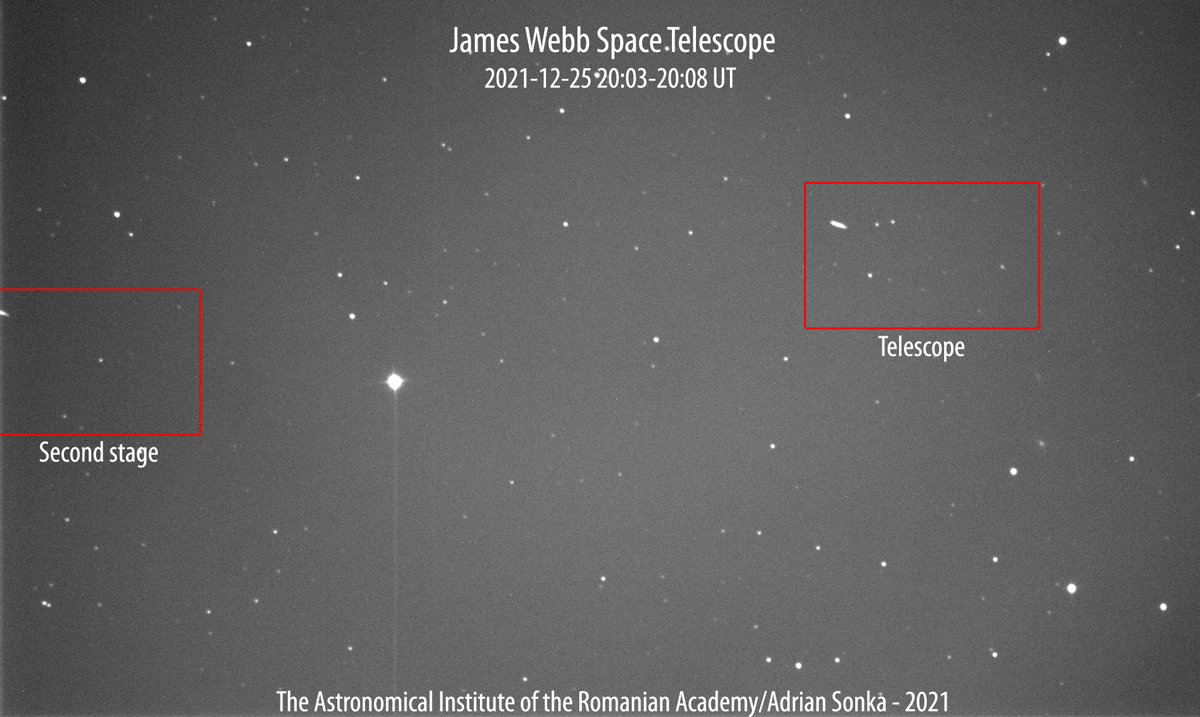
Winter Time 2021
On Sunday, October 31, 2021, clocks in Romania will be turned back by 1 hour and we will return to the standard hour which is considered the Winter hour. Thus, 4 am will become 3 am, Romanian Local Time. This way the difference between the local time of Romania, Winter time (EET) and the Coordinated Universal Time (UTC) will be of two hours.
After the Autumnal Equinox, the daylight length decreases while the night length increases. Therefore, the time system of turning the clocks back in the Autumn and ahead in the Spring, was implemented in Europe during the last century for the people to use the natural light as much as possible in their daily activities and thus, save energy.
Published on Oct 30, 2021

Large Program of Asteroids using VLT/SPHERE instruments
The Director of the Astronomical Institute of the Romanian Academy (AIRA), Dr. Mirel Bîrlan is part of the international team that used the European Southern Observatory’s Very Large Telescope (ESO’s VLT) in Chile, and imaged the largest objects in the asteroid belt, located between Mars and Jupiter.
Never before had such a large group of 42 asteroids been imaged so sharply. The observations reveal a wide range of peculiar shapes, from spherical to dog-bone, and are helping astronomers trace the origins of the asteroids in our Solar System.
The detailed images of these 42 objects are a leap forward in exploring asteroids, made possible thanks to ground-based telescopes, and contribute to answering the ultimate question of life, the Universe, and everything [1].
“Only three large main belt asteroids, Ceres, Vesta and Lutetia, have been imaged with a high level of detail so far, as they were visited by the space missions Dawn and Rosetta of NASA and the European Space Agency, respectively,” explains Pierre Vernazza, from the Laboratoire d’Astrophysique de Marseille in France, who led the asteroid study published today in Astronomy & Astrophysics.
The previously small number of detailed observations of asteroids meant that, until now, key characteristics such as their 3D shape or density had remained largely unknown.
”Between 2017 and 2019, Pierre Vernazza successfully and efficiently led an international team of which I was part and which aimed to fill this gap by conducting a thorough survey of the major bodies in the asteroid belt”, said Dr. Mirel Bîrlan, the Director of the Astronomical Institute of The Romanian Academy (AIRA).
Most of the 42 objects in their sample are larger than 100 km in size; in particular, the team imaged nearly all of the belt asteroids larger than 200 kilometres, 20 out of 23. The two biggest objects the team probed were Ceres and Vesta, which are around 940 and 520 kilometres in diameter, whereas the two smallest asteroids are Urania and Ausonia, each only about 90 kilometres.
By reconstructing the objects’ shapes, the team realised that the observed asteroids are mainly divided into two families. Some are almost perfectly spherical, such as Hygiea and Ceres, while others have a more peculiar, “elongated” shape, their undisputed queen being the asteroid Kleopatra.
By combining the asteroids’ shapes with information on their masses, the team found that the densities change significantly across the sample. The four least dense asteroids studied, including Lamberta and Sylvia, have densities of about 1.3 grams per cubic centimetre, approximately the density of coal. The highest, Psyche and Kalliope, have densities of 3.9 and 4.4 grammes per cubic centimetre, respectively, which is higher than the density of diamond (3.5 grammes per cubic centimetre).
This large difference in density suggests the asteroids’ composition varies significantly, supporting the theory that the celestial objects were formed in different areas of the Solar System and migrated to their current location.
These findings were made possible thanks to the sensitivity of the Spectro-Polarimetric High-contrast Exoplanet REsearch (SPHERE) instrument mounted on ESO’s VLT.
Astronomers will be able to image even more asteroids in fine detail with ESO’s upcoming Extremely Large Telescope (ELT), currently under construction in Chile and set to start operations later this decade.
”The study of asteroids is a field where Romanian researchers contribute constantly and significantly. As an associate astronomer of the Astronomical Institute of the Romanian Academy and astronomer of the Paris Observatory, I encouraged and facilitated collaborations between researchers from Romania and France. We have two Romanian doctoral students and researchers with the title of doctor who study small bodies - comets, asteroids, meteoroids - in the Solar System, "said Mirel Bîrlan.
Among the recent results of Romanian researchers are observations of the potentially dangerous asteroid (99942) Apophis, made at the Astronomical Observatory in Cluj-Napoca, Feleacu station, observations of the asteroid Pallas, observations of the asteroid (6478) Gault.
"The Institute's strategy will continue to support research efforts in these directions. Our projects include studies of asteroids approaching dangerously close to Earth, the relationships between asteroids, comets and meteors, the interaction of interplanetary matter with Earth, studies of the dynamics of natural and artificial objects near Earth, "said AIRA Director Mirel Bîrlan.
Notes
[1] In The Hitchhiker's Guide to the Galaxy by Douglas Adams, the number 42 is the answer to the "Ultimate Question of Life, the Universe, and Everything." Today, 12 October 2021, is the 42nd anniversary of the publication of the book.
More information:
This research was presented in a paper to appear in Astronomy & Astrophysics
https://www.aanda.org/articles/aa/full_html/2021/10/aa41781-21/aa41781-21.html.
Original Press release colud be find at the address: http://rosa.ro/index.php/en/news-menu/stiri/5704-meet-some-of-the-42-biggest-asteroids-in-our-solar-system
Published on Oct 13, 2021
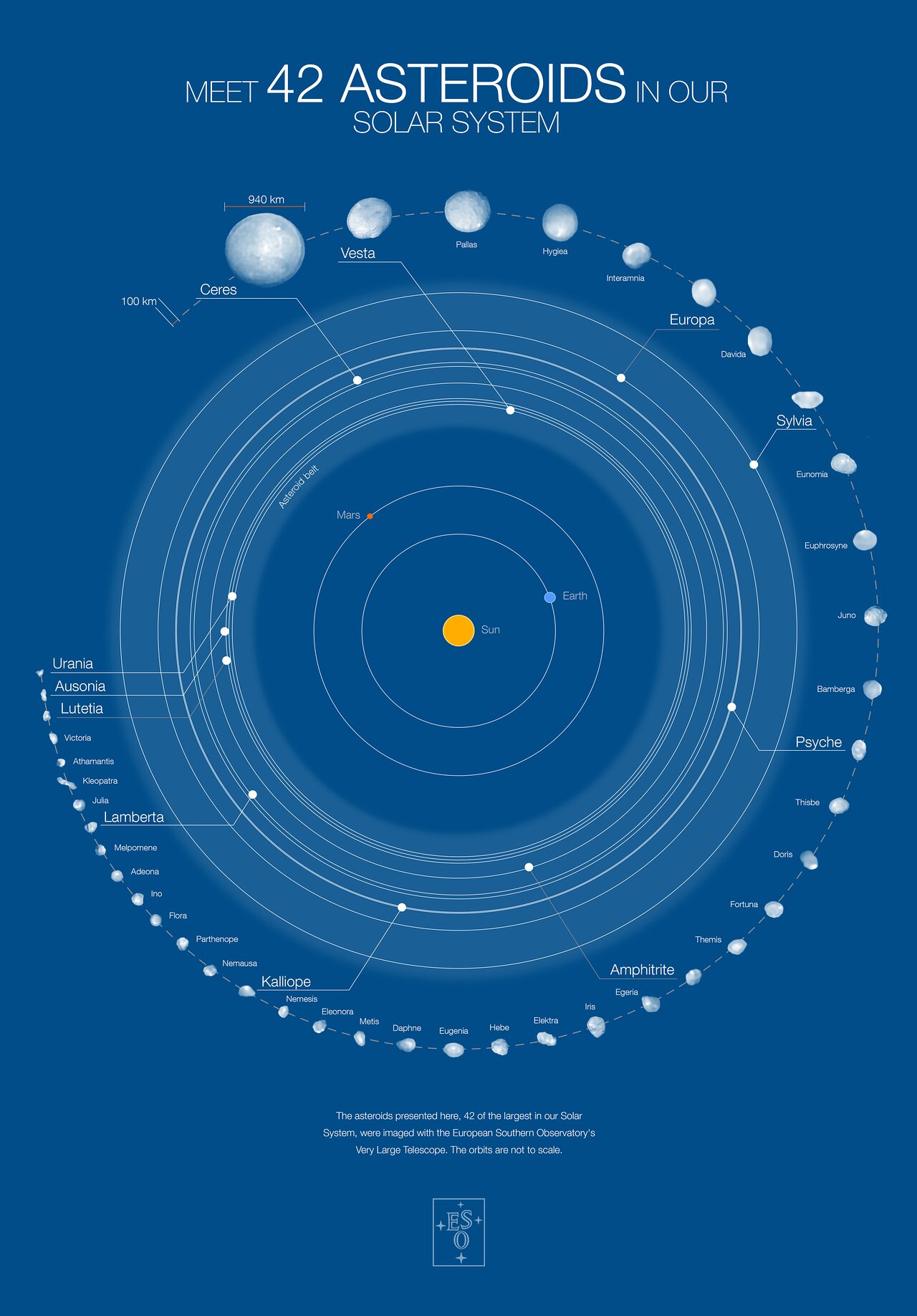
Autumn equinox 2021
By definition, the moment of autumn equinox in the Northern Hemisphere corresponds to the precise time when the apparent geocentric longitude of the Sun is equal to 180 degrees. But, a more common understanding of this phenomenon in our society is that it happens on a certain day of September when daytime equals the duration of nighttime.
In 2021, the autumn equinox will arrive on Wednesday, 22nd of September, at 19 hours 21 minutes and 06.77 seconds UTC, respectively at 22 hours 21 minutes and 06.77 seconds (UTC+3h) which is the Current Local Time in Romania, as we use the Eastern European Summer Time (EEST).
At the moment of the autumn equinox, in 2021, the geocentric latitude of the Sun equals -0.56″, the right ascension has a value of 11 hours 59 minutes and 59.985 seconds, while his declination is -0.52″. As we can see by looking at the values of geocentric latitude and right ascension, they are close to 0 and respectively to 12 hours. This is the reason why we use to say about the Sun during this moment of the autumn equinox that it is in a direction opposite to that of the vernal point. Scientifically, this statement is considered partially true and it can be generally accepted as the apparent diameter of the Sun is about 30 arcminutes.
The autumn equinox in the Northern Hemisphere of the Earth corresponds to the spring equinox in the Southern Hemisphere. The calendar used nowadays in Romania is the Gregorian calendar. This time instrument was created in 1582 in order to adjust the calendar drift with respect to the succession of the seasons. Therefore, according to the Gregorian calendar, the dates of the autumn equinox will always be during 21-24 September. Actually, in most years, the autumn equinox will arrive on the 22nd or 23rd of September while the dates when this will occur on the 21st or on the 24th of September are less frequent. For example, in the year 2092, the autumn equinox will occur on the 21st of September for the first time since the creation of the Gregorian calendar. Similarly, in 1803 the autumn equinox took place on the 24th of September, for the first time since the creation of the Gregorian calendar. Image in full resolution is available here.Published on Sep 20, 2021
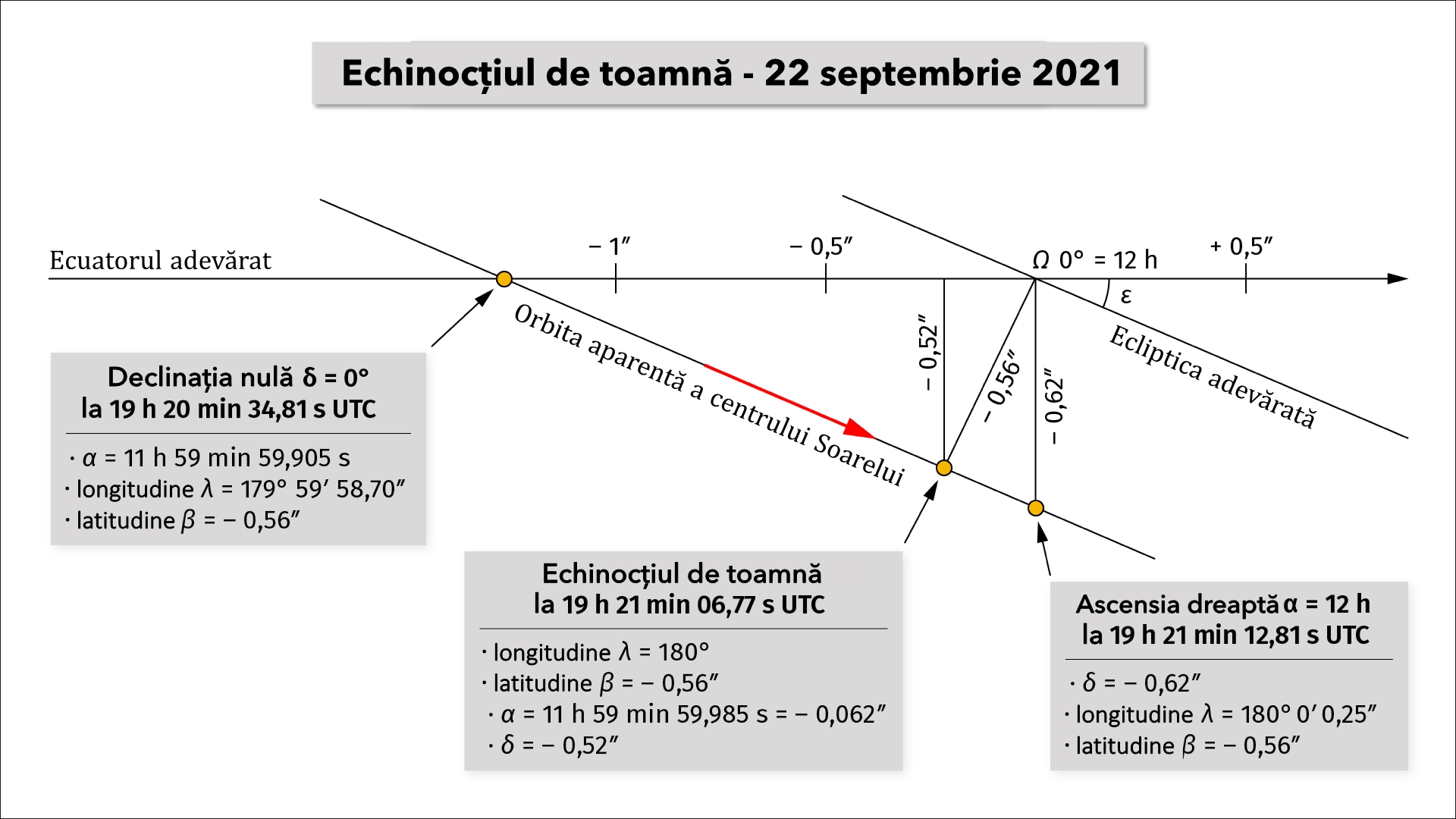
Solar image, AIRA - 01.09.2021
A chromospheric solar image with the active region AR12860, made at Bucharest Solar Observatory on 01.01.2021. This region has the greatest activity at the beginning of the 25th solar cycle, with an M4.7 class and several C1-C9 class eruptions. Instrumentation used: Zeiss refractor 110mm F/15, Halpha Baader Solar Spectrum 0.3A, 0.4X reducer, camera ASI290MM mono. Processed in AutoStakkert 3 and gimp. In this image different features of the solar activity in the chromosphere region can be seen: sun dark spots, plages (bright regions of very hot plasma), flares, filaments of cold plasma, fibriles, prominences, and spicules at the limb. Author: scientific researcher Octavian Blagoi. Annotated colorized image in full resolution available here.
Published on Sep 03, 2021

A group from Nicolae Bălcescu Youth Cultural Center visited AIRA
Members of „Nicolae Bălcescu” Youth Cultural Center and a group of 18 students from several Bucharest high schools were welcomed today at the Astronomical Institute of the Romanian Academy. Their visit was joined by the B1 TV crew which made interviews and a news report. During the event, the AIRA team was represented by our Director, Dr. Mirel Bîrlan, and by historian Sorin Marin. The astronomy promoter Daniel Berteșteanu from Bucharest Astroclub, was also invited and took part in the event.
The participants had the chance to attend several science presentations as they observed the Sun through a refractory telescope using an H-alpha filter, astronomy lessons in the Planetarium Hall and didactic laboratory demonstrations with projector support and various specialized hardware and software.
All these were followed by a relaxing guided tour which included: the Ecuatorial Dome - where it is preserved the largest refractory telescope in Romania, the marvels of Meridian Hall, Bosianu House, Sun Dome, and Telescope Building. While walking towards Bosianu House, a neo-gothic architectural jewell, the students learned they were walking on the footsteps of Prince Alexander John Cuza, who was present in the same house before the 1859 Union, and who later became the first monarch of modern Romania. They have also been told about Constantin Bosianu, Doctor in Law at Sorbonne University in Paris and the owner of the house and its surrounding property for a few decades in the XIXthC., who dreamed with his mind, believed with his heart, and worked day after day for the unification of the Romanian Principalities Moldova and Walachia and the creation of modern Romania.
Published on Aug 11, 2021
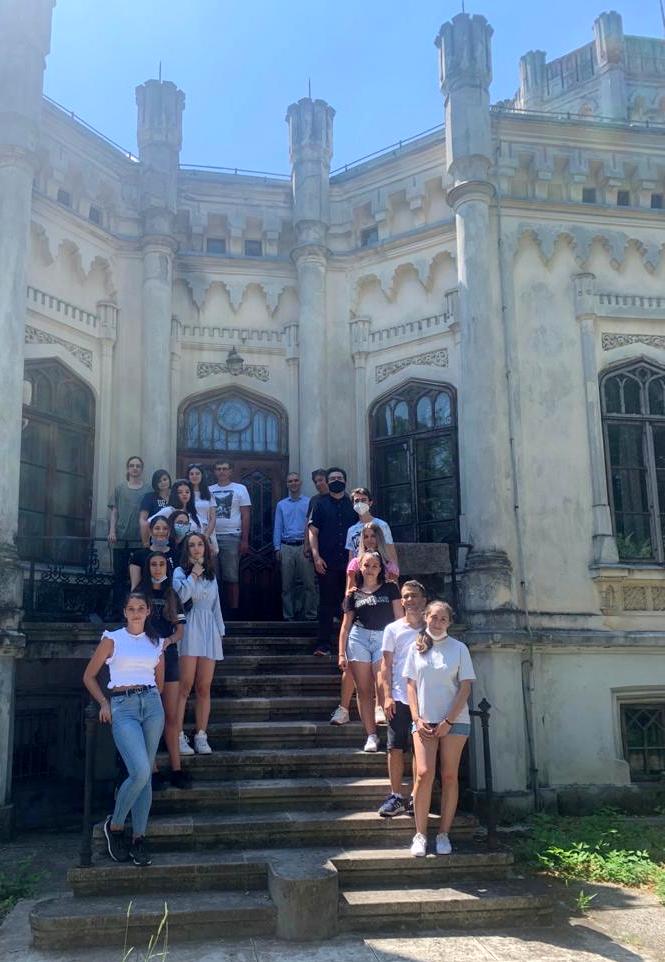
Asteroid (248370) 2005 QN173 became active
The asteroid (248370) 2005 QN173, located in the main asteroid belt with an orbital period of 5.37 years, has a comet-like appearance. The tail appeared around July 7, 2021, and was discovered in images from the ATLAS automated system. The tail is due to a collision or disintegration caused by its rapid rotation. Following this event, the asteroid is periodically observed from the Berthelot Astronomical Observatory of the Astronomical Institute of the Romanian Academy. We present an image from August 8, showing the short tail of the asteroid (credit: A. Sonka).
Published on Aug 10, 2021

ASTROFEST 2021
The Astronomical Institute of the Romanian Academy (AIRA) took part on July 23-24, AstroFest 2021 event, organized by the Știință & Tehnică team and the SCIENCE & TECHNOLOGY Association in Crângași Park. The purpose of this event was to popularize astronomy and space sciences, through presentations accessible to the general public (experiments, demonstrations, games, etc).
The Astronomical Institute participated with astronomical instruments, informative posters and other materials designed to increase the attendants interest in science. The relatively good weather allowed for astronomical observations on various objects such as the Sun, Moon, Planets and Stars. During the event, the AIRA team also engaged with the public on the topic of science instrumentation, on Q&A sessions on the stage, and provided details about the Institute's main scientific activities.
(AIRA Team: Octavian Blagoi, Simon Anghel, Ruxandra Toma, Ioana Boaca)Published on Aug 03, 2021
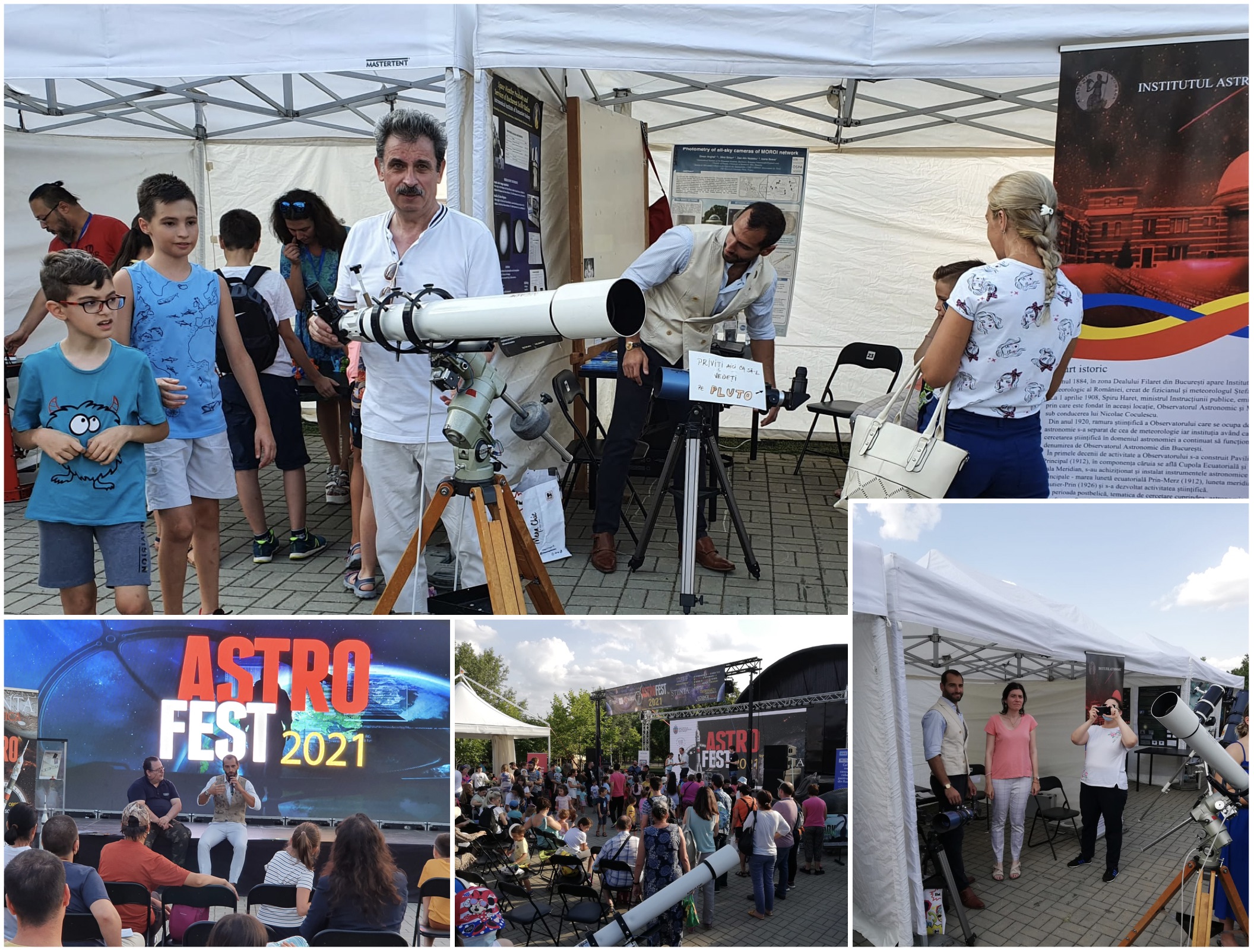
Solar Eclipse from Jun 10, 2021
An annular eclipse was visible from the northern hemisphere on Jun 10, 2021. The annular eclipse happens when the Moon covers the center of the Sun leaving a small edge uncovered.
In Romania, it was visible as a partial eclipse (0.1% to 2.2%) with maximum coverage in the north-western part of the country.
The Cluj-Napoca Astronomical Observatory observed this eclipse with a maximum coverage of 0.8% starting at 13:27 and ending at 14:27.
The image shows the maximum of the eclipse as seen from Cluj (46° 45' 29.45" North and 23° 35' 17.43" East) at 13:57. The image was obtained with a Coronado SolarMax Telescope (D=60mm, F=400mm) using an Hα filter.
Sun's activity is currently increasing. There were two active regions on the Sun. In this image there is a beautiful prominence visible on the eastern limb.
Published on Jun 10, 2021

Star Formation Rates in Galaxies
Our colleague dr. Cristina Popescu has written a chapter in a book called Star Formation Rates in Galaxies, published by Cambridge University Press. The topic dr. Cristina Popescu describes was firstly introduced by her in the field.
This book is is aimed at postgraduate students, young researchers and astrophysicists. Each chapter describes the state-of-the-art methods used to measure the intensity of recent or on-going star forming activity in galaxies and has been written by world-leading experts in the field.
"When I first received the invitation to write one of the book’s chapters, on the very topic that I first introduced to the field and then developed during my career, I was really thrilled." — UCLan's Professor of Astrophysics Cristina Popescu
Professor Popescu is President of the International Astronomical Union's Commission J1. She specialises in the investigation, formation and evolution of galaxies by studying the detailed physical processes that take place in these complex systems, related to the interaction of radiation with dust, gas and cosmic rays.
More details can be read at: UCLAN News Section
Contact: cpopescu (at) astro.ro
Published on May 28, 2021
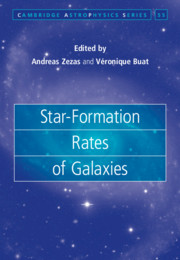
Open Position: Director of the Institute
The Section of Mathematical Sciences of the Romanian Academy announces an Open Position for the Director of the Astronomical Institute. Visit the Romanian Academy web page for more details.
Published on Mar 15, 2021
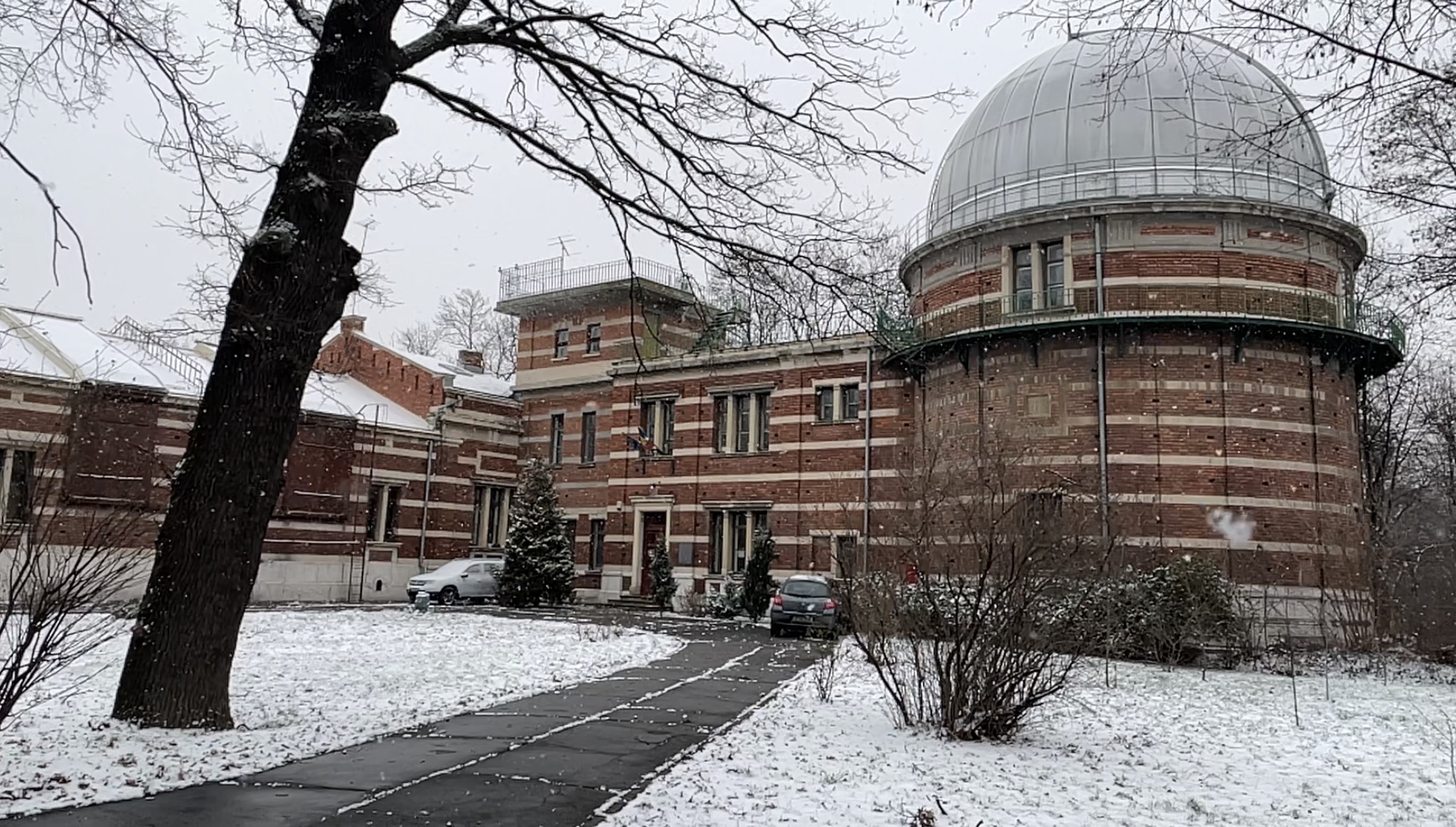
Potentially Hazardous Asteroid Apophis
The Potentially Hazardous Asteroid (99942) Apophis was observed during the interval: 18:09:36 – 23:46:14 UTC 03/04.03.2021 at the Astronomical Observatory Cluj-Napoca, Feleacu Station. The asteroid was as a distance of only 0.1187 AU, just 2 days before the close approach to Earth due 2021.03.06. This is the last favorable opportunity for observing Apophis before its closest approach of 2029.04.13.9 at a distance of just 0.0002541 AU. An impact with Earth on 2029 is completely excluded.
The telescope used was a PlaneWave Instruments CDK 24” (D=610 mm, F/D=6.5), currently the largest Romanian telescope. The detector was a SBIG STL 6303 CCD camera (3072x2048 pixels, 9x9 micron/pixel) using VRI Johnson-Cousins filters. The exposure time for each filter was 25 sec. The movie stretches 10 R filter exposures per second (resulting in a 17 second movie for more than 5.5 hours of observations).
Astrometric and photometric data on (99942) Apophis is recorded during this close approach from Feleac and Berthelot Observatories on every clear night.


Contact: vladturcu (at) academia-cj.ro, sonka (at) astro.ro
Published on Mar 05, 2021
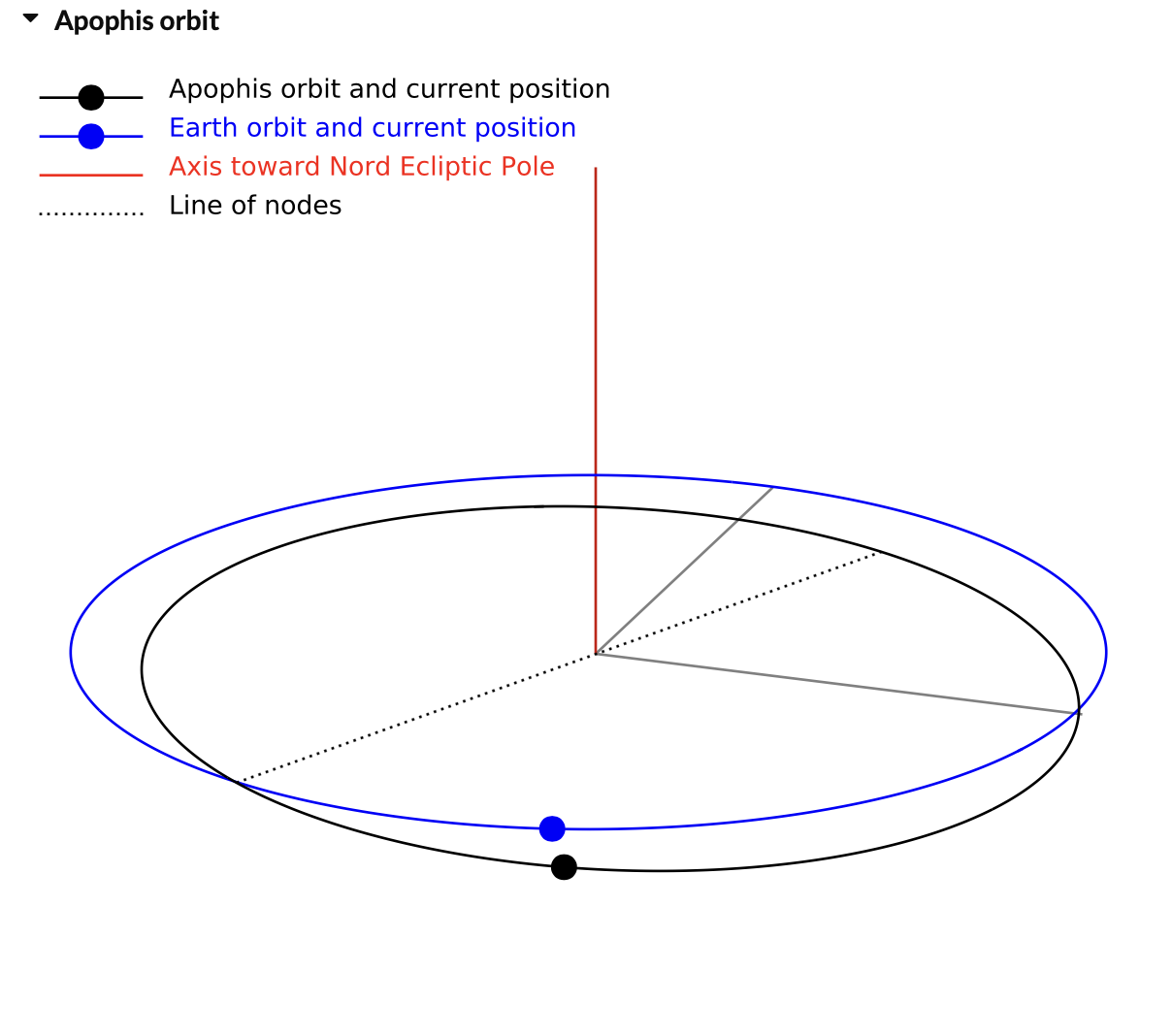
Spectacular fireball above Romania
A spectacular fireball was detected by the Meteorite Orbits Reconstruction by Optical Imaging network (MOROI) in the morning of 3rd of March, 2021, at 05:58 local time (03:58:39 UT). The bolide flared over Suceava county for 5 seconds, reaching a maximum stellar magnitude of -11 (+/- 1). The meteor brightness matched that of the Moon, which was 85% illuminated at the time.
As seen from the city of Suceava, the object traveled from West towards East, displaying fragmentation features in the second half of the atmospheric path. Four other stations in Romania have detected the bolide. From Bacău and Bârlad, the frames during the maximum brightness were saturated, while data from Baia Mare station (250km away) allowed a proper measurement of luminosity, due to the higher extinction close to the horizon. Investigations for trajectory and orbit reconstruction are underway.
Currently, MOROI network is in the process of integration with the international FRIPON network (Fireball Recovery and InterPlanetary Observation Network). The end goal is to fill the gaps between asteroid and meteorite science, by studying the meteoroid interactions with atmosphere, and computing the location where the surviving fragments might land.
contact: simon.anghel (at) astro.roPublished on Mar 04, 2021
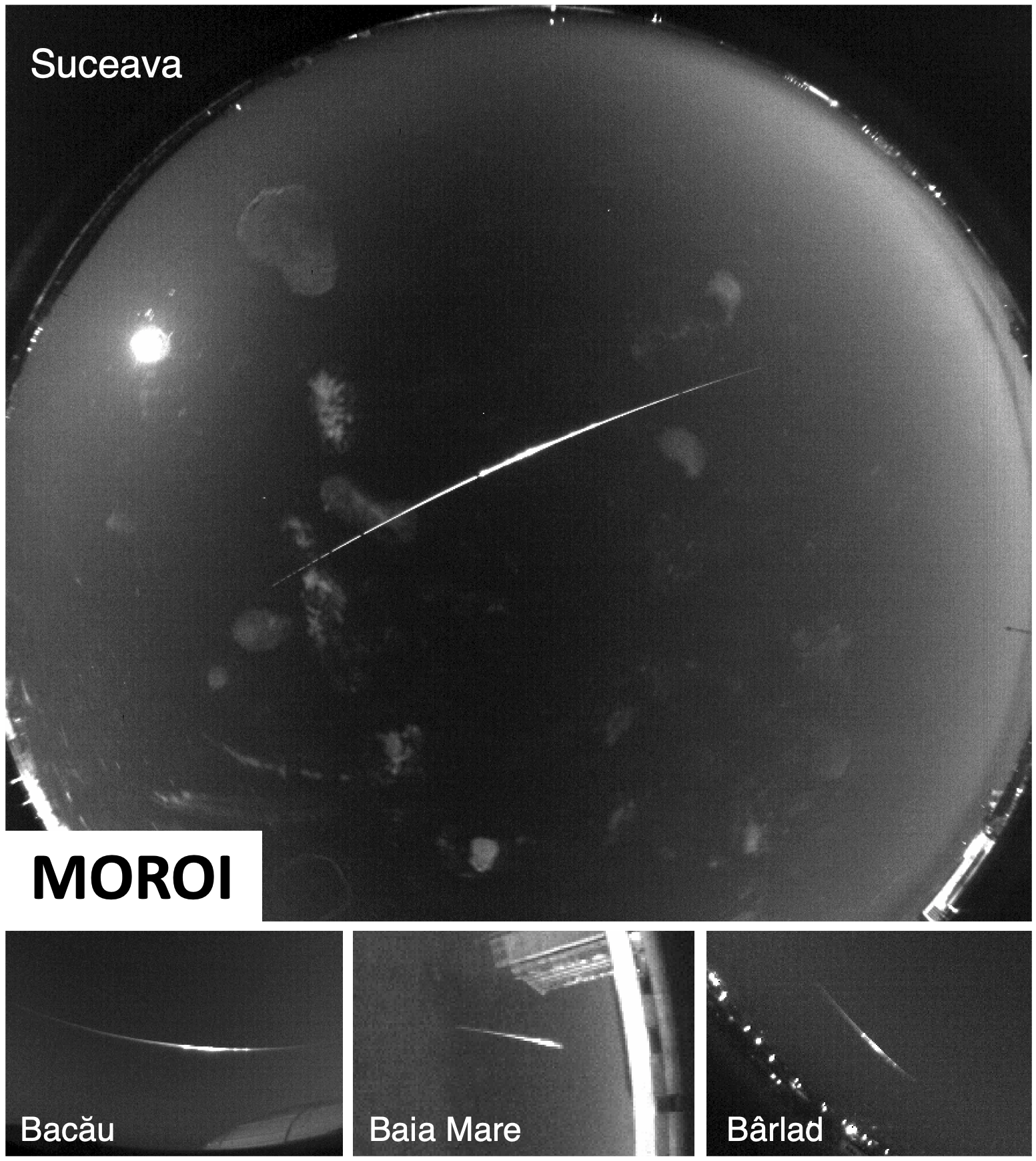
Solar Active Region Observed from AIRA
The first active region of the solar cycle 25 was observed on December 20, 2016. The minimum activity period between solar cycle 24 and the current cycle was approximately double compared to other similar periods.
After almost 4 years, solar cycle 25 is picking up pace!
The active region NOAA 12776 became visible on October 15 and passed the western solar limb on October 27.
In the right-hand side image this region is observed by the Bucharest Observatory on October 21 when it was situated at 14° southern latitude and 45° western longitude. On October 24, a B2.3 class flare initiated from this region was recorded by GOES.
Between October 27 and November 2 another active region (NOAA 12778) was visible on the Sun and generated several C-class flares.
The solar activity as seen in the sunspot number, the number and intensity of flares, as well as other eruptive phenomena, will constantly increase over the next few years.
Today we can see two active regions on the Sun and the sunspot number is 21.
Published on Nov 05, 2020
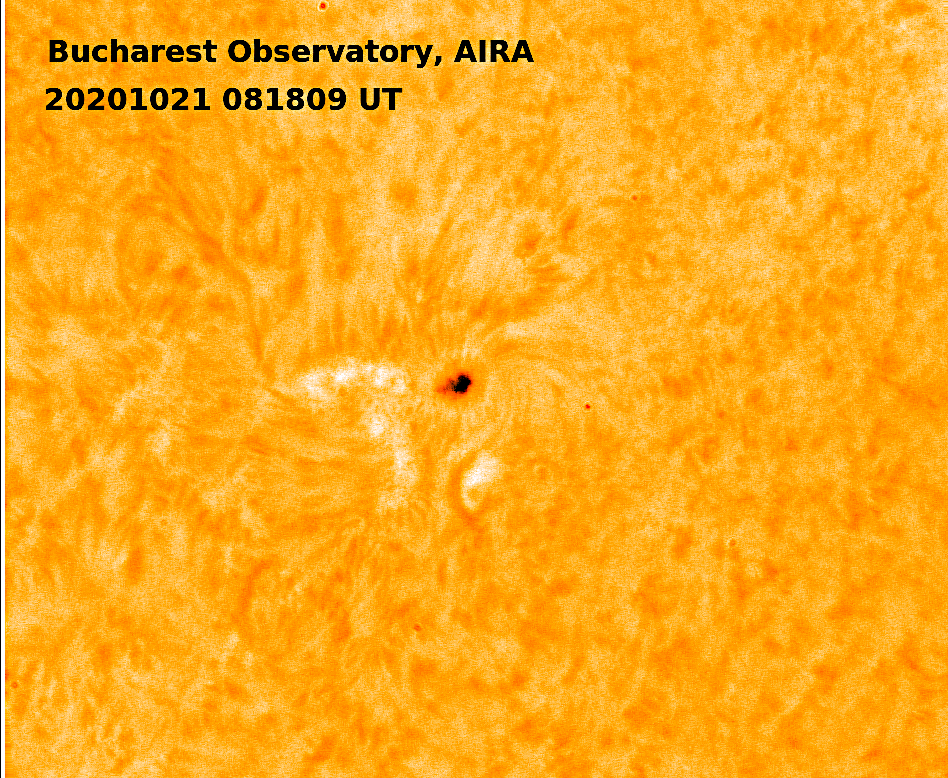
The unusual tail of comet 246P/NEAT
Berthelot Observatory Survey recently reported the detection of an unusual tail of comet 246P/NEAT. The discovery, submitted to Central Bureau for Astronomical Telegrams, was published as CBET 4799. The CBET is available bellow:
Further to CBET 4793, A. Sonka, M. Birlan, and A. Nedelcu, Berthelot Observatory, Astronomical Institute of the Romanian Academy, report on the unusual shape and tail of comet 246P from CCD observations obtained with a 0.38 m f/8 reflector (39'.8 x 28' field-of-view) at Berthelot Observatory on May 12, 21, and 23. A 60-s unfiltered exposure taken on May 23 shows an obvious 3' fanlike tail in p.a. 292.8 degrees, while 46 stacked images having a total exposure time of 0.8 hr shows a long tail visible at p.a. 296.8 degrees; the tail is at least 28' long and shows a 5'.4-long discontinuity, starting at 3' from the comet's coma (after the discontinuity ends, the tail continues and possibly extends outside the field-of-view. The comet's tail is also visible in images taken on May 12 and 21 at p.a. 296.8 degrees. The discontinuity is 5' long on May 12 and 8' long on May 21. Additional unfiltered CCD total-magnitude and coma-diameter measurements for comet 246P: Mar. 20.27 UT, 15.0, 40" (H. Sato, Tokyo, Japan, 0.25-m astrograph near Mayhill, NM, USA; fan-like tail 1'.5 long toward p.a. 250-290 degrees); May 29.44, 14.6, -- (K. Kadota, Ageo, Japan, 0.25-m reflector). Visual total-magnitude and coma-diameter estimates by P. Camilleri, Katherine, NT, Australia (0.40-m reflector): June 9.47, 13.8, 1'; June 14.45, 14.0, 1'.
contact: sonka (at) astro.roPublished on Jun 19, 2020
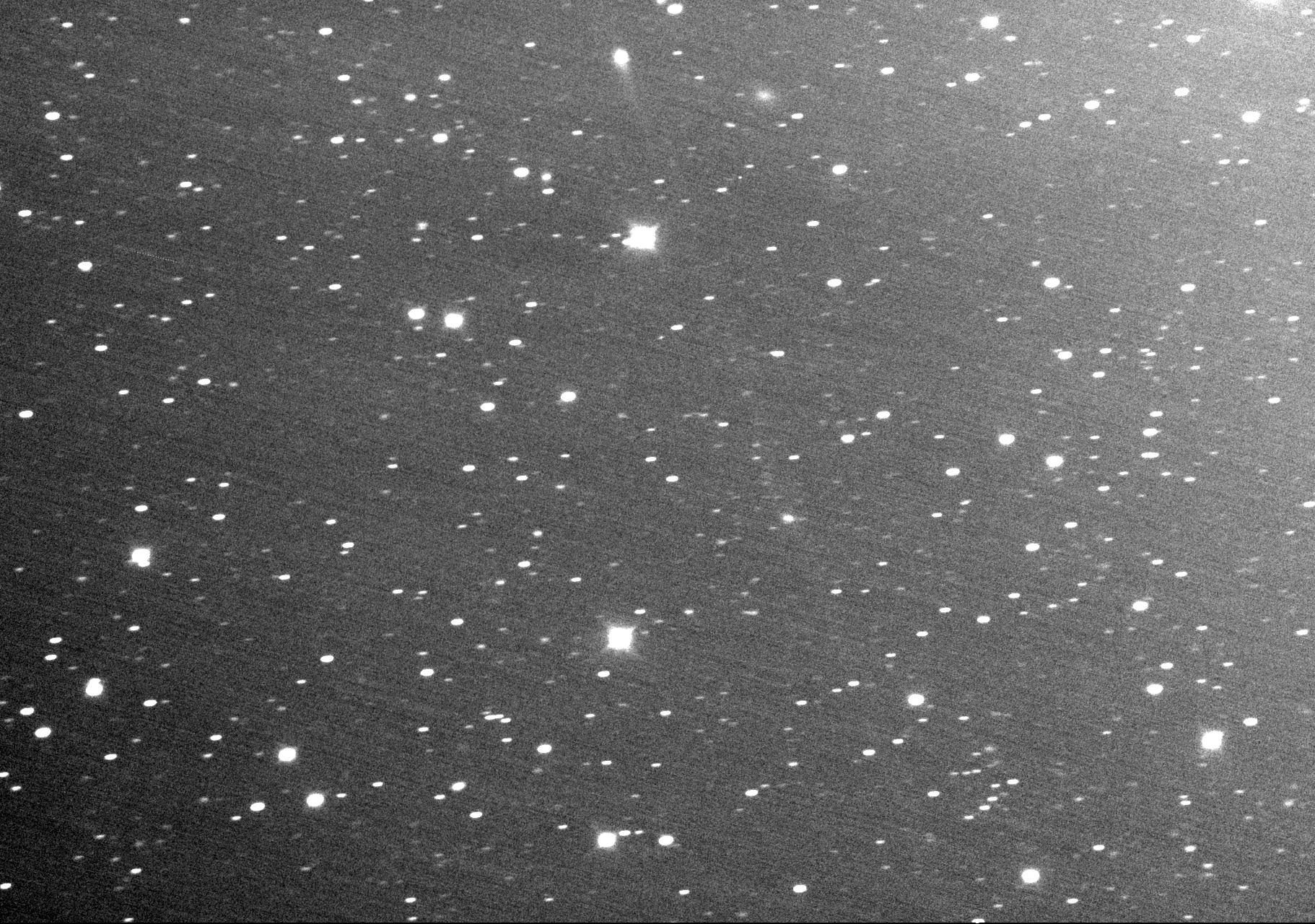
Asteroids in Isolation online conference
Published on Apr 21, 2020
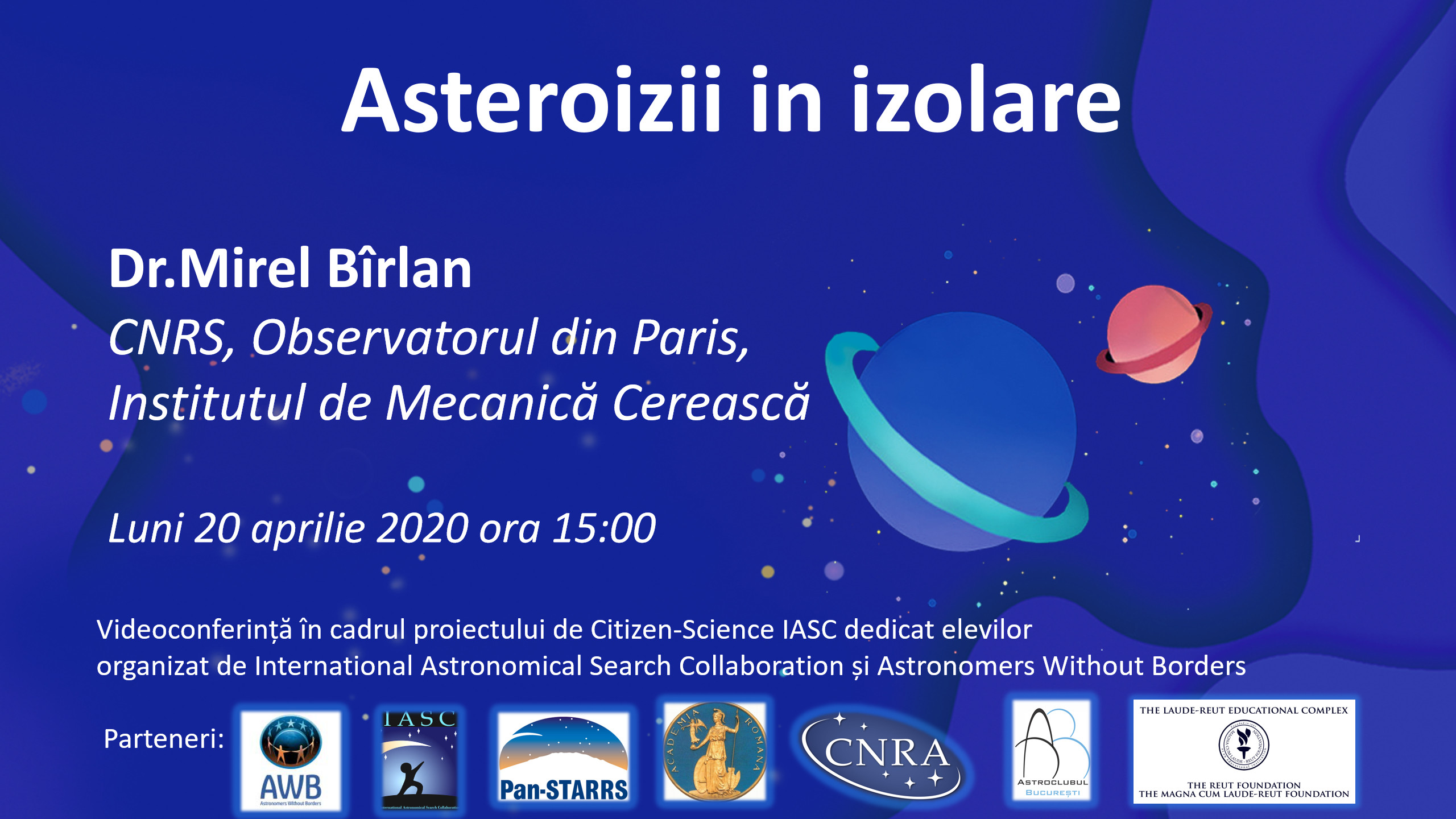
Different Education - Sun
The Astronomical Institute and the Astronomia 21 organisation are contributing to #StayAtHome Covid19-related state.
In the frame of “Școala altfel” – “A different type of learning”, on March 31, 2020, Diana Beșliu-Ionescu has presented “The Sun and its consequences on life” to a class of fourth grade students from ”Grigorie Ghica Voievod” Gymnasium School. Using Google Meet, available on the G Suite for education, students were able to follow our researcher’s presentation.
They have learned about the Sun’s position relative to our Galaxy, its evolution and structure. The students were most impressed by the scaled difference between Sun and Earth sizes represented using a 60 cm diameter yoga ball and a very small metal marble. Students also watched high-resolution animation provided by DOT showing photospheric activity around an active region. The presentation described what is a solar cycle, which eruptive events may influence the Earth and produce geomagnetic storms. At the end students were told that their phones can show the space weather status using NASA/ESA’s Apps.
Published on Apr 13, 2020
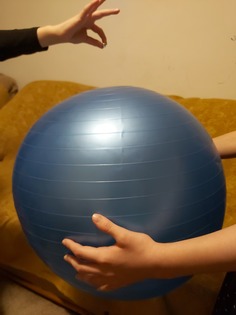
Romanian astronomer helps unlock the mystery of "the golf ball asteroid" Pallas
Dr. Mirel Birlan, researcher at Paris Observatory and the Astronomical Institute of the Romanian Academy is part of a team of researchers that has looked up-close at the Pallas asteroid, the third largest object in the asteroid belt, to better understand its unusual tilted orbit. The team discovered that the surface of the asteroid is so cratered, that researchers dubbed it “the golf ball asteroid”. The research team believes that the craters are a consequence of a violent period of collision during its history and that this could also explain the unusual inclination of its orbit that has puzzled scientists for centuries.
The Pallas asteroid is almost one-seventh the size of the Moon. For centuries, astronomers have noticed that the asteroid orbits along a significantly tilted track compared with the majority of objects in the asteroid belt. This inclination remained a mystery for a long time. Now a European team, led by principal investigator Pierre Vernazza from the Laboratoire d'Astrophyisque de Marseille in France, and including Dr. Mirel Birlan, obtained images of Pallas using ESO’s Very Large Telescope (VLT), an array of four telescopes, each with an 8-meter-wide mirror, situated in the mountains of Chile.
The high resolution images show a very cratered surface of the asteroid. In addition, the researchers created a reconstructed 3D model of the shape of the asteroid, revealing a heavily cratered object on the poles, but also at the equatorial regions. The researchers identified 36 craters larger than 30 kilometres in diameter, covering more than 10% of its surface — proof that Pallas experienced a violent period of collision during its history, two to three times more intense than the one of other large asteroids like Ceres or Vesta. The heavily cratered surface explains also the preservation of its initial shape after the formation. This collisional period could also explain Pallas’ tilted orbit.
The images of the asteroid have also revealed a bright spot on the surface of Pallas. The most probable explanation of this finding and its origin is that Pallas has large deposits of salts at its surface, most probably formed by a mixture of water and silicates. The investigations carried out by the European team have also led to the discovery of the Pallas family of asteroids, a cluster of small asteroids. Simulations of impacts with Pallas suggest that this family could be the result of a violent collision about 1.7 billion years ago by an object having a diameter between 20 km and 40 km. Asteroid 3200 Phaeton, identified as the source of the Geminids meteor shower, which is observed on Earth in December, is part of the Pallas family, and could provide clues to understanding the origin of the parent body, Pallas. Thus, observing meteors and collecting meteorites coming from Phaeton could partly solve the history of Pallas.
The findings were published in Nature Astronomy https://www.nature.com/articles/s41550-019-1007-5.
Published on Feb 20, 2020
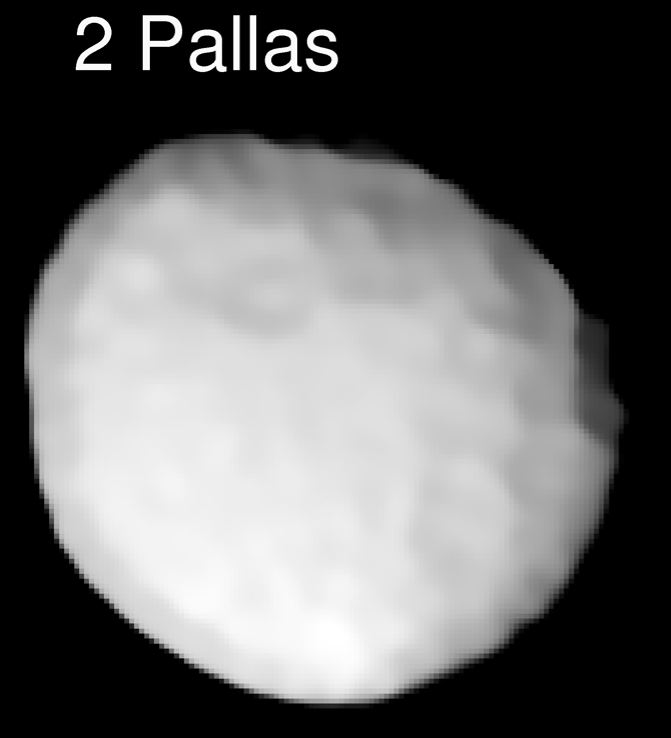
International Astronomical Union celebrates the Romanian astronomer, Nicolae Donici
Published on Feb 14, 2020

Jean Dragesco at his 100th anniversary!
Jean Dragesco was born on the 27th of April 1920 at Cluj. When he was only 15 years old, he was already observing the Moon through a self-made 2″ telescope. Around the same age, he read an outstanding number of astronomy books written in French and this informational pathway made him acquire new scientific knowledge, the building blocks of his future and dedicated life for science.
At 17 years old, he built another telescope, a 4″ Newtonian, which had a mirror made in Stuttgart, Germany He built another mirror, still spherical, but 6″, and finished a good Altazimuthal Newtonian telescope. At 19 years old, he became "officially" a contributor to "Mars" section of Société Astronomique de France. In the same year, Jean Dragesco founded the first organization for the young astronomers in Romania called the Astronomical Society for Young Astronomers and he became the editor of the monthly publication Urania. The next year, he founded the Microscopy Association and started to publish the Micron journal.
Jean Dragesco left Romania for France when he was 21 years old. His father, Ion Dragu, was a philosopher, writer and diplomat; he worked for the Romanian Embassy in Paris as the Head of Press Office, during that time, Eugène Ionesco was Press and Cultural Secretary within the institution. Once in France, an excellent 3″ telescope came to being out of his own hands. After he became a member of Société Astronomique de France and an active observer of "Mars" section there, he got the permission to do observations withe the 6″ and 7.5″ (152 and 190 mm) telescopes at Paris Observatory. It is also the moment when he started to collaborate with several very knowledgeable and dedicated astronomers who latter on became professionals in the field.
At 22 years old, he discovered a gap between the rings B and C of planet Saturn. However, even if the same discovery was made a few weeks later by the distinguished French astronomer Bernard Lyot, the same who invented the coronagraph, the new discovery was attributed to him and not to Dragesco and it is today known as the ''Lyot division".
Published on Jan 26, 2020
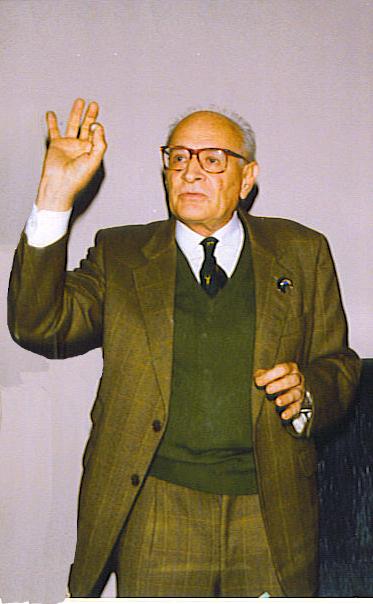
Berthelot Observatory receives MPC observatory code
Berthelot Observatory is a remote observing station of the Astronomical Institute. Built on General Berthelot village, Hunedoara, on a protected area belonging to the Romanian Academy, the observatory is operated in remote mode from Bucharest. Following the first light in mid-November 2018, the observatory is currently involved in near-Earth objects photometric surveys and tracking and surveillance activities in the framework of EU-SST programme of the European Commission.
The telescope is a RC 14.5'' F/7 Optical Guidance System on a fast, 8°/s, equatorial mount able to track objects on medium Earth orbits. The field of view, using an SBIG STL11000M CCD camera, is of 44'x30'.
Berthelot Observatory successfully concluded the first common European exercise of space surveillance and tracking taking place from 15 to 24 July 2019. Astrometry data for the four assigned targets was provided daily in TDM format.
On December 6th, Berthelot Observatory received the code L54 from the International Astronomical Union's Minor Planet Center (MPC).
Published on Dec 06, 2019
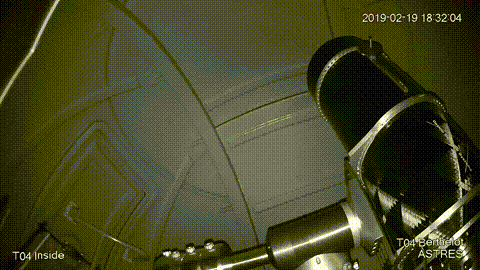
Astronomical Institute in ESA-funded projects
The Institute was recently involved in two new ESA-funded research and development projects. Cheia Antenna Retrofit Phase II is a project led by RARTEL Telespazio, a Leonardo and Thales company, aiming to include the 32 meters antennas presently available at the Cheia Satellite Ground Station, in the context of European SSA programme. The Institute will assist RARTEL in all the project phases (design, software development, integration and testing) for all the aspects related to the tracking services which shall be supplied through the newly developed radar infrastructure.
SYNOPTES project, led by Romanian InSpace Engineeering startup and having both Cluj and Bucharest observatories as partners, is developing a GNSS-based real-time clock (RTC) system for the temporal synchronization of SST ground based observations. Berthelot and Feleacu astronomical stations are the testing beds and on-sky validation infrastructures of the technical solution. Contact: nedelcu (at) astro.ro)
Published on Nov 19, 2019

Bucharest Science Festival 2019
Bucharest Science Festival opened the gates of the Astronomical Institute of the Romanian Academy for the general public, on the 27th of September 2019. The number of visitors exceeded any estimations being around 500 adults and children.
The Planetarium Hall was permanently full of people eager to learn who participated to several presentations with PowerPoint, video or specialized software support. The academic staff and astronomy teachers were: dr. Diana Beşliu-Ionescu (AIRA), Daniel Berteşteanu (Bucharest Astroclub), Florin Zăinescu (University of Bucharest).
A special moment of the evening was the live connection with France, as dr. Mirel Bîrlan (AIRA) interacted with the public through Skype directly from Paris Astronomical Observatory.
The activities included guided tours in the museum halls of the Institute - the Meridian Hall and the Equatorial Dome. There, some of the most important and spectacular astronomical instruments of Romania are preserved for future generations and they are used today for educational purposes.The tour guides - Sorin Marin (AIRA), Octavian Blagoi (AIRA) and Marian Naiman (Bucharest Astroclub) received many questions during the whole event, especially coming from the younger friends of astronomy and they answered to all of them.
The members of Bucharest Astroclub took part in organizing the BSF 2019 event. They displayed with great openness their instruments - several telescopes and their accessories and kindly instructed the public on how to watch the planets and the stars through them.
Published on Oct 04, 2019
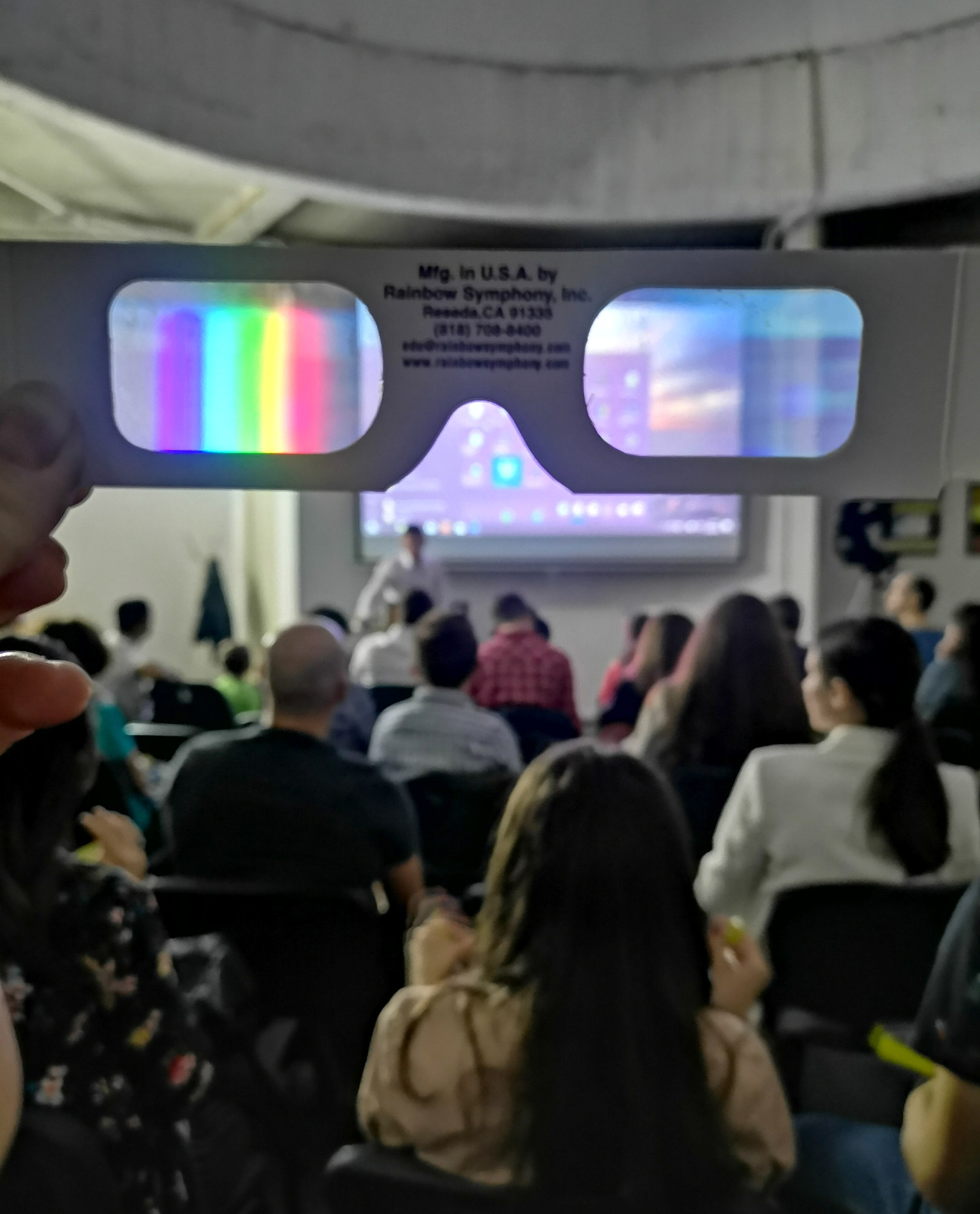
First Interstellar Comet
Using Berthelot Observatory in remote mode we imaged the first interstellar comet - C/2019 Q4 (Borisov) . Based on the current arc, the comet is on a hyperbolic orbit with an eccentricity of almost 3. The comet will reach perihelion on December 7, 2019. Berthelot Observatory will continue to monitor this objects in the following weeks. Contact: sonka (at) astro.ro.
Published on Sep 14, 2019
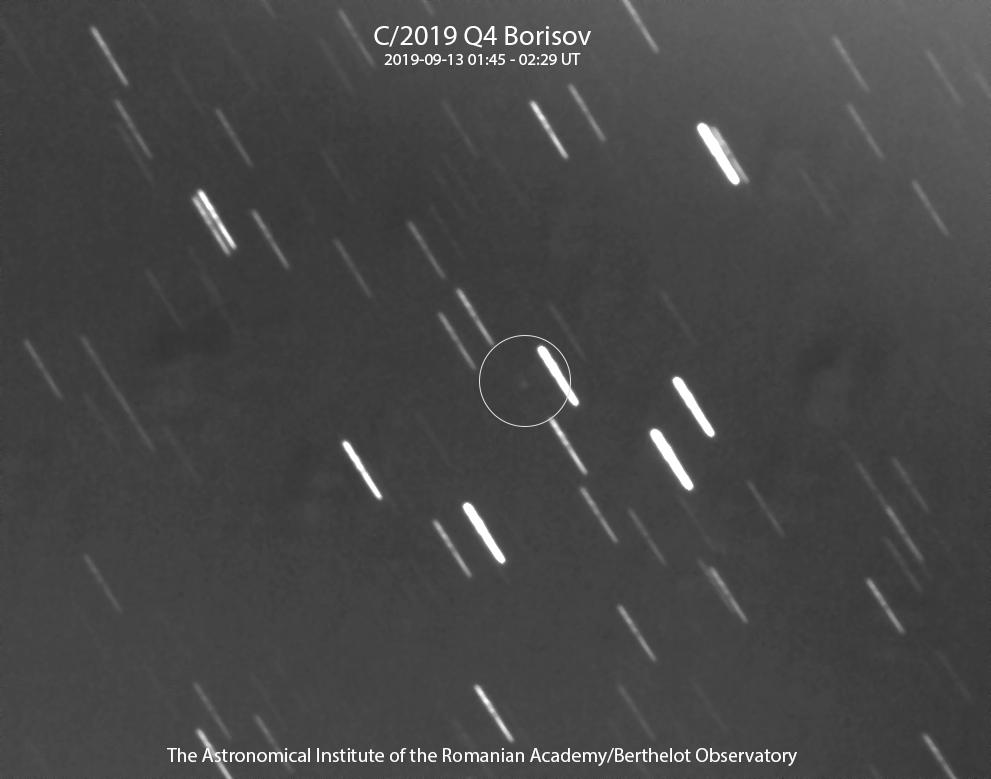
Romanian Astronomical Journal
Romanian Astronomical Journal is an international journal covering the fields of:
Romanian Astronomical Journal appears twice a year since 1991 and three times a year since 2015. This Journal publishes original peer reviewed articles, brief reports, special communications, theoretical and observational works. You are invited to submit your original research to roaj.:at:.astro.ro
Ownership and management:
Romanian Astronomical Journal is part of the Romanian Academy series of journals and it is published in hard copy by the Romanian Academy Publishing House. Subscription information could be found by contacting the journal at roaj.:at:.astro.ro. The publication of the online numbers is under the responsibility of the Astronomical Institute of the Romanian Academy, via the journal webpage
Published on Aug 04, 2019
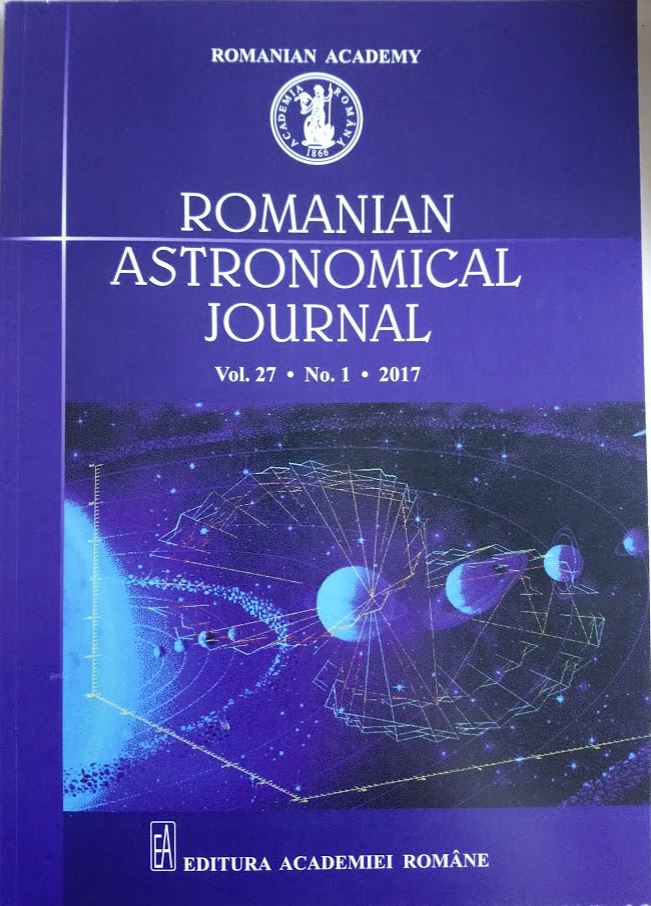
The mysterious active asteroid Gault
Asteroid (6478) Gault is a mysterious object; although it is in the Main Belt of asteroids, this object presents a cometary activity. During 2018 and 2019 astronomers detected a tail of matter in the asteroid's motion around the Sun, most likely due to the sublimation of light elements in its composition. The phenomenon involves the particles of dust and gas that reflect sunlight.
An international team that includes researchers from MIT-US, Astronomical Institute of the Romanian Academy, Weizmann Institute of Science in Israel, Observatoire de Paris-France, Lowell Observatory, Institute for Astronomy in Hawaii, and Northern Arizona University, has monitored the asteroid and obtained spectral and photometric data of Gault, between March and April 2019. Near-infrared spectral observations were performed in late March and early April 2019 with the 3 m diameter IRTF (NASA) telescope located in Mauna Kea-Hawaii; the spectral data were corroborated with the photometric data (Figure 1) obtained with the NEEMO-T05 telescope operated by the Astronomical Institute of the Romanian Academy.
Observational data confirm that the surface of the object contains minerals rich in silicium, most likely similar to the mineralogical composition of the asteroid family (25) Phocaea. The spectral data show variations of the spectral slope, decorrelated by a possible burst in object's cometary activity. This aspect can be explained by observing a new layer, unaltered by space weather, predominantly present on the surface of the object after the initial dust layer was entrained in the tail developed by the asteroid.
These results were recently published in the prestigious Astrophysical Journal Letters.
M. Marsset, F. DeMeo, A. Sonka, et al., "Active asteroid (6478) Gault: a blue Q-type surface below the dust?” accepted in Astrophysical Journal Letters. Contacts: Adrian Sonka, Astronomical Institute of the Romanian Academy, Mirel Birlan, Paris Observatory.Published on Aug 04, 2019
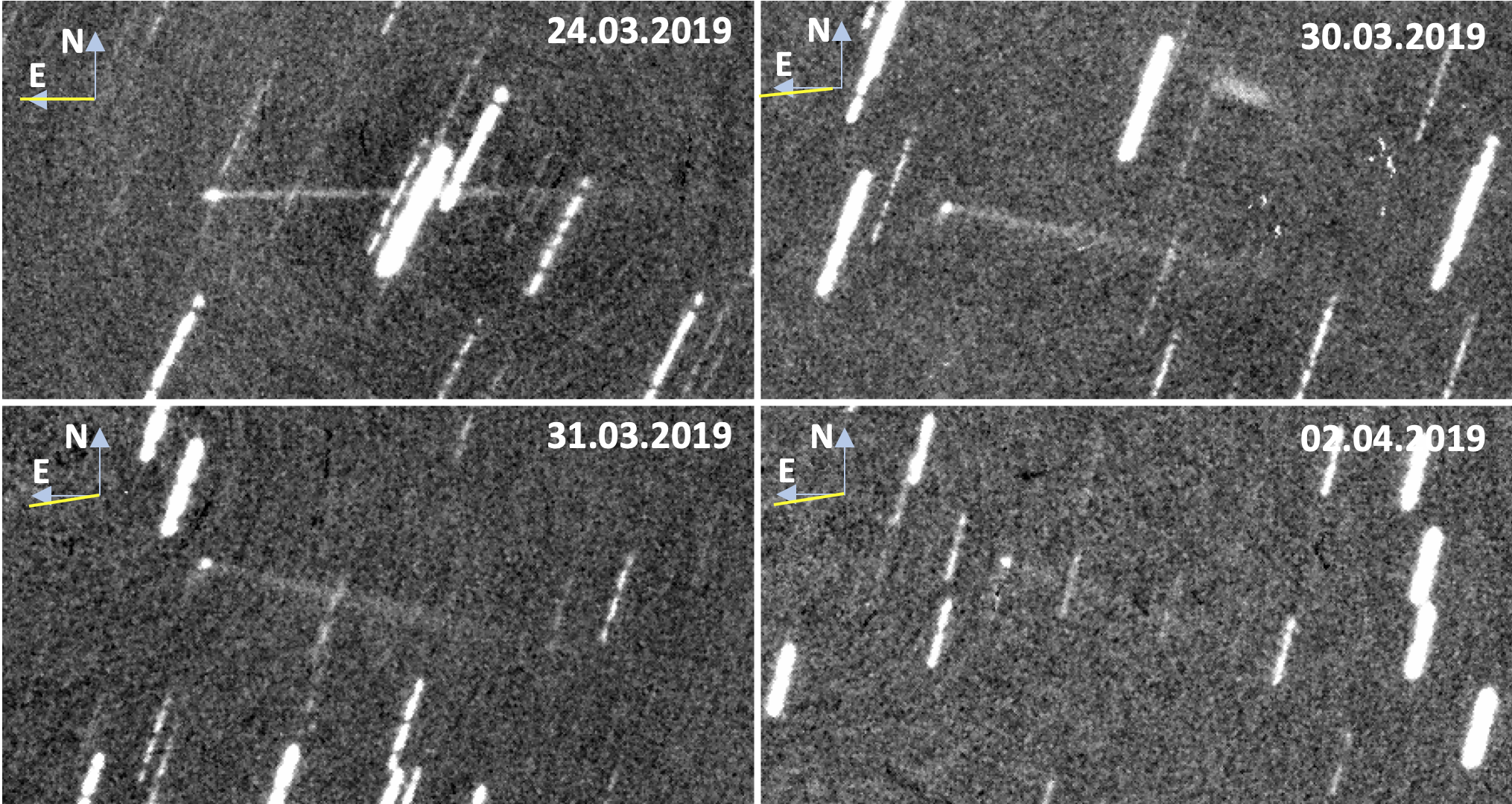
A new logistic regression model for geostorms forecasting
The Sun is the main driver of space weather. Space weather is determining the state of the Earth magnetosphere, which, in its turn, triggers geomagnetic storms.
Coronal mass ejections (CMEs) are pieces of the puzzle that drive space weather. They are one of the most important pieces, because of their large quantities of magnetised plasma released into the heliosphere. An Earth directed CME can hit the magnetosphere about 2-4 days after its initial detection, but not all CMEs arriving to Earth will produce a geomagnetic storm.
Numerous methods (theoretical, numerical and empirical) are being used to predict whether the CME will be geoeffective or not. In a recent paper, a team of researchers lead by D. Beșliu-Ionescu have proposed a new logistic regression model that will produce a probability, expressed as a number between 0 and 1, that a CME will be an event associated with a geomagnetic storm (Beșliu-Ionescu et al., 2019).
Published on Aug 03, 2019
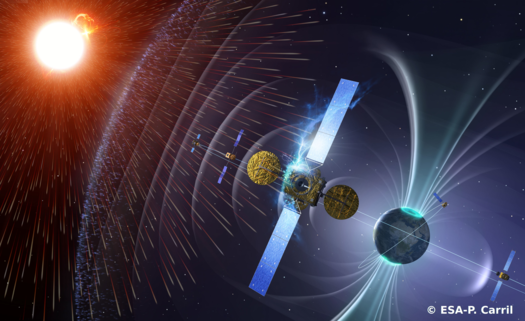
Petre Sergescu Award of the Romanian Academy
Thursday, December 13, 2018, the Romanian Academy has presented the 2016 Awards. Dr. Magda Stavinschi has been granted the "Petre SERGESCU" Award for her books "Nicolae Coculescu, A Life Among Stars" and "The Astronomy and the Romanian Academy".
A novelty in the award presenting by the Romanian Academy is the initiation of the "Petre Sergescu" Award, intended for rewarding the best history of science and technology papers, award that will be given following consultations and votes from all science departments of the Romanian Academy.
The award was established 125 years after the birth of the great science historian, both for showing the importance that sciences have in the contemporary society development, and for honoring the memory of the prominent scholars with outstanding contributions, starting from the precept expressed by Auguste Comte, saying that "to understand science, it is to know its history".
Published on Dec 16, 2018
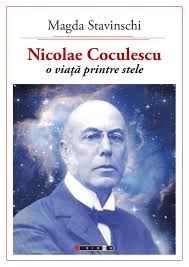
Interviews of our Institute Researchers
Recent interviews of our researchers:
Cristiana Dumitrache
Mirel Birlan
Adrian Sonka
Published on Oct 22, 2018
